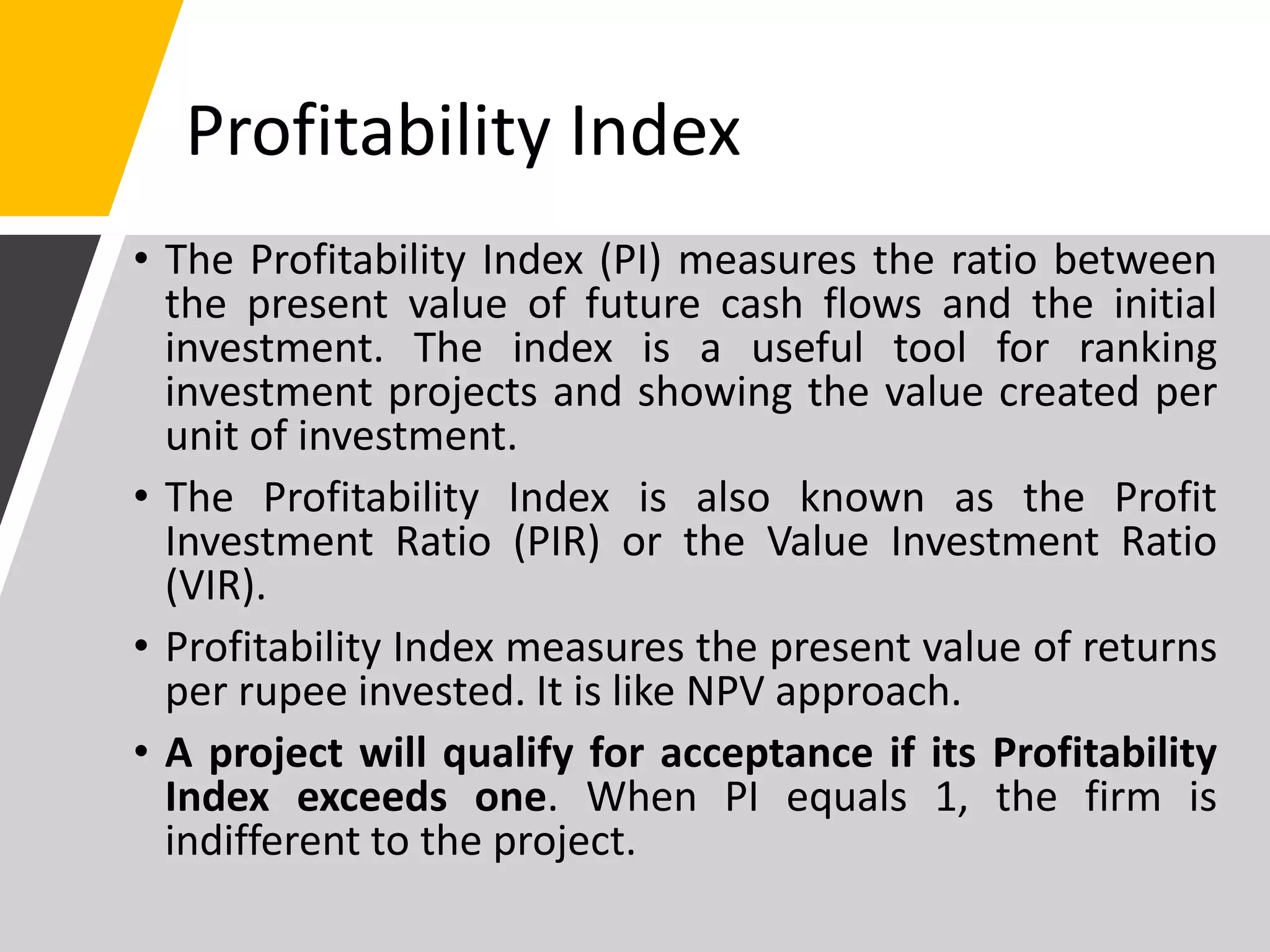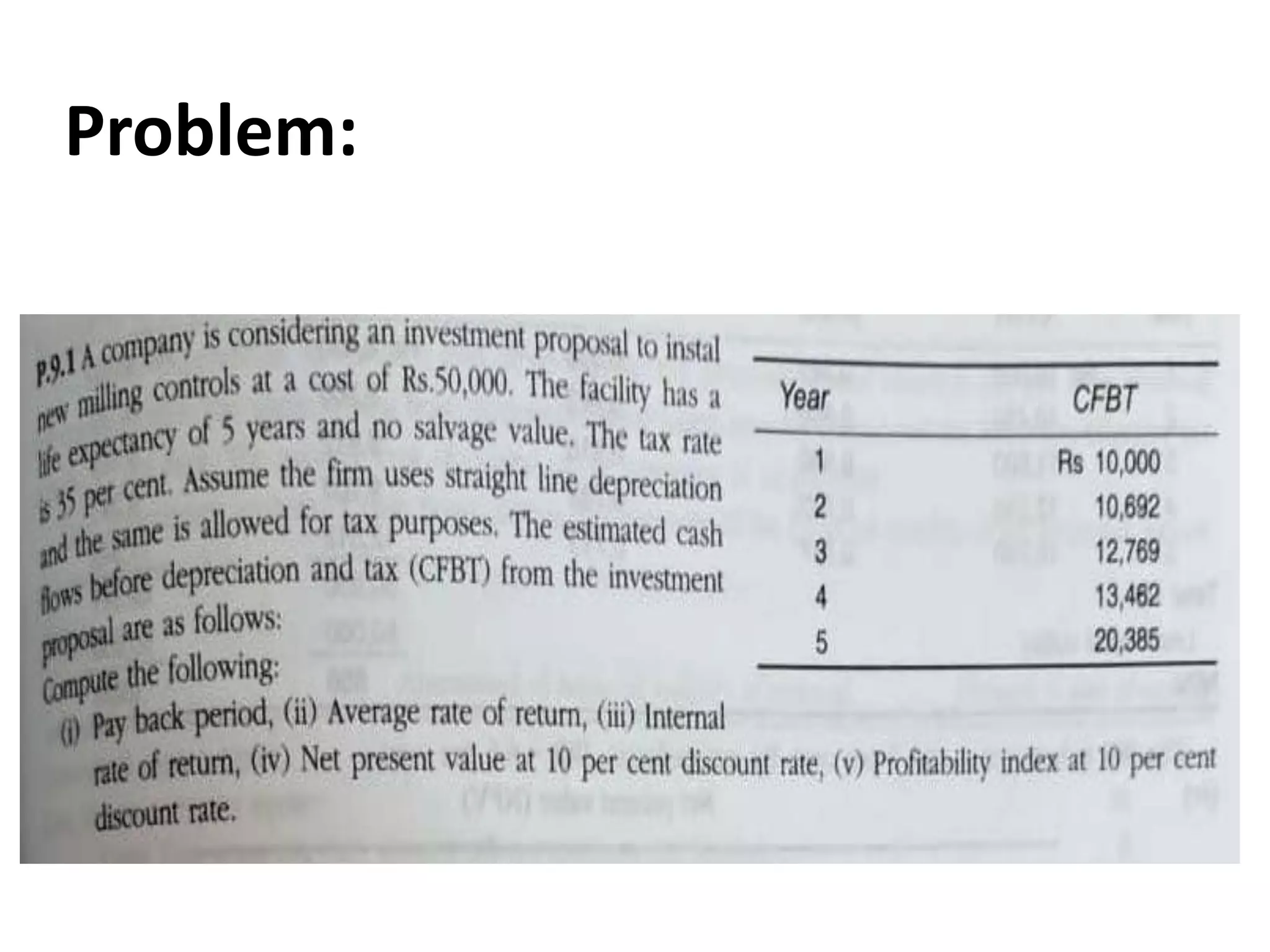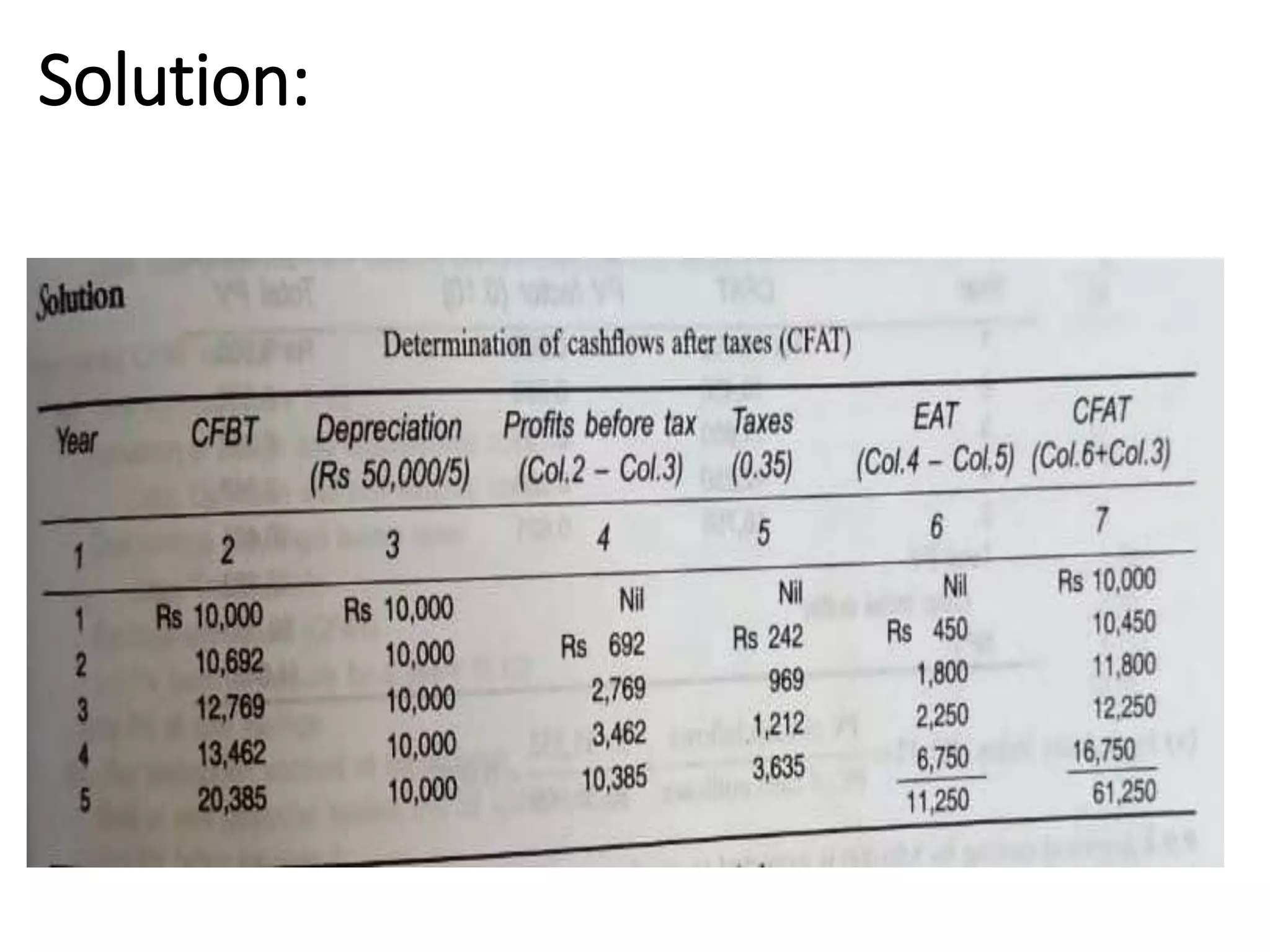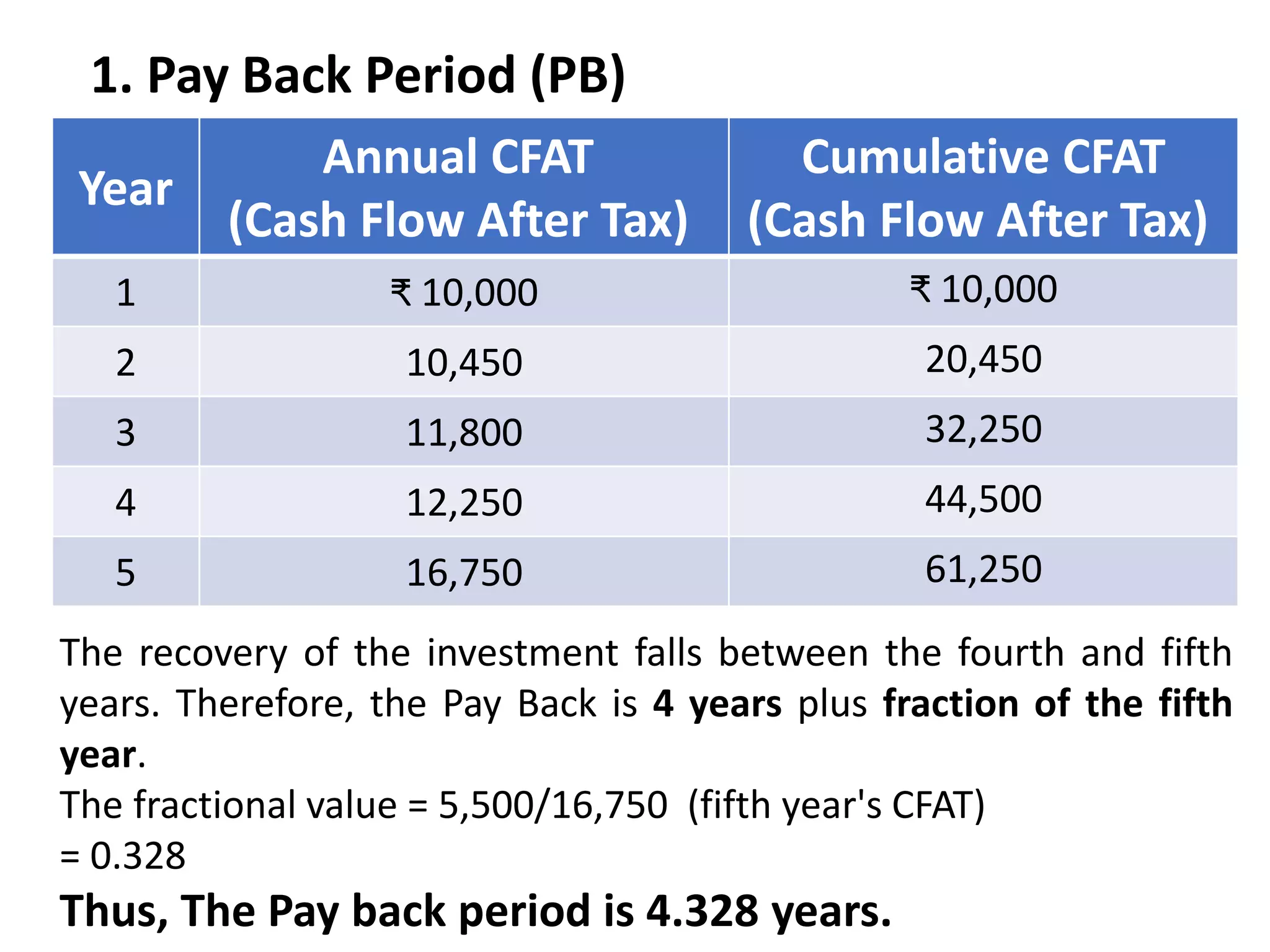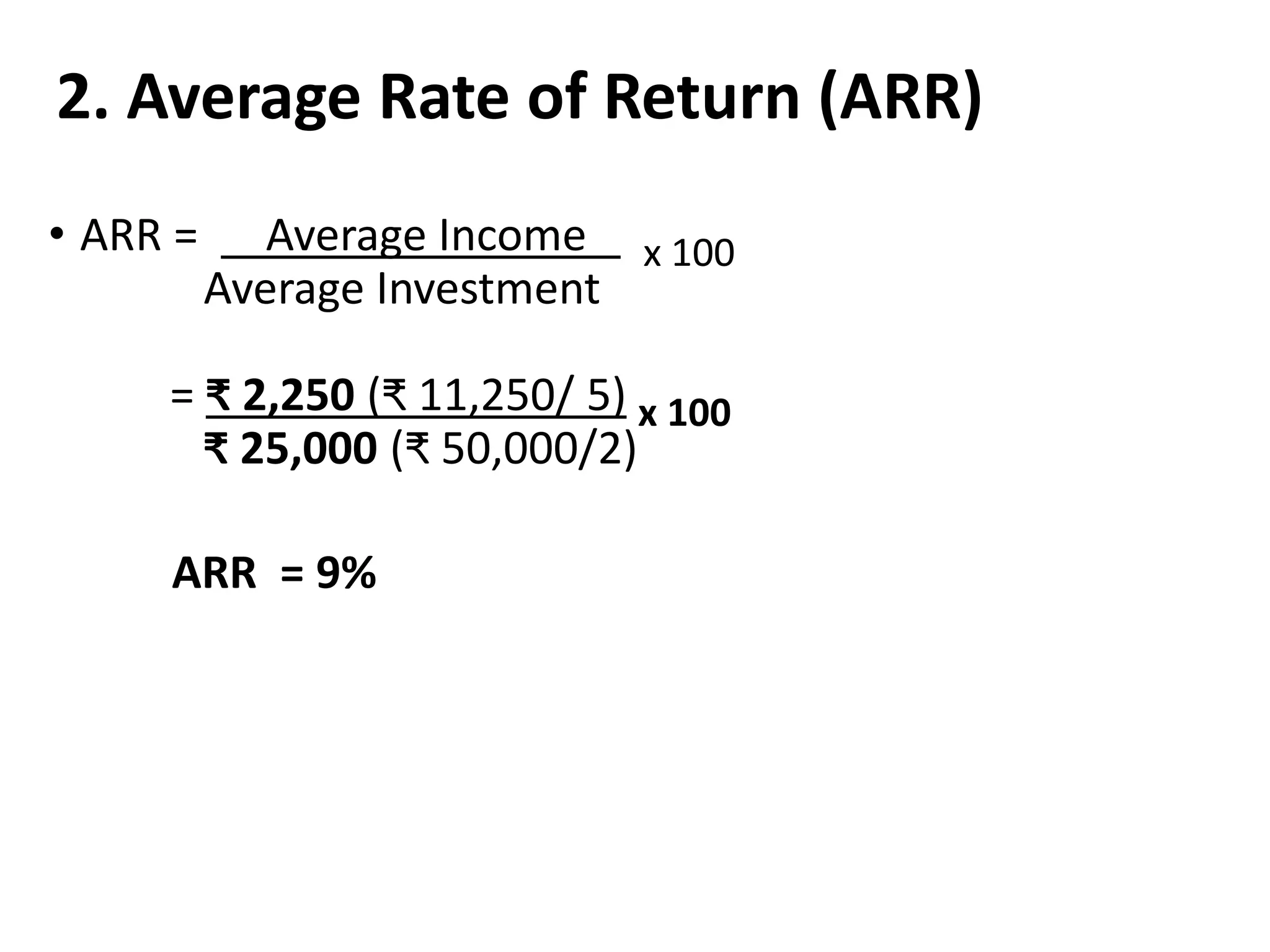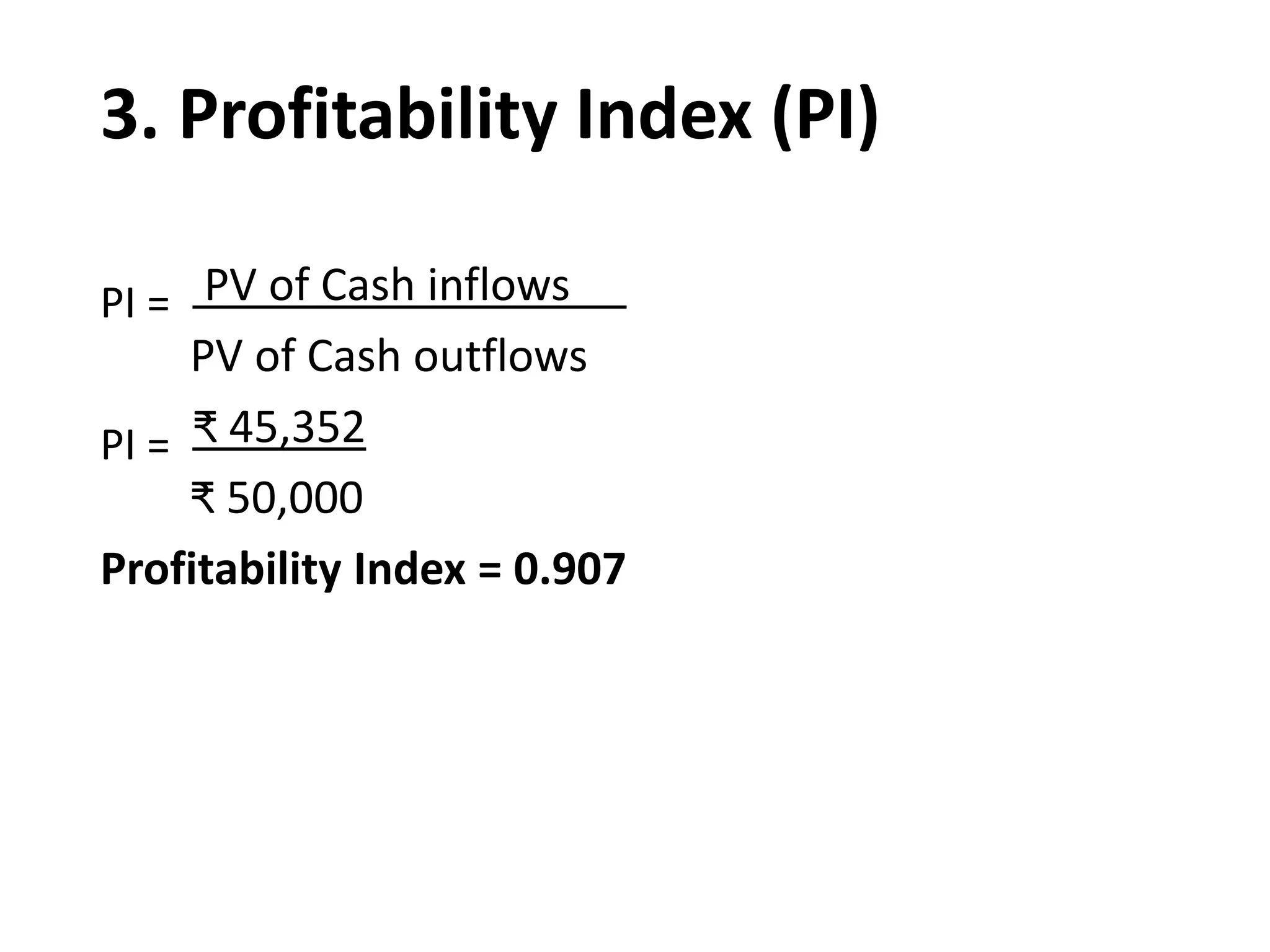The document discusses various concepts related to time value of money and capital budgeting. It defines time value of money as the principle that money available now is worth more than the same amount in the future. It then discusses practical applications of time value techniques in investment decisions. The document also covers compounding and discounting methods, formulas for calculating future and present values of single amounts and annuities. Finally, it discusses various capital budgeting techniques like payback period, accounting rate of return, net present value, internal rate of return, and profitability index.
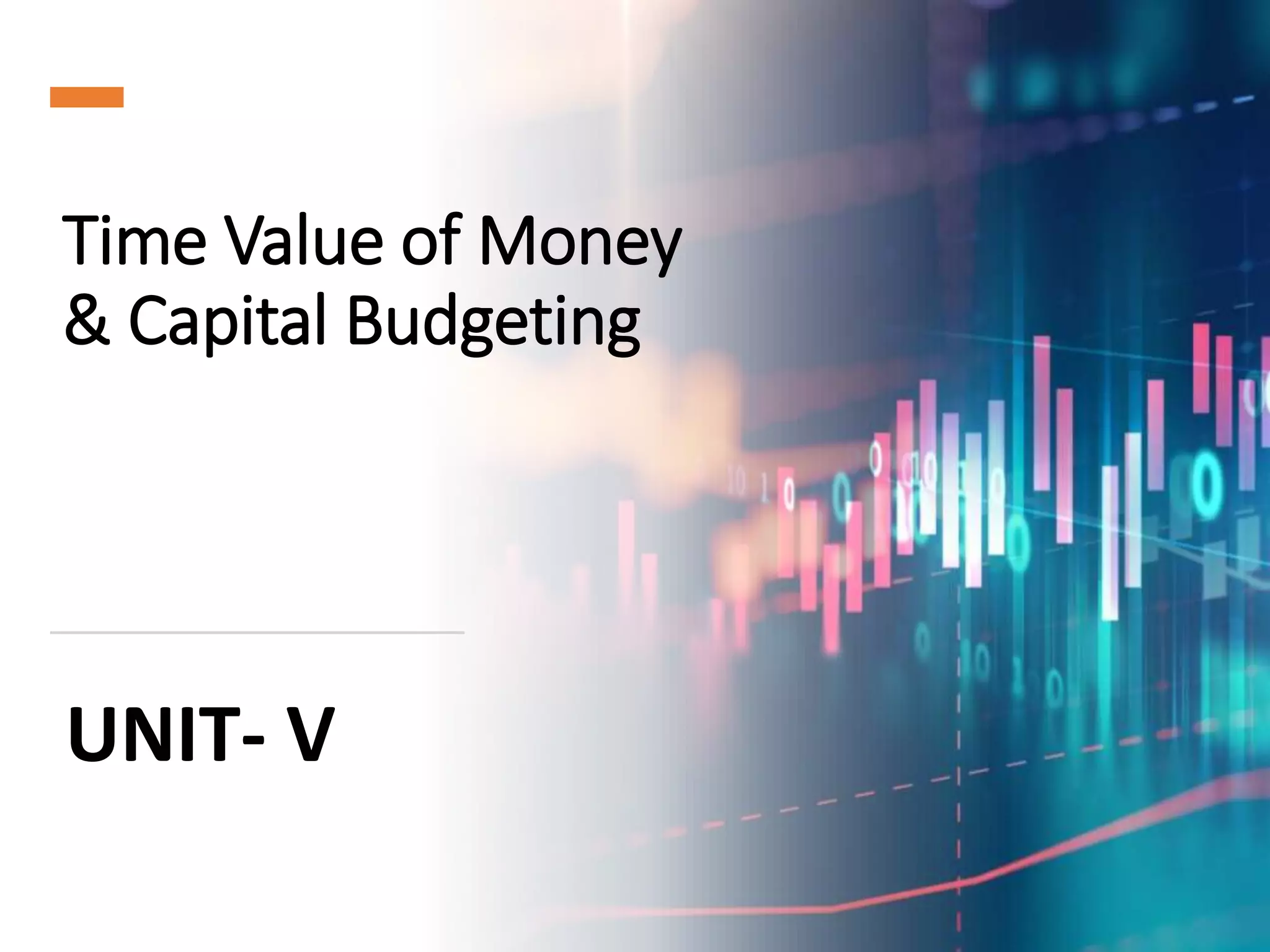
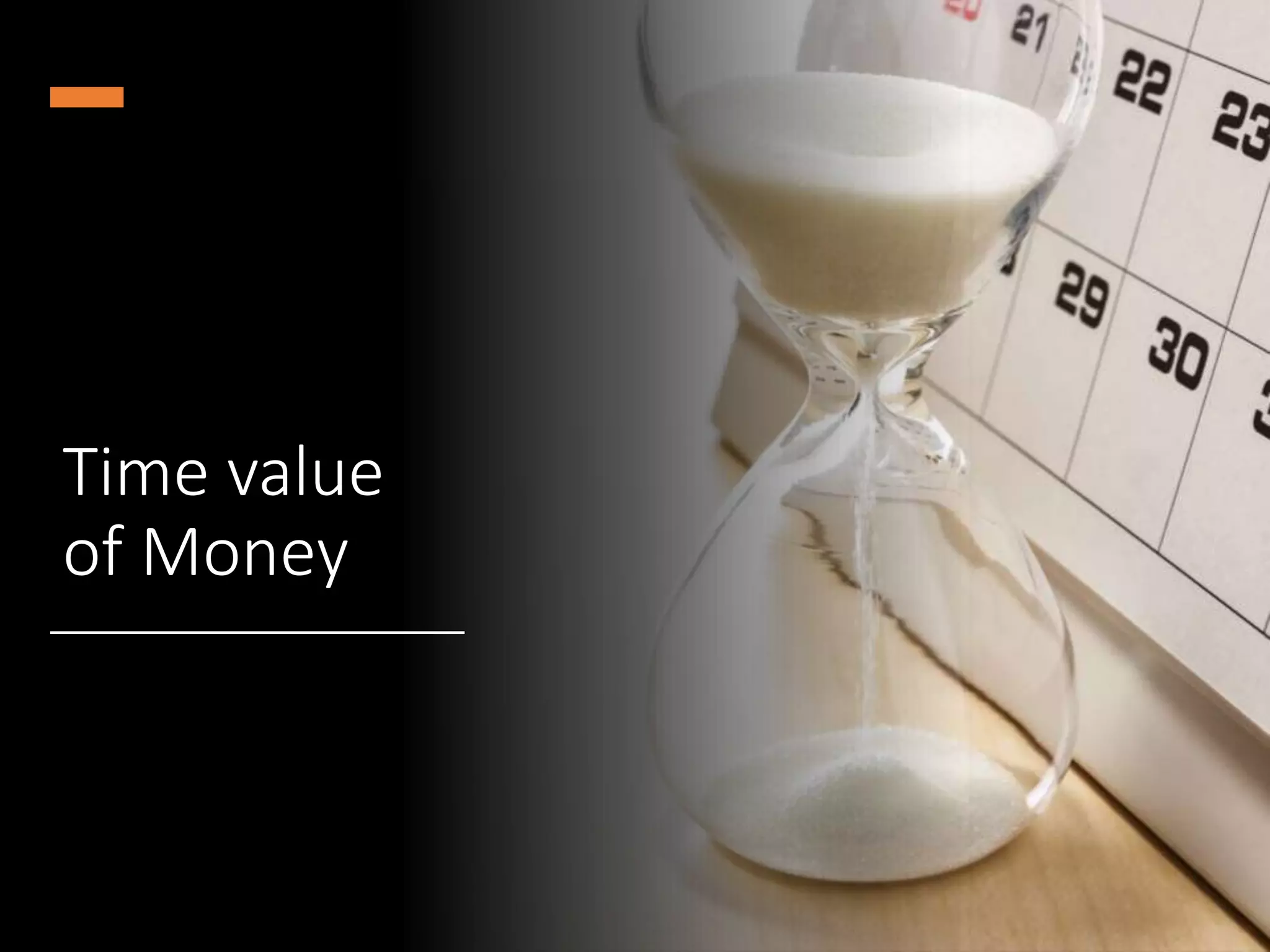
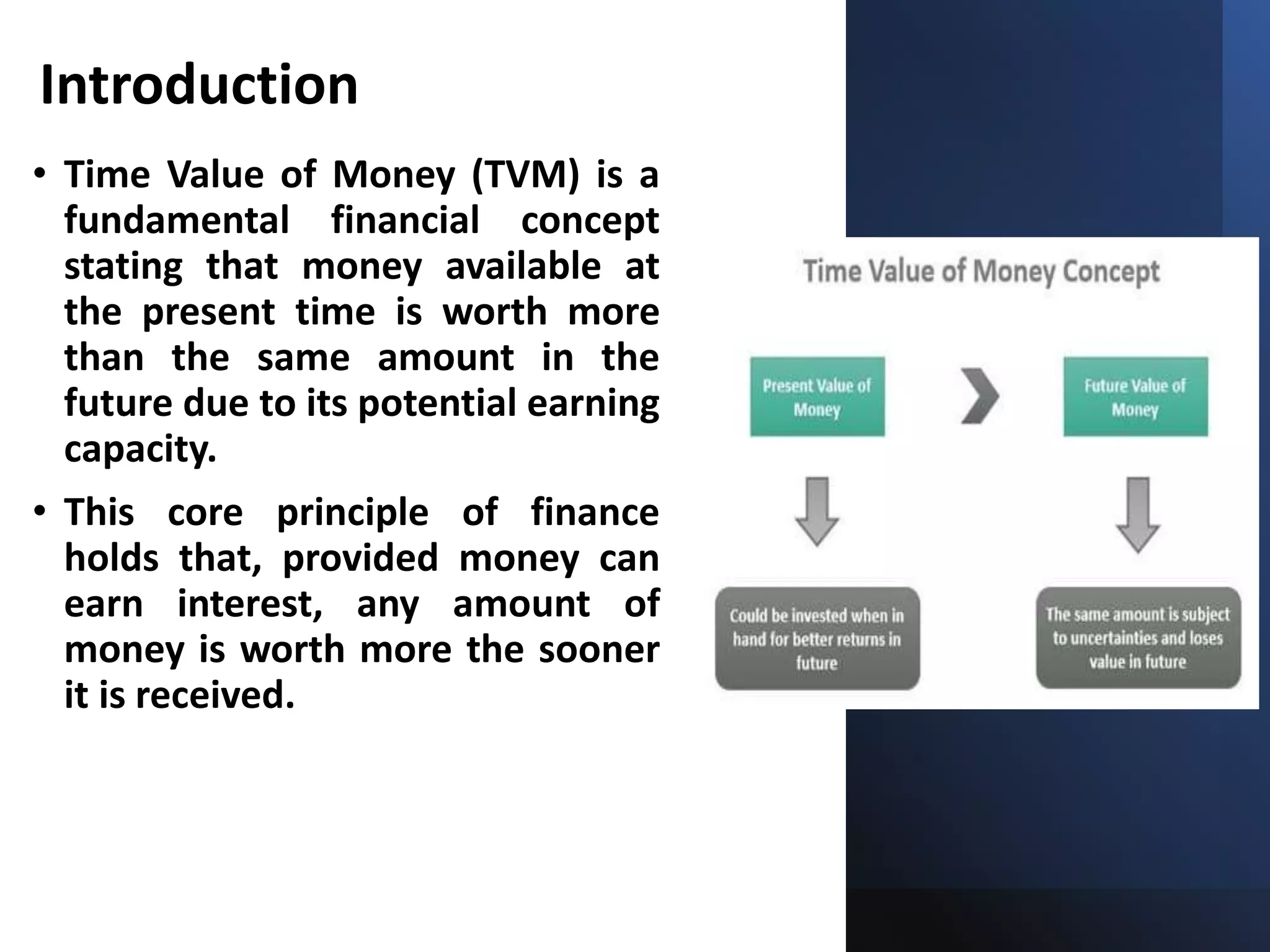
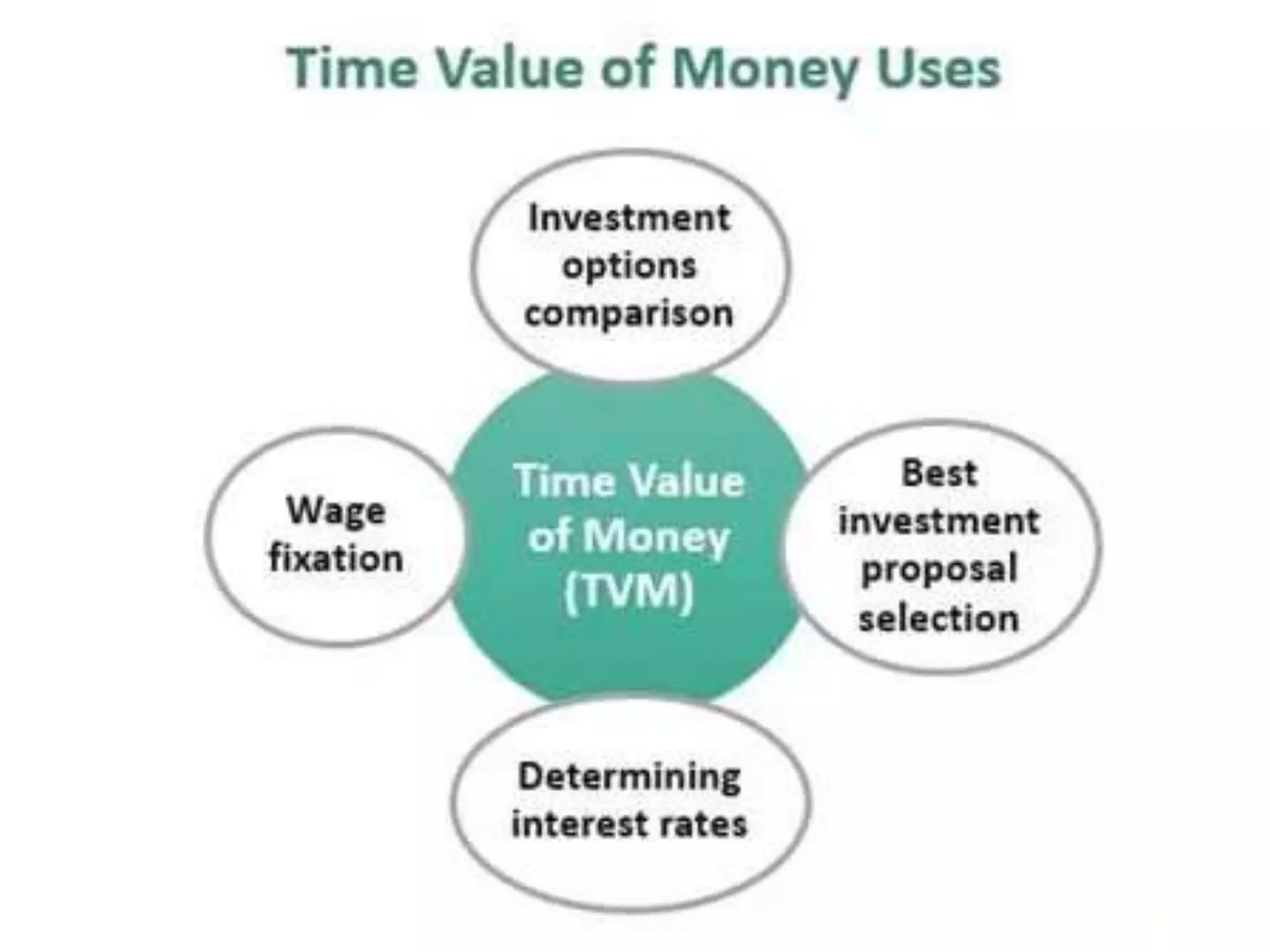

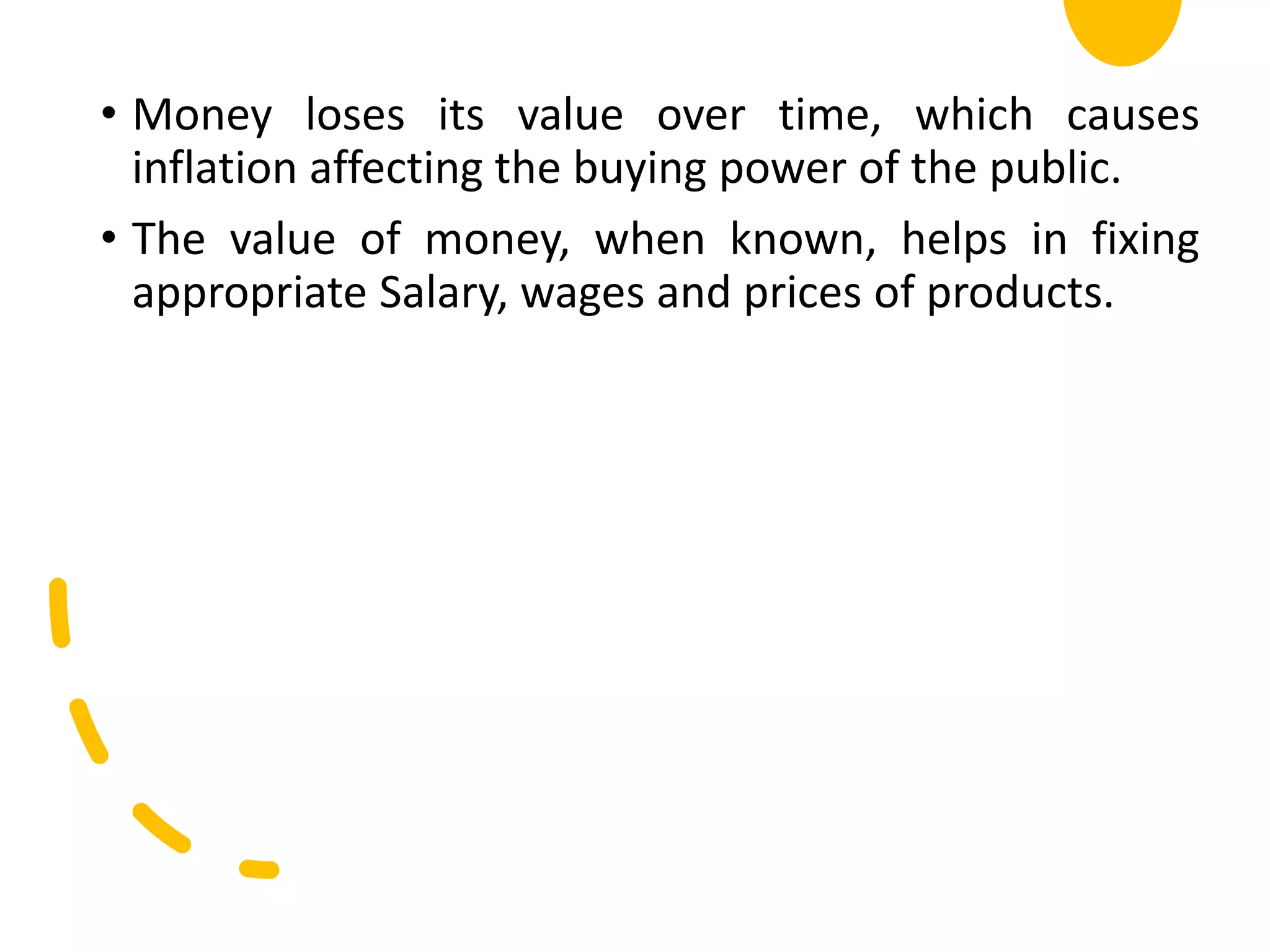
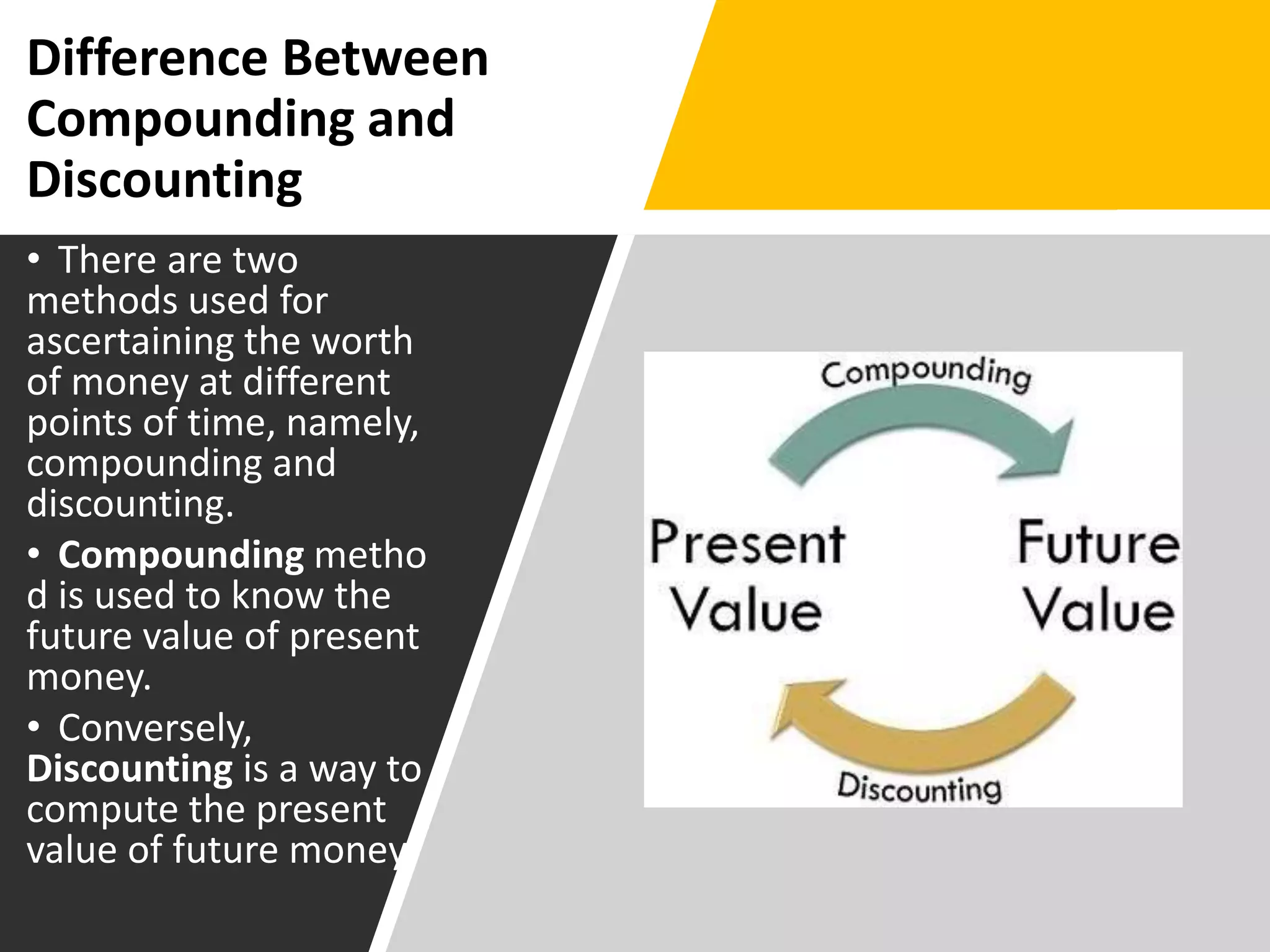
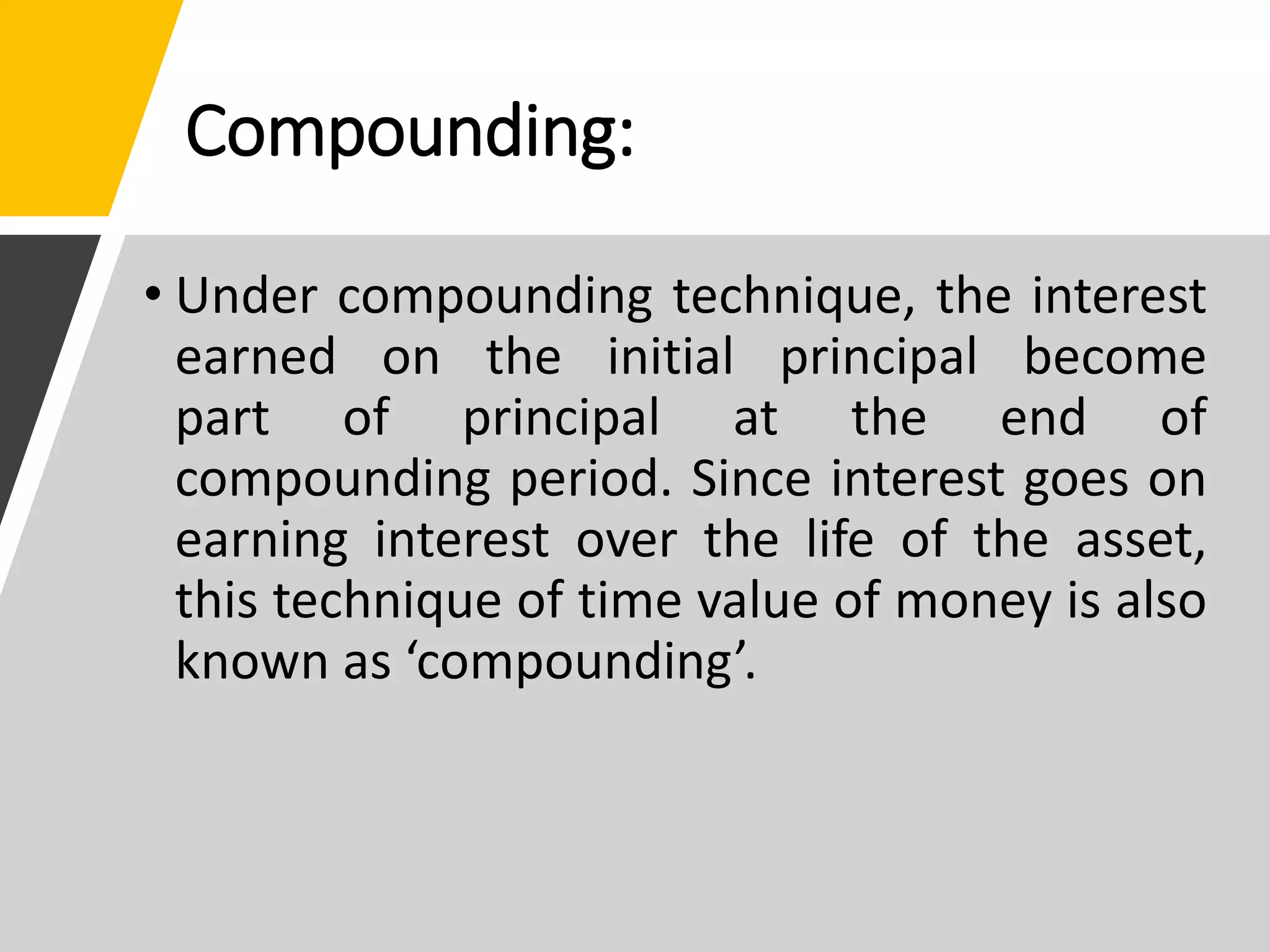
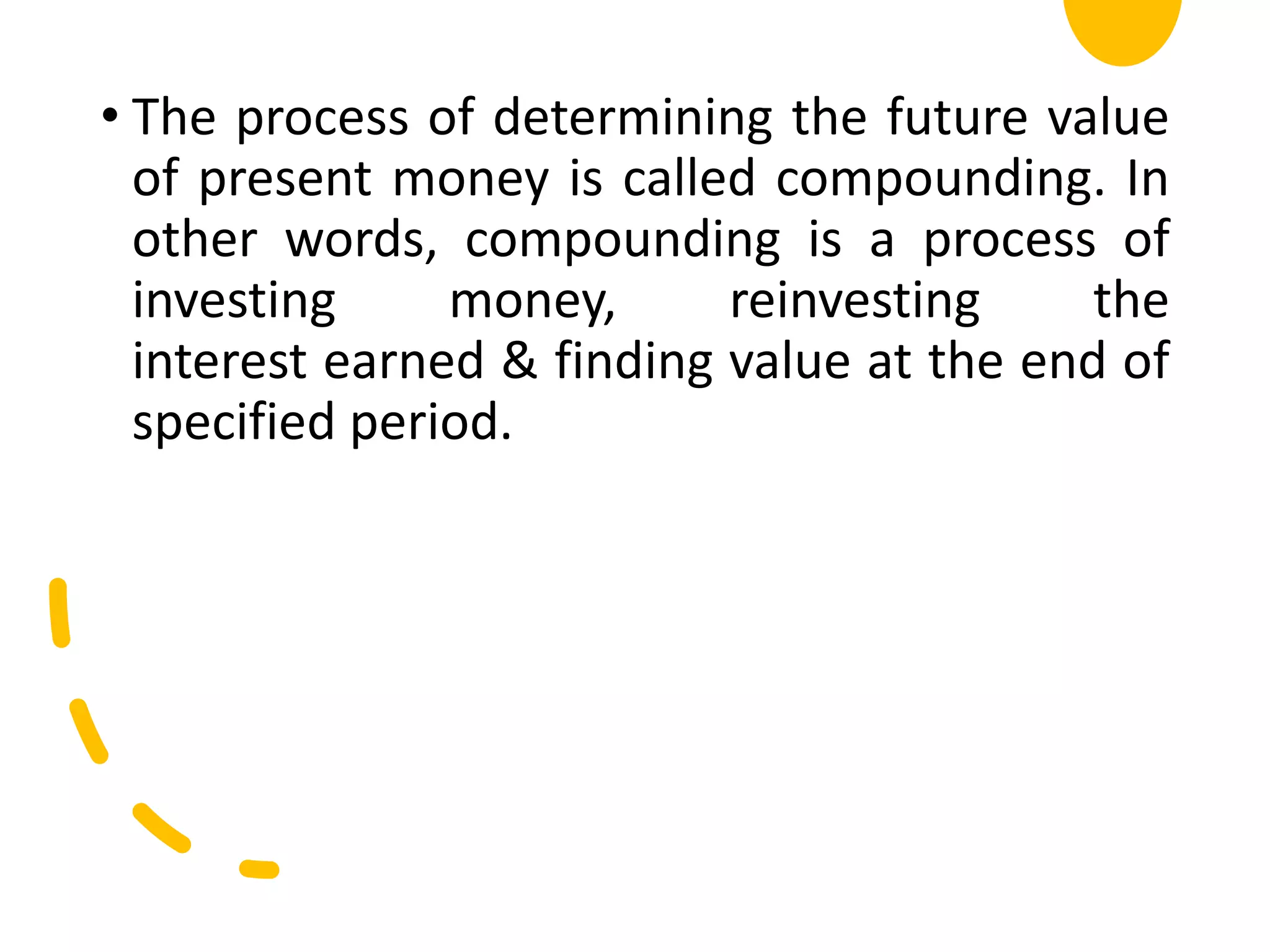
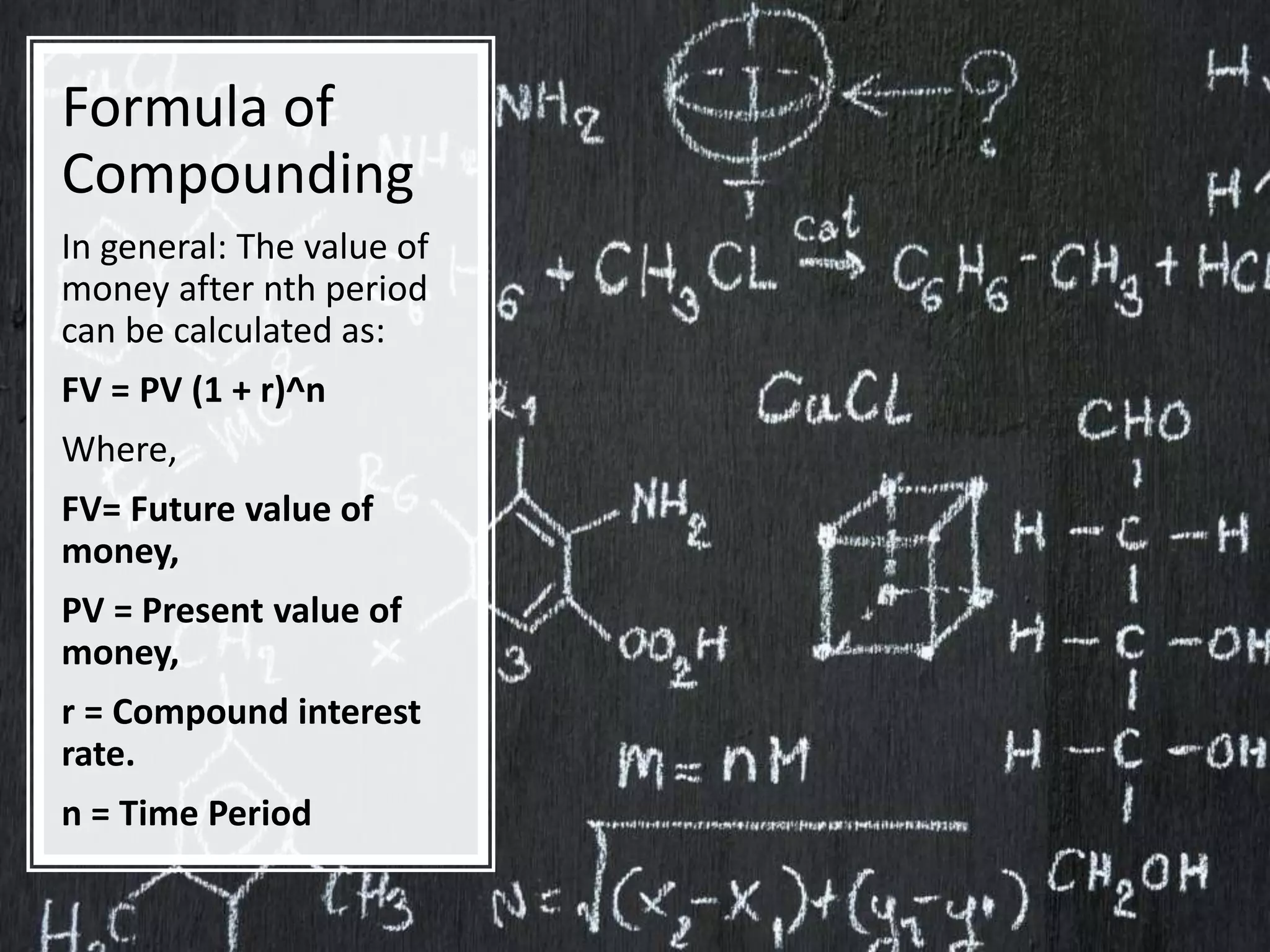
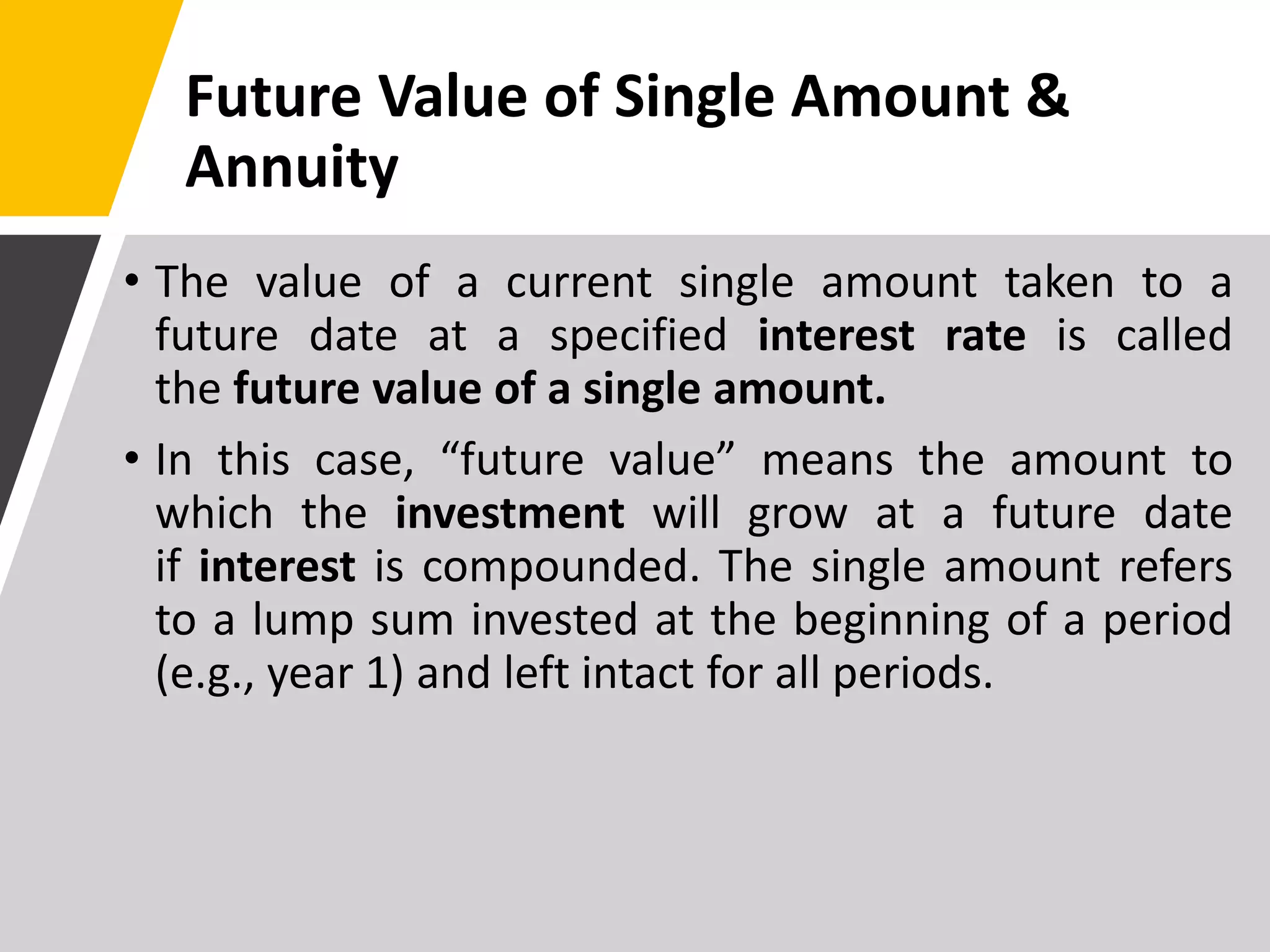

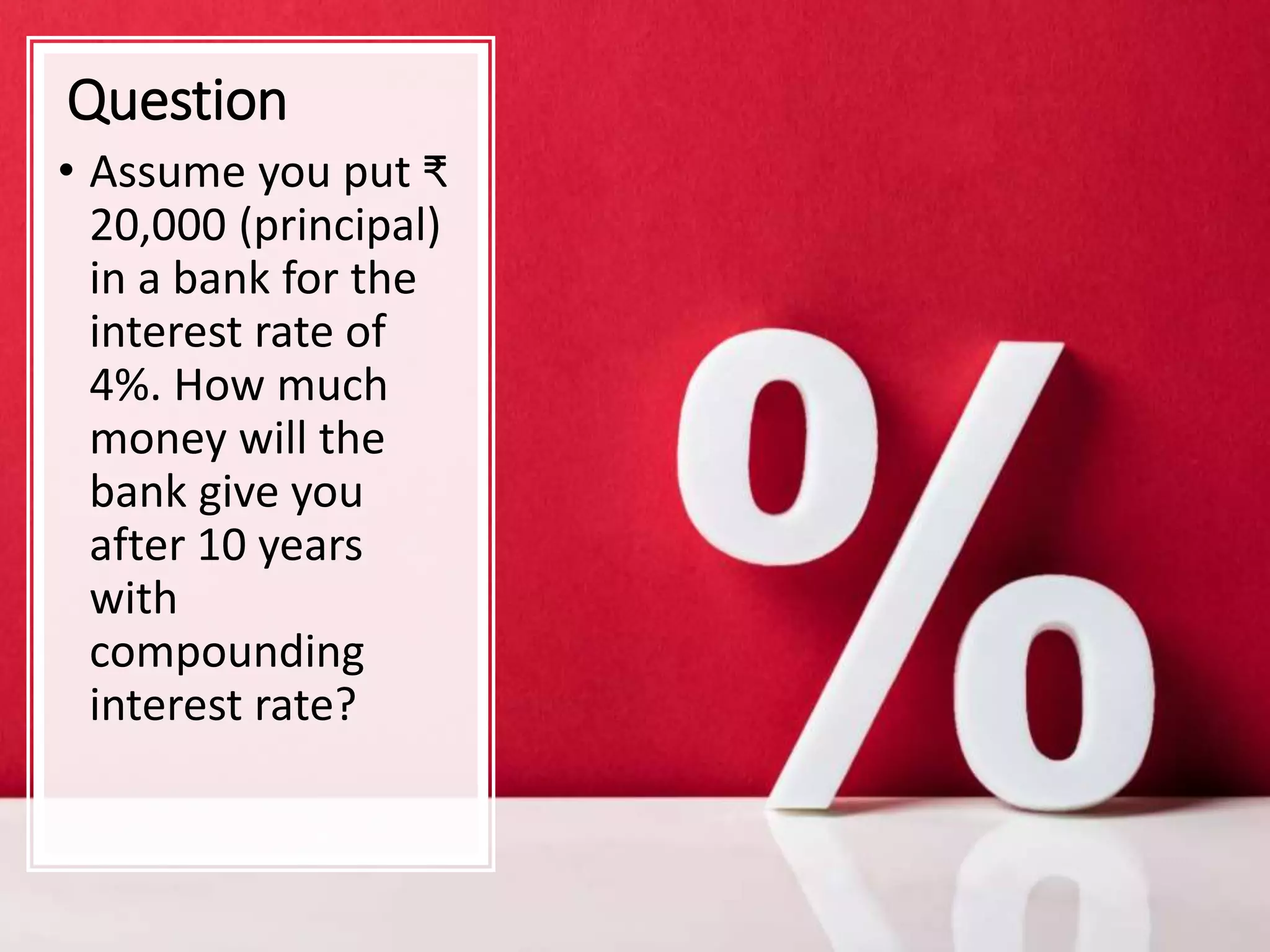
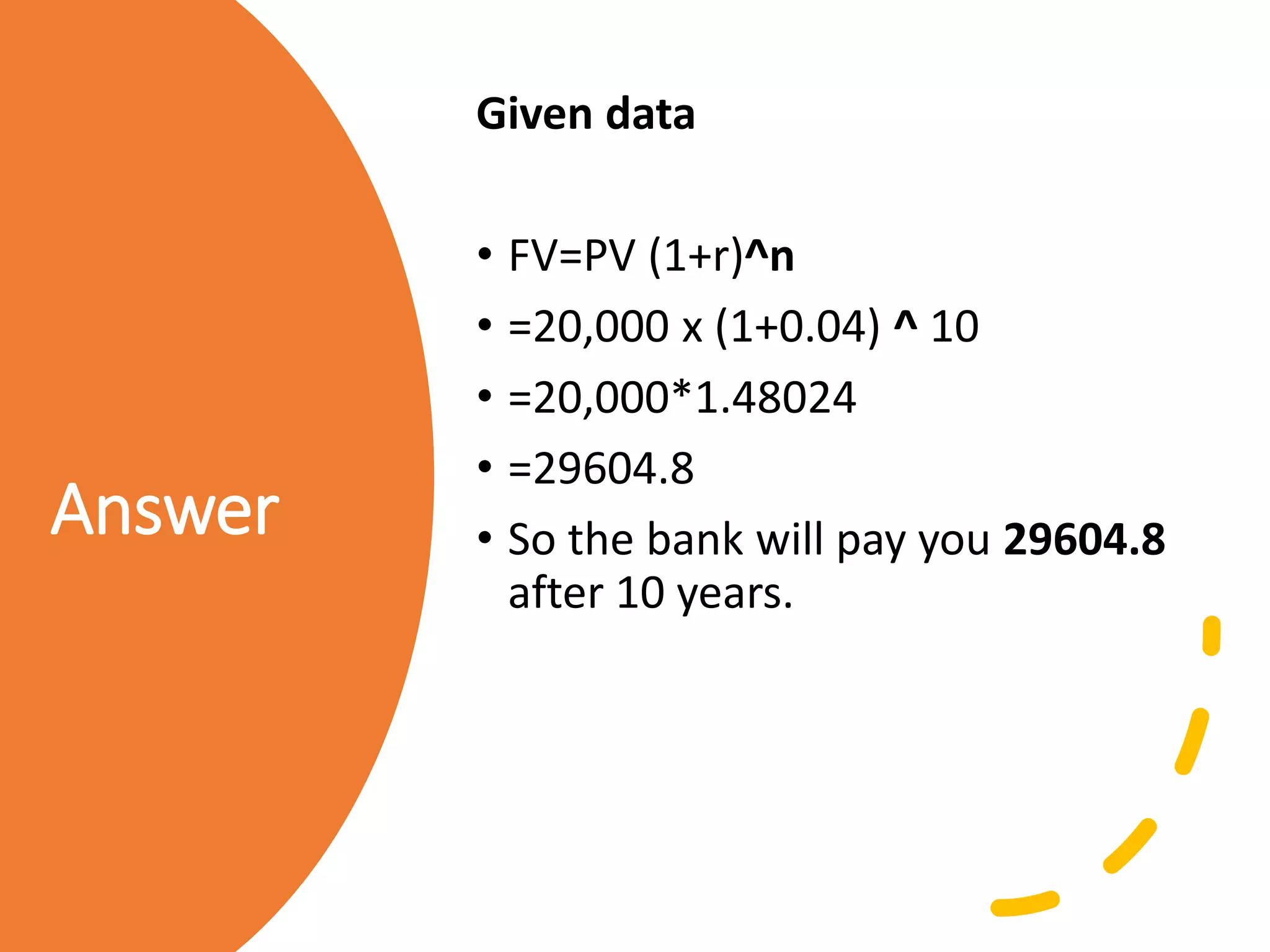
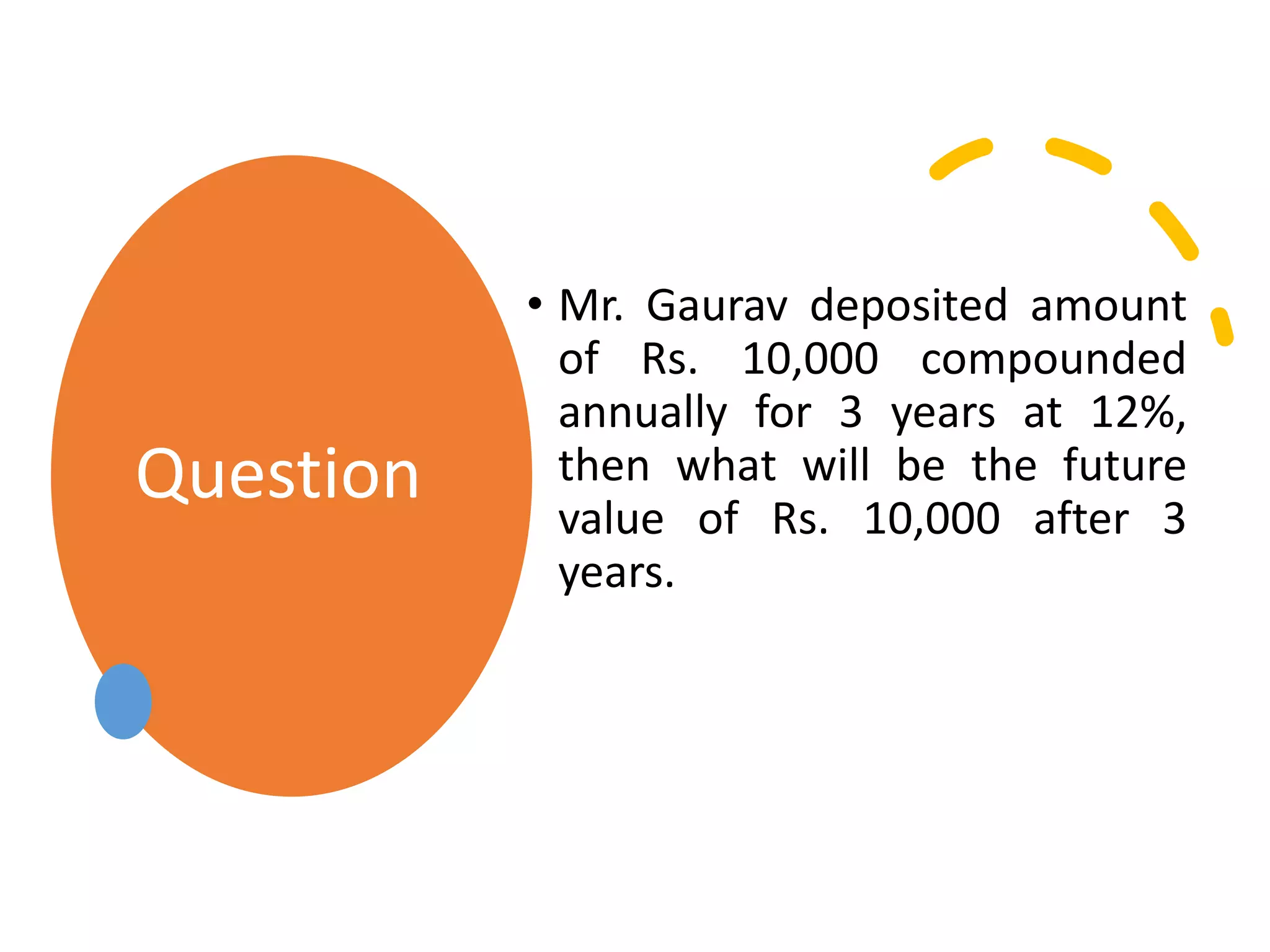

![Another
Formula for
Time Value of
Money/
Compounding
• Depending on the exact situation,
the formula for the time value of
money may change slightly. But in
general, the most fundamental TVM
formula considers the following
variables:
• FV = Future value of money
• PV = Present value of money
• i = interest rate
• n = number of compounding periods
per year
• t = number of years
Based on these variables, the formula
for TVM is:
• FV = PV x [ 1 + (i / n) ] (n x t)](https://image.slidesharecdn.com/unit-5fmetc1-230728095846-9f2577f6/75/UNIT-5-FM-ETC1-pptx-17-2048.jpg)
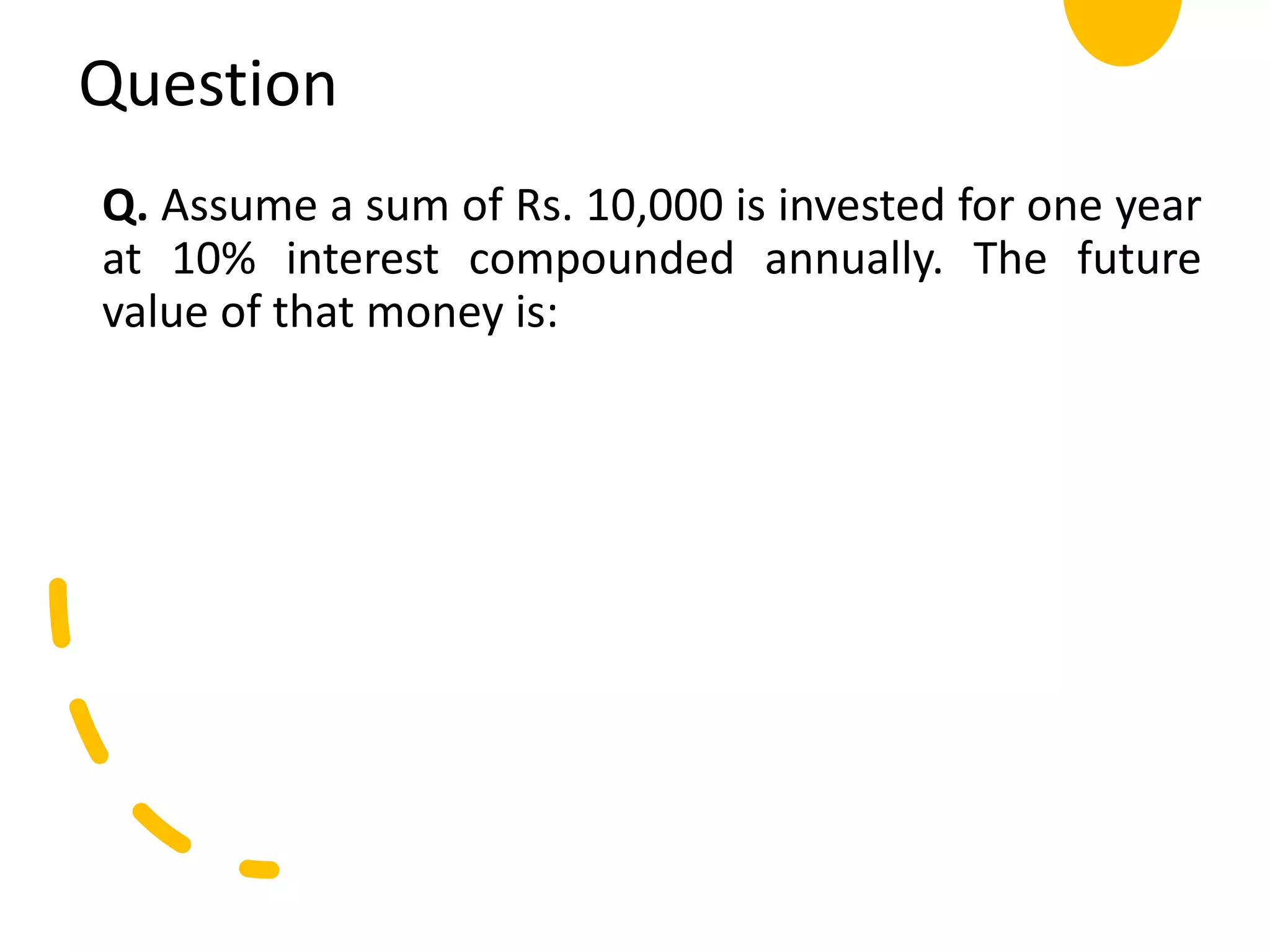
![Answer:
Given data,
PV= 10,000
i = 10%
t = 1
n= 1
Formula for calculating Future Value is;
FV = PV x [ 1 + (i / n) ] (n x t)
FV = Rs. 10,000 x [1 + (0.10 / 1)] (1 x 1)
= Rs. 11,000
The Future value of that money is Rs. 11,000/-.](https://image.slidesharecdn.com/unit-5fmetc1-230728095846-9f2577f6/75/UNIT-5-FM-ETC1-pptx-19-2048.jpg)

![Answer
Quarterly Compounding:
FV = ₹ 10,000 x [1 + (10% / 4)] (4 x 1)
= Rs. 11,038
Monthly Compounding:
FV = ₹ 10,000 x [1 + (10% / 12)] (12 x 1)
= Rs. 11,047
Daily Compounding:
FV = ₹ 10,000 x [1 + (10% / 365)] (365 x 1)
= Rs. 11,052](https://image.slidesharecdn.com/unit-5fmetc1-230728095846-9f2577f6/75/UNIT-5-FM-ETC1-pptx-21-2048.jpg)
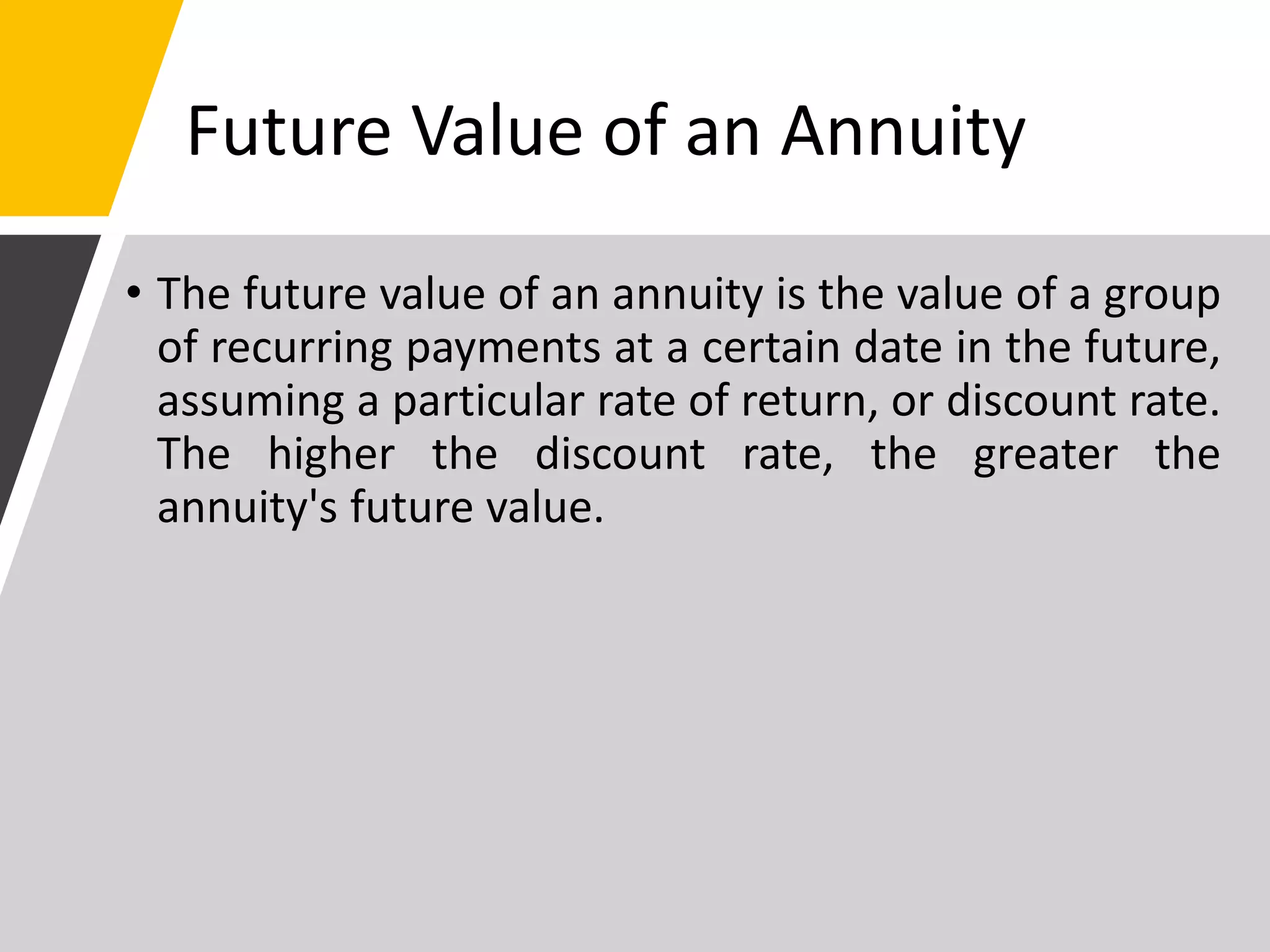

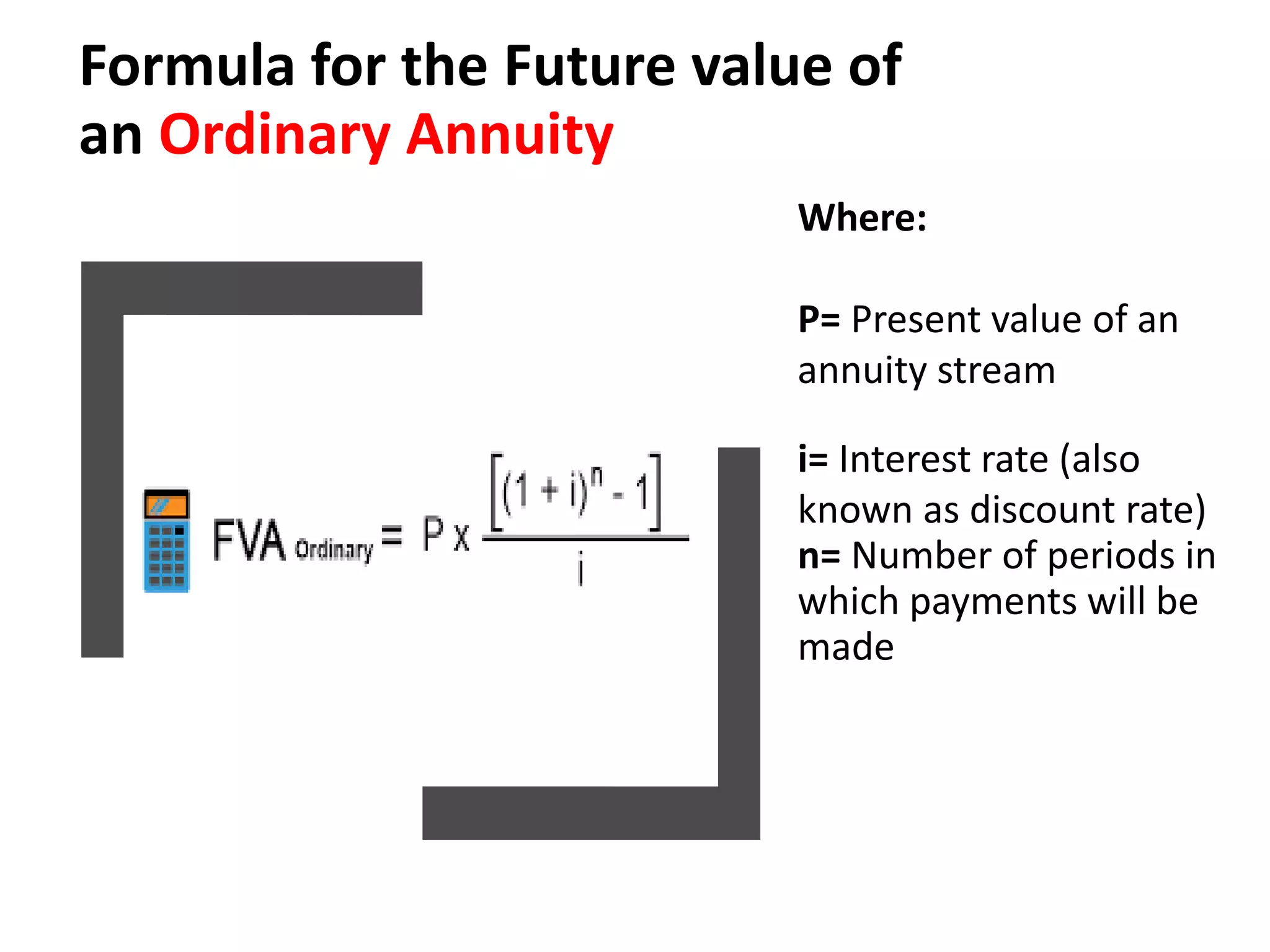
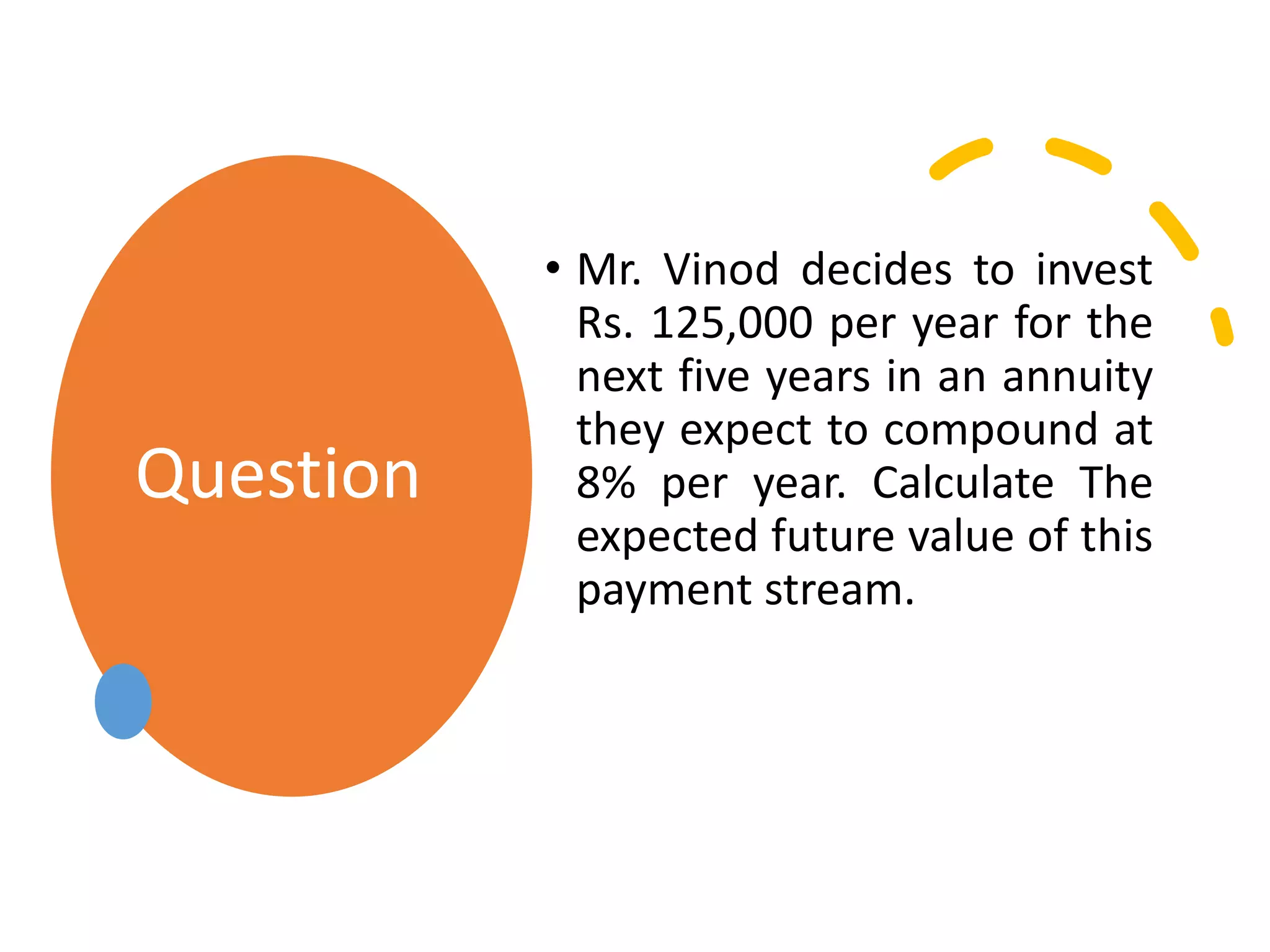
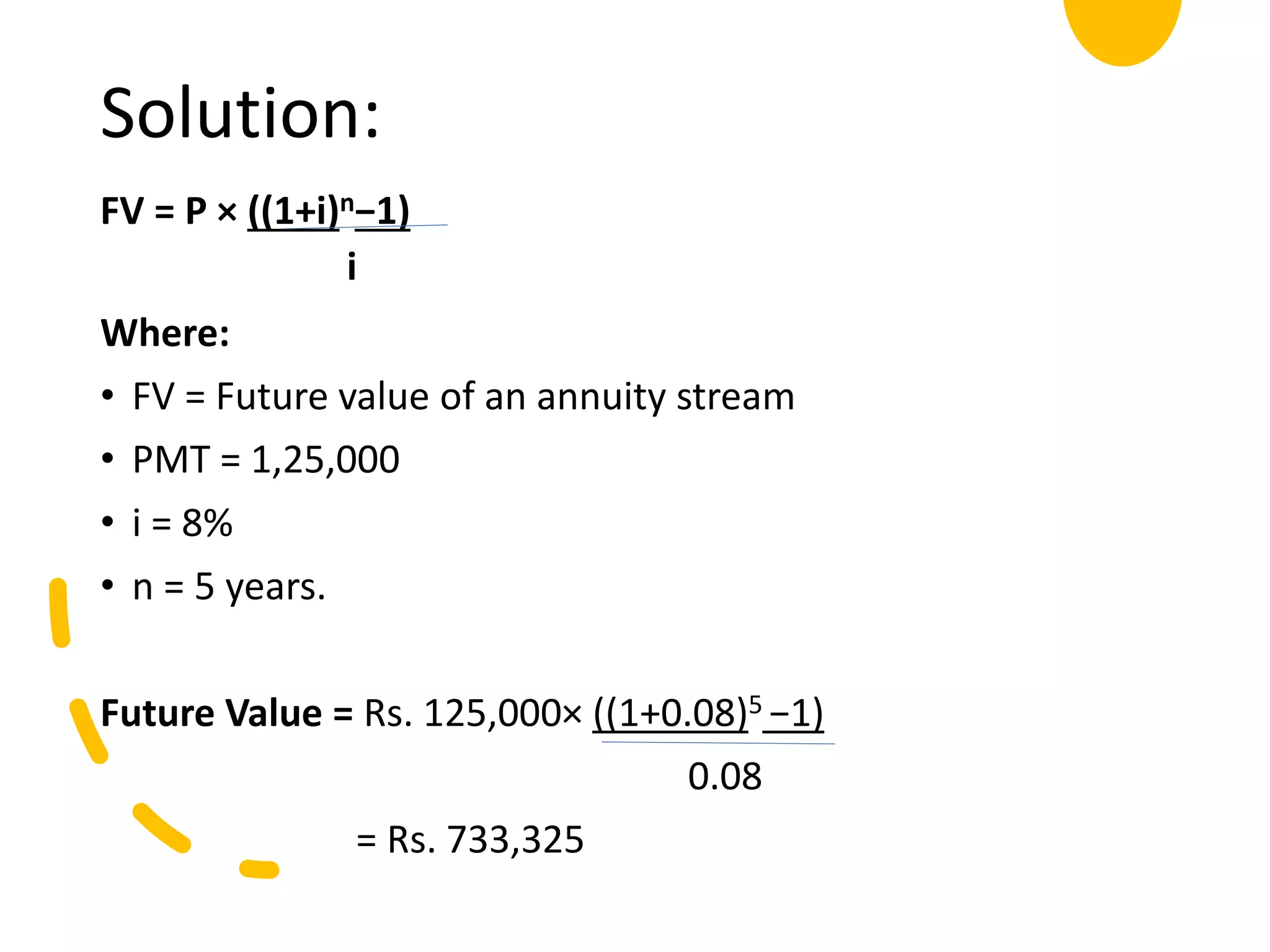
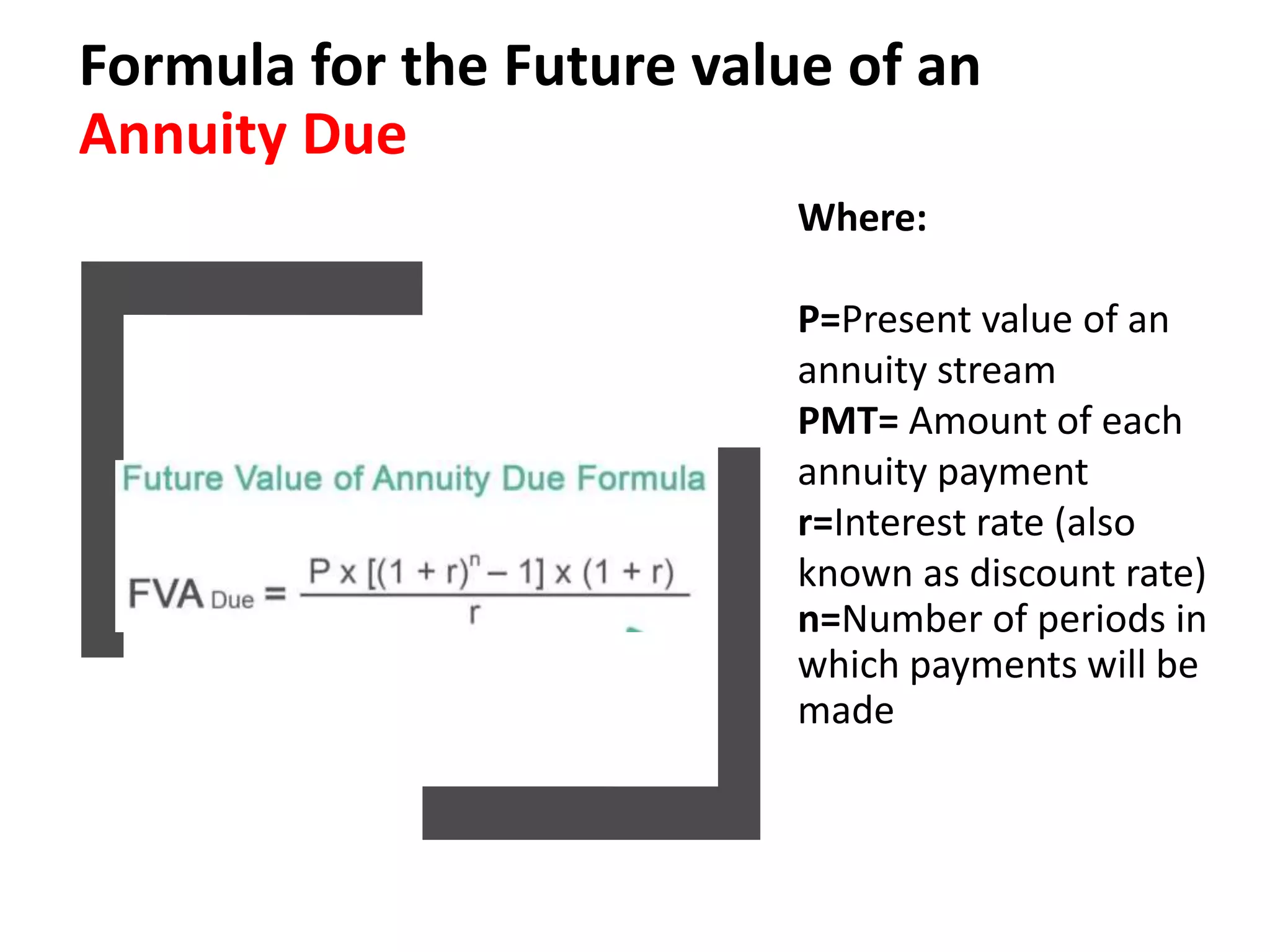
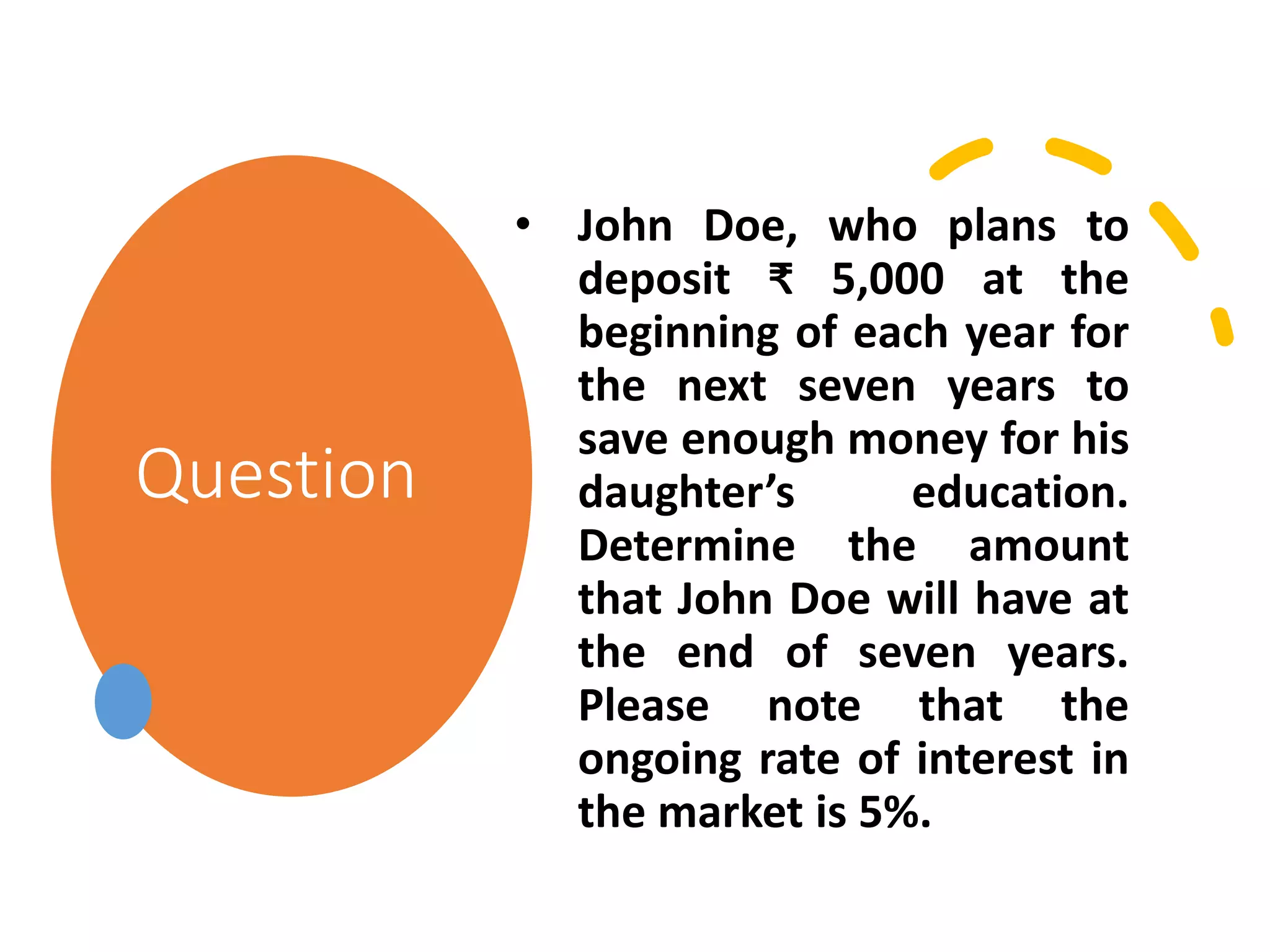
![Solution:
Given Data,
P= ₹ 5,000
r= 5% or 0.05
n= 7 years
Future Value =
FV = 5,000 [(1 + 0.05)7 – 1] x (1+ 0.05)
0.05
= ₹ 42,745.54](https://image.slidesharecdn.com/unit-5fmetc1-230728095846-9f2577f6/75/UNIT-5-FM-ETC1-pptx-29-2048.jpg)

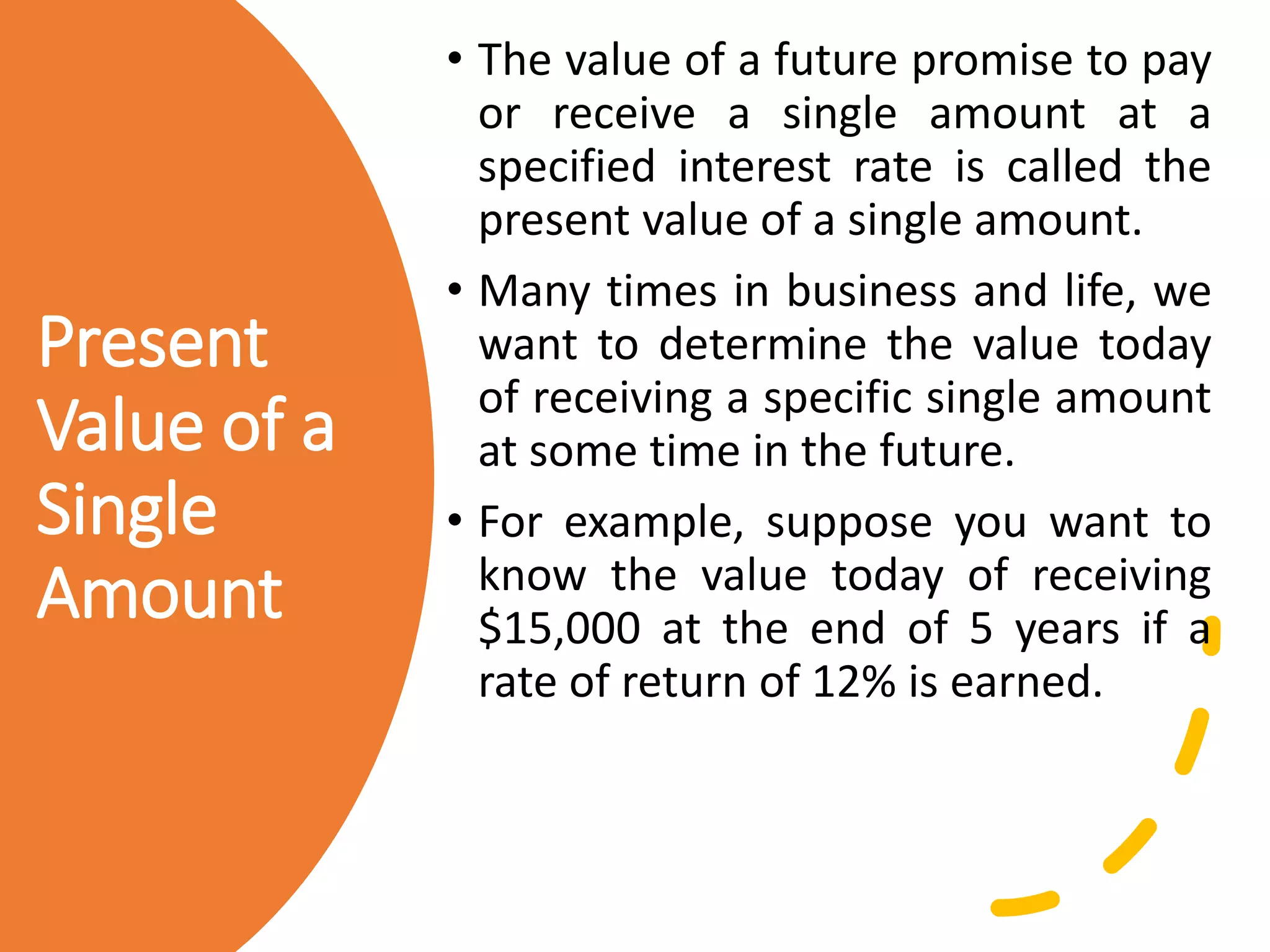
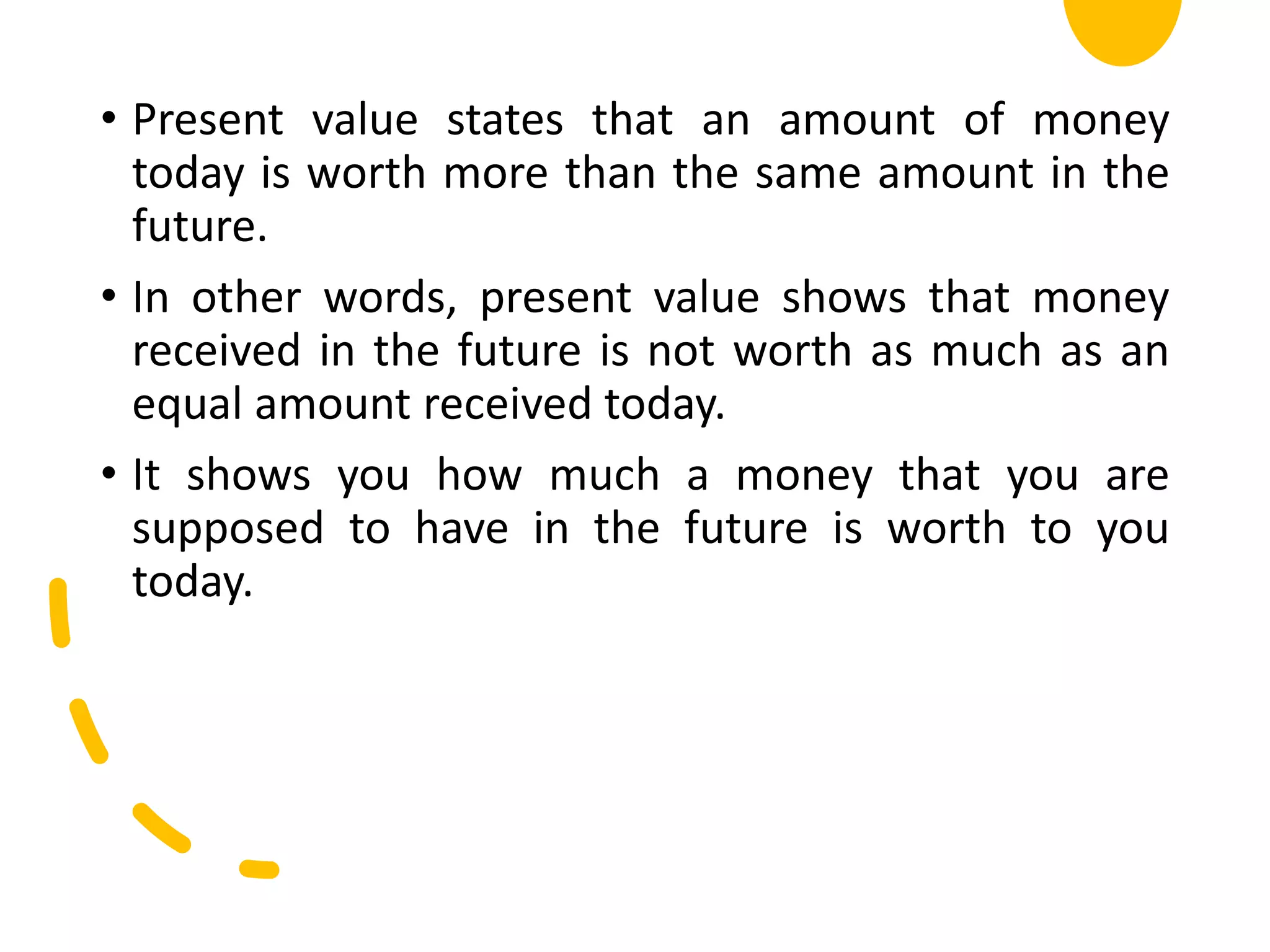
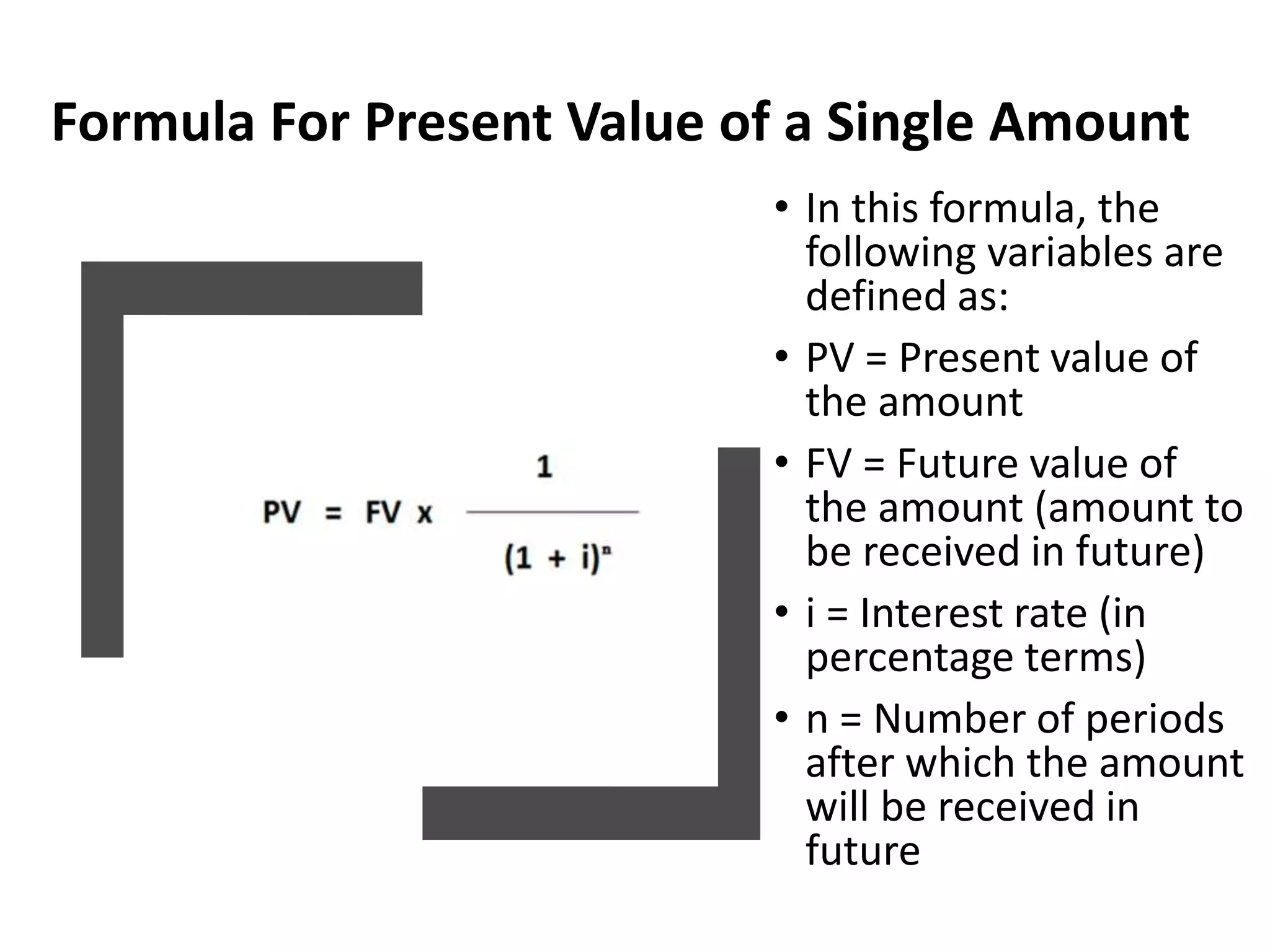
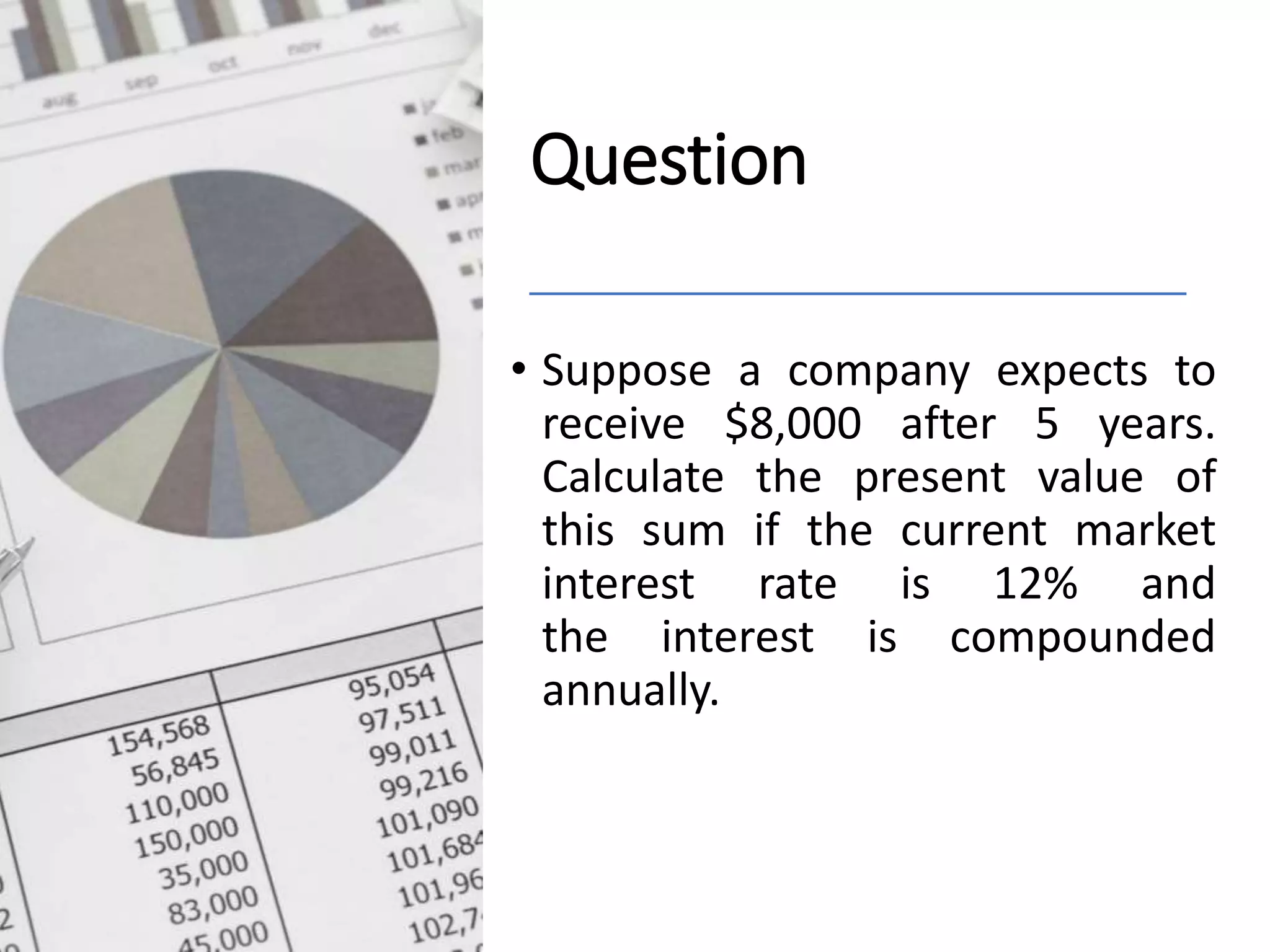
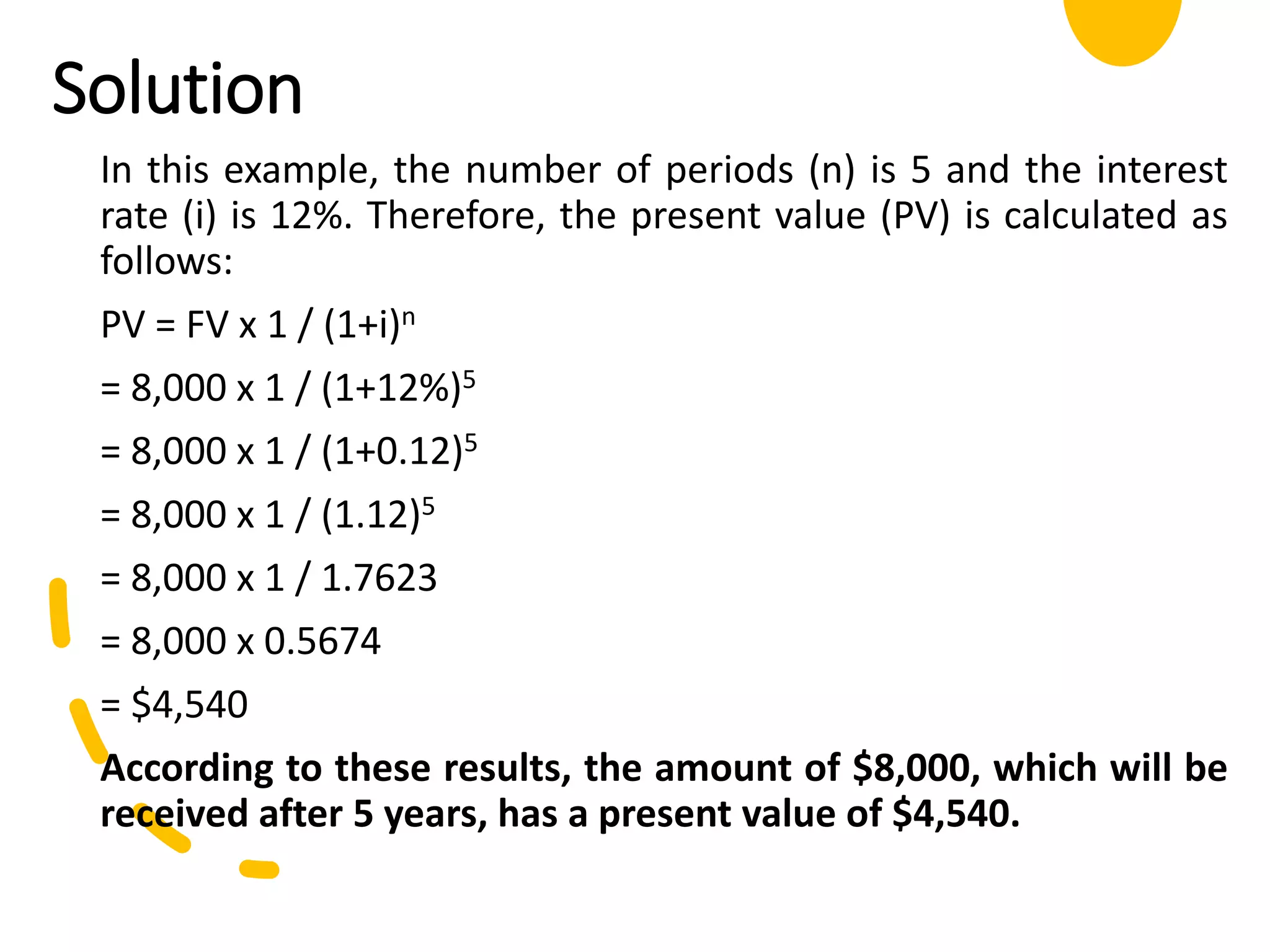
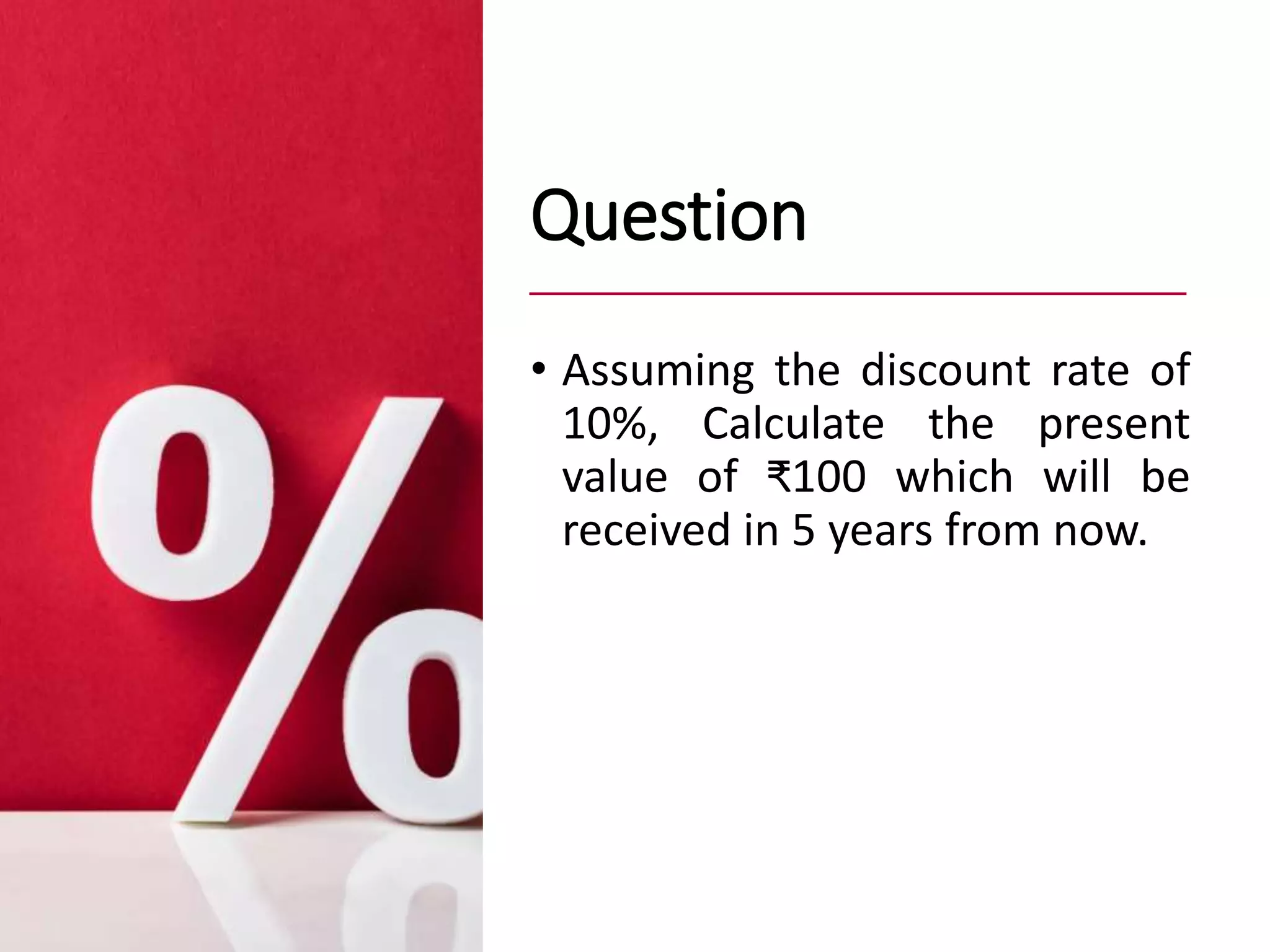
![Solution
Given data
• F= ₹100
• n =5
• i =0.1
P = F[1/(1 + i)n]
= 100[1/(1 + 0.1)5]
= ₹ 62.09](https://image.slidesharecdn.com/unit-5fmetc1-230728095846-9f2577f6/75/UNIT-5-FM-ETC1-pptx-37-2048.jpg)
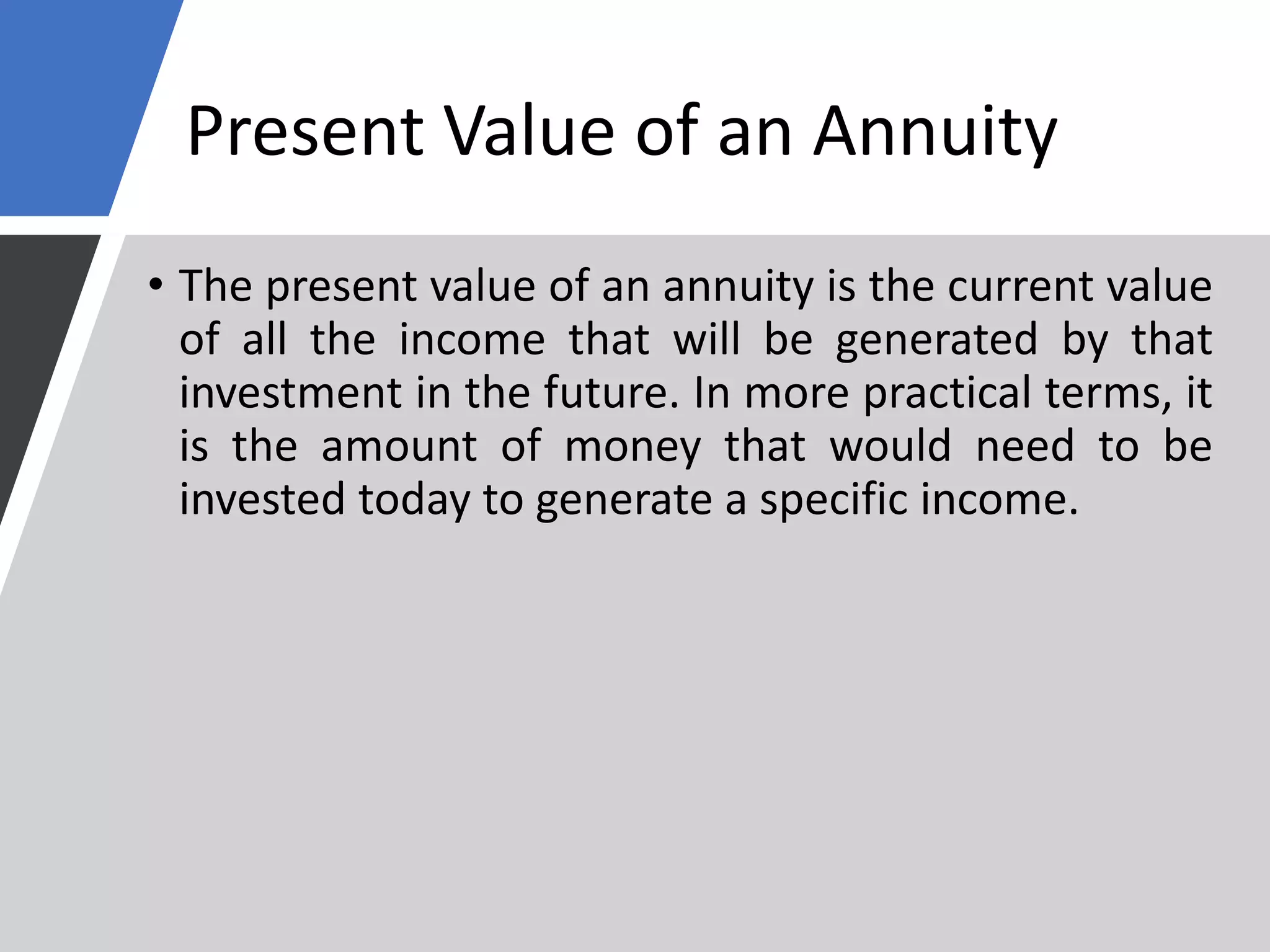
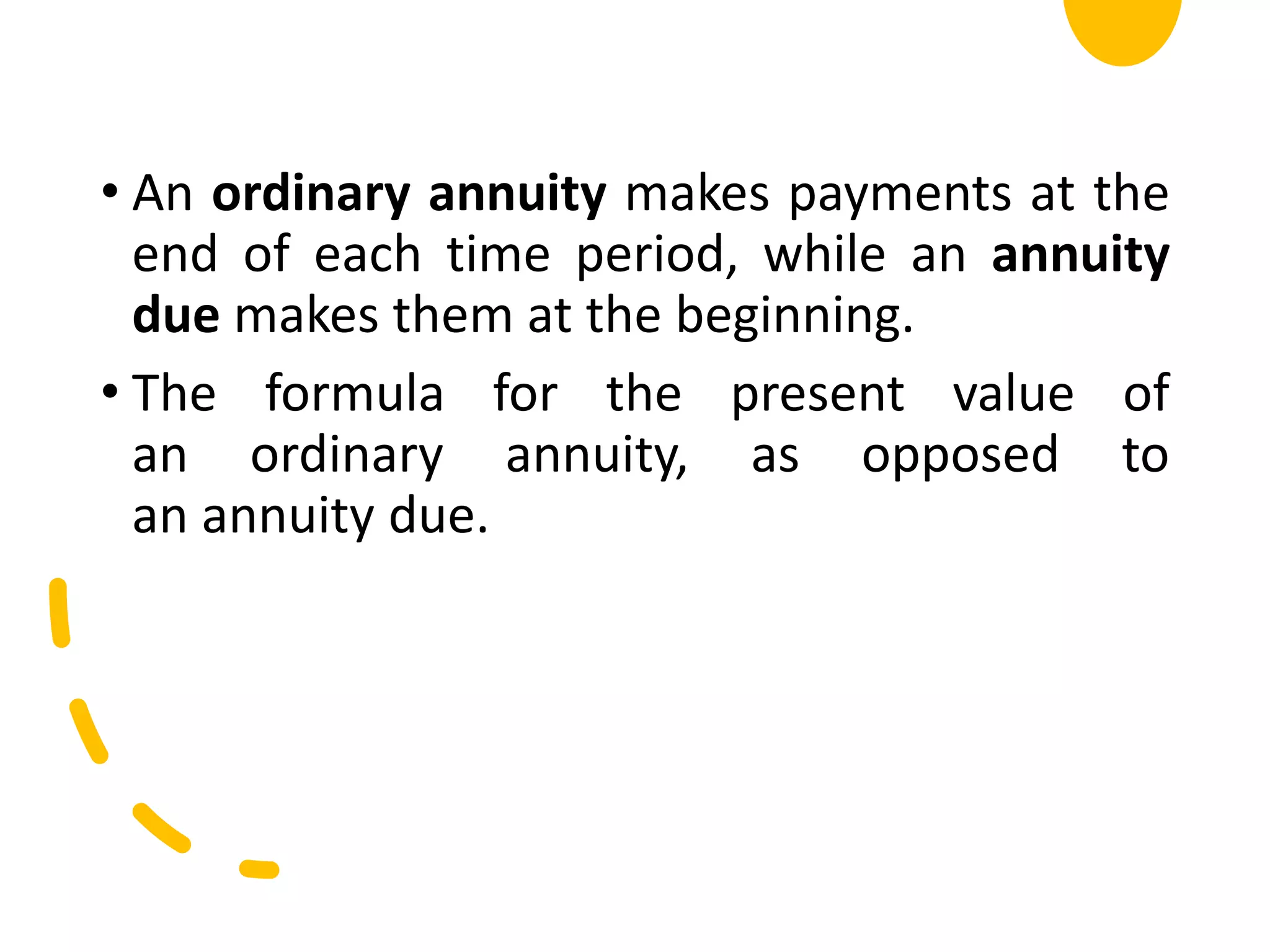
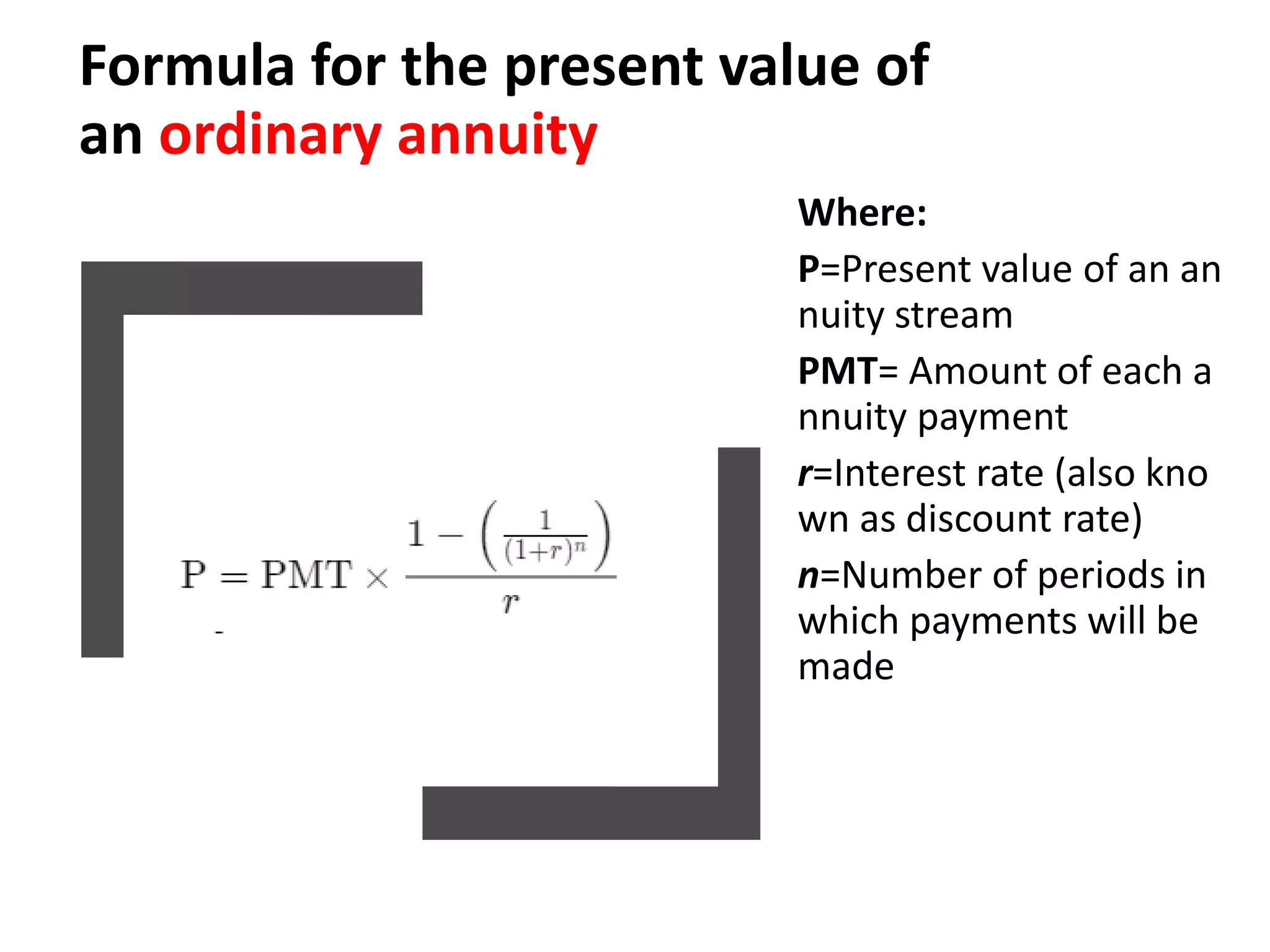
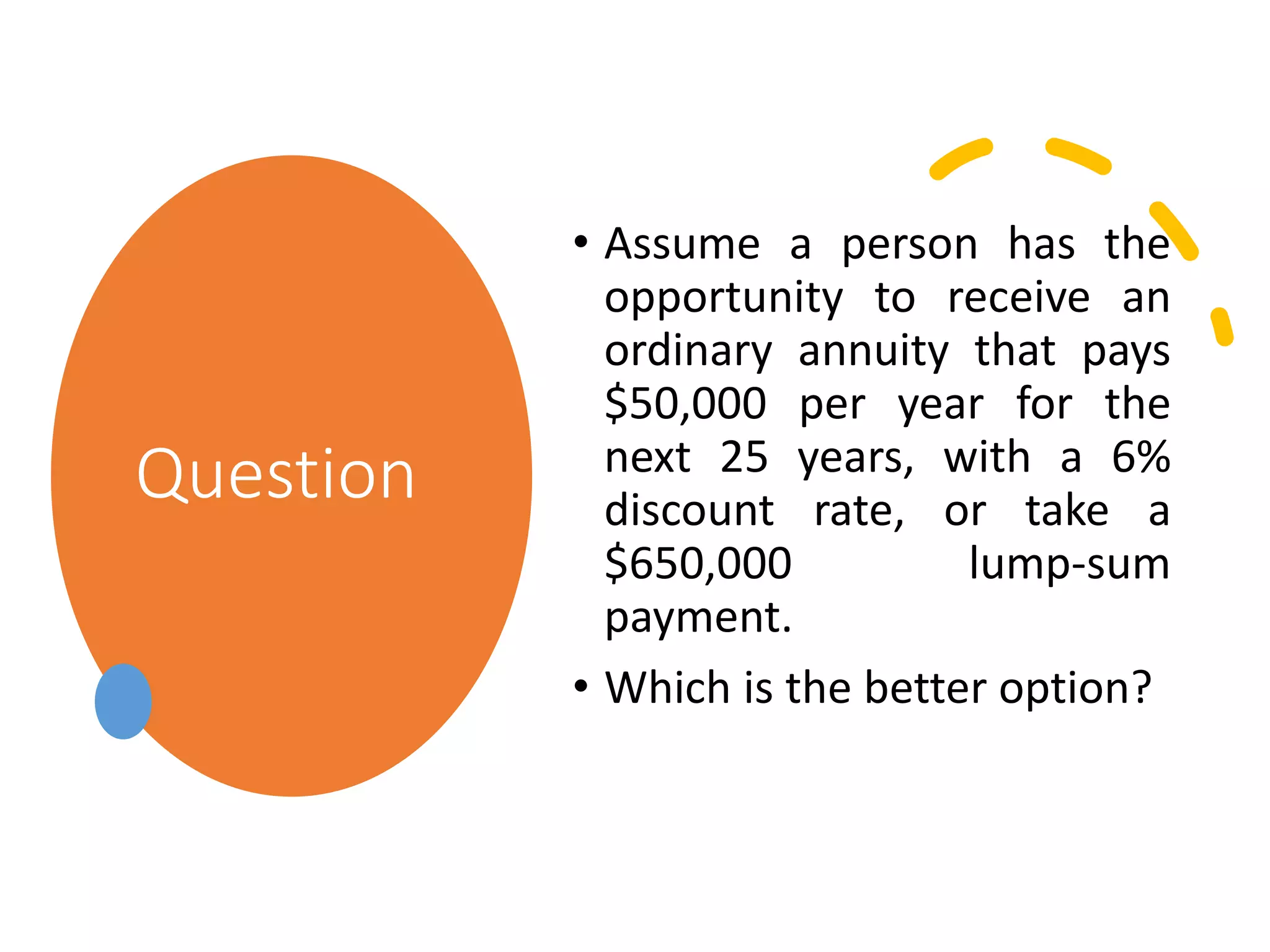
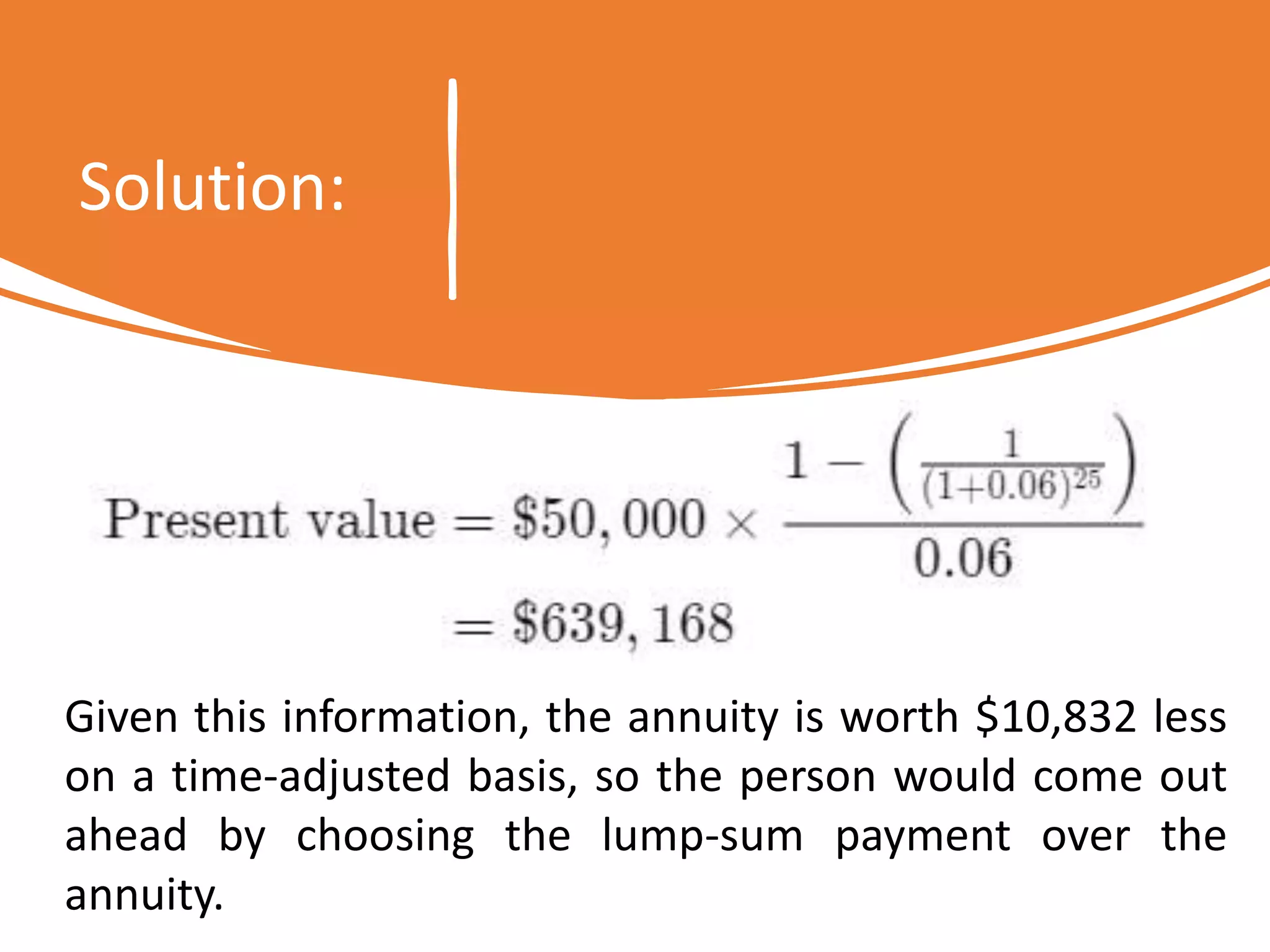



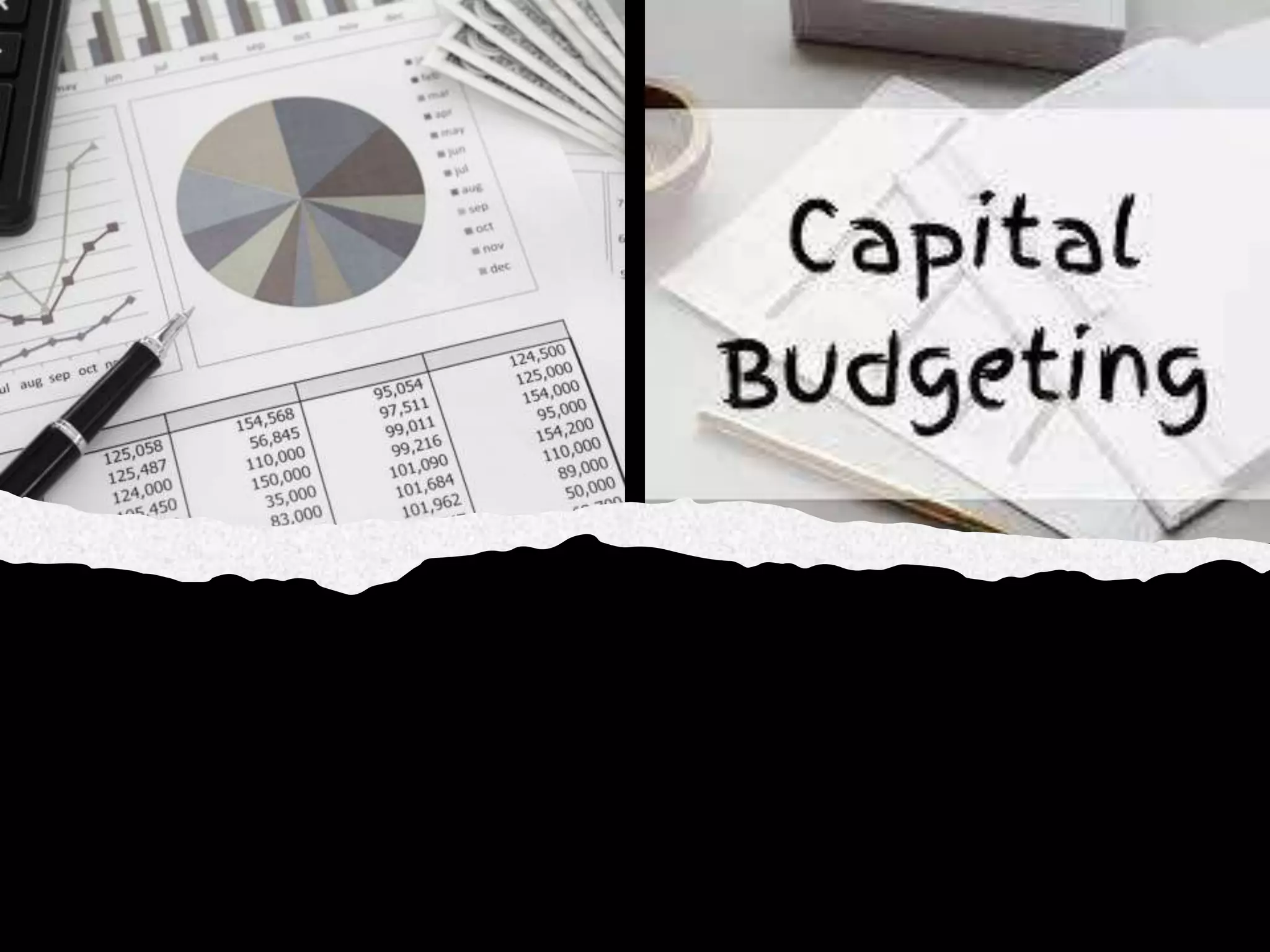
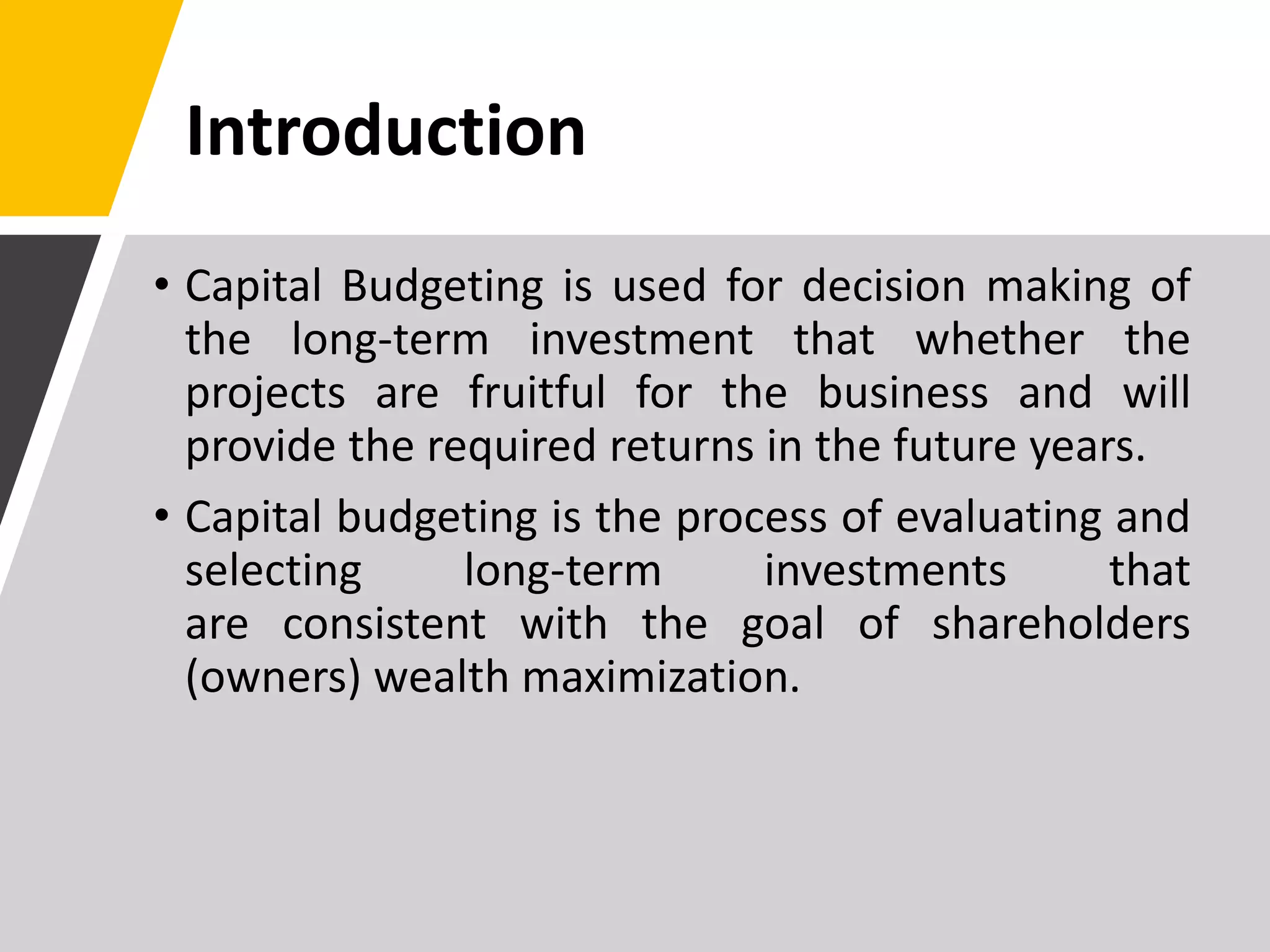
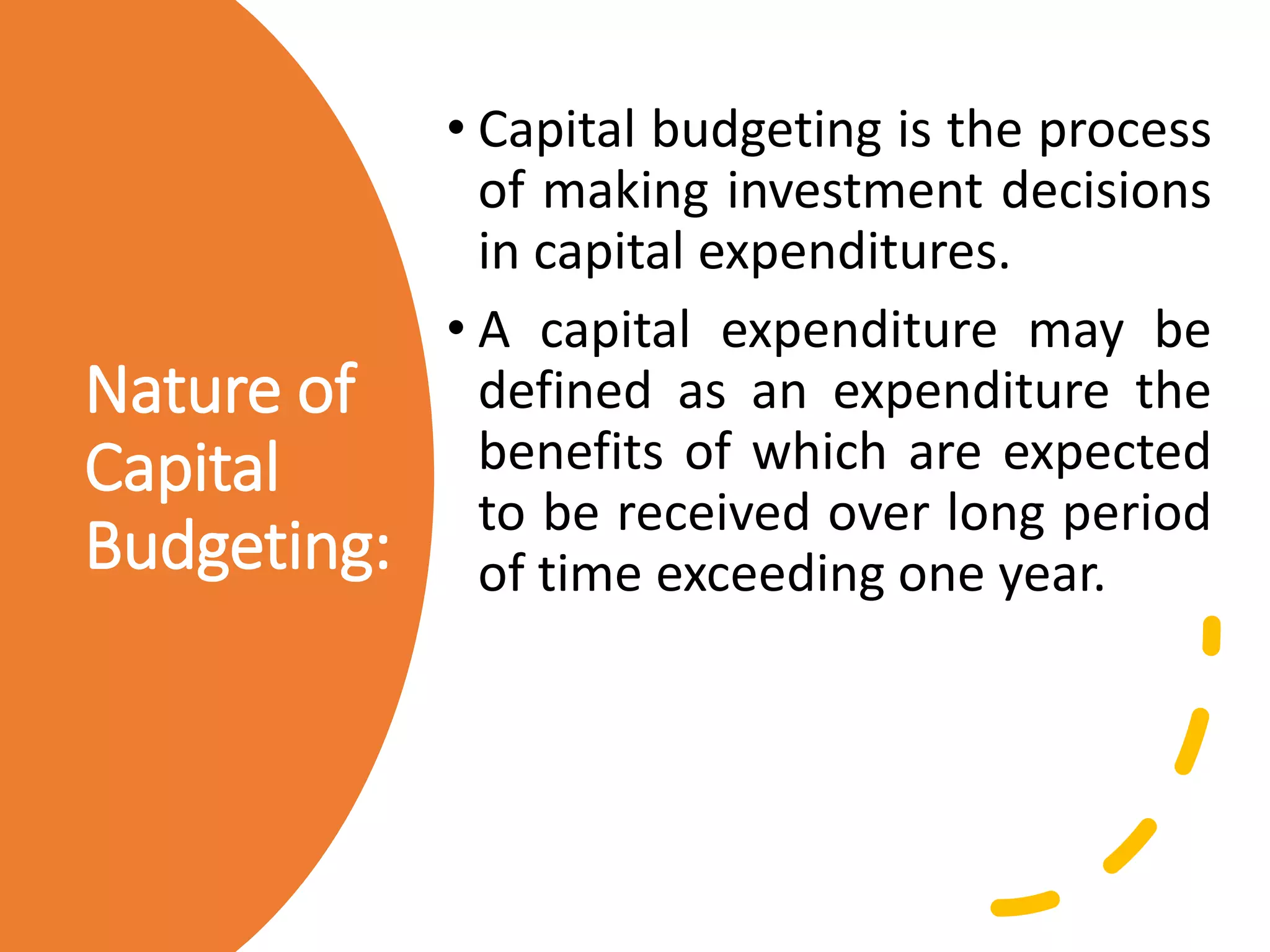
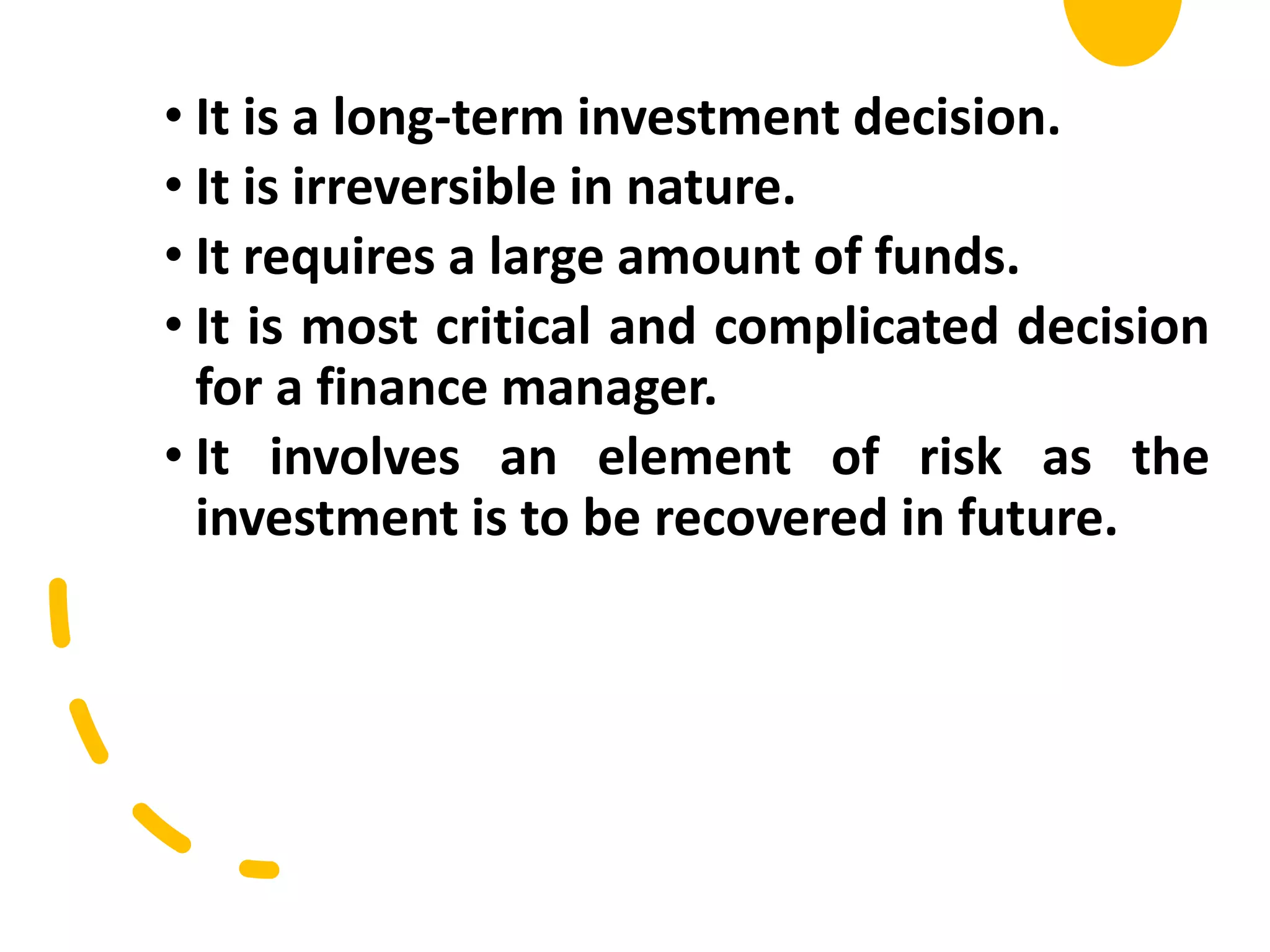
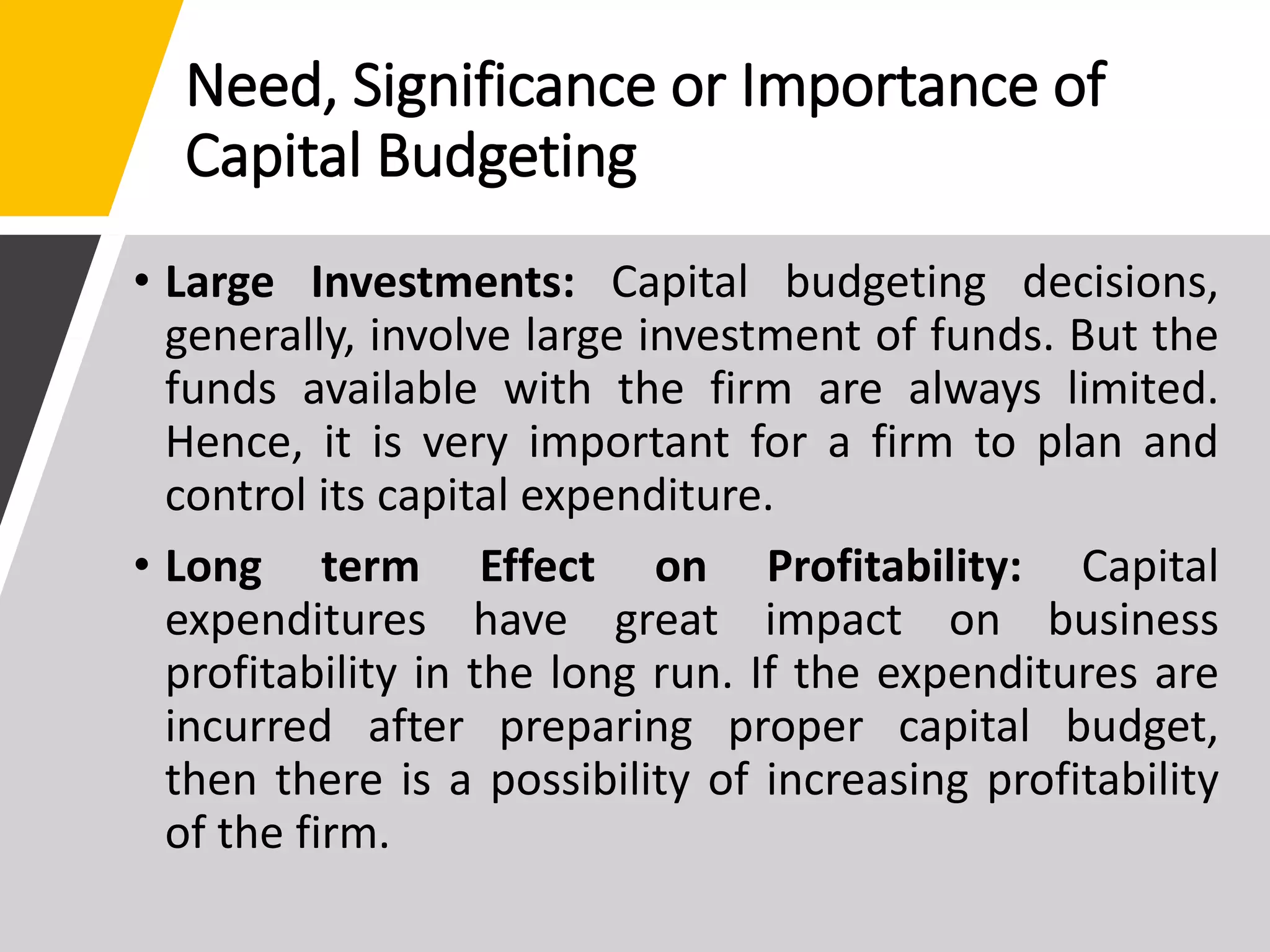
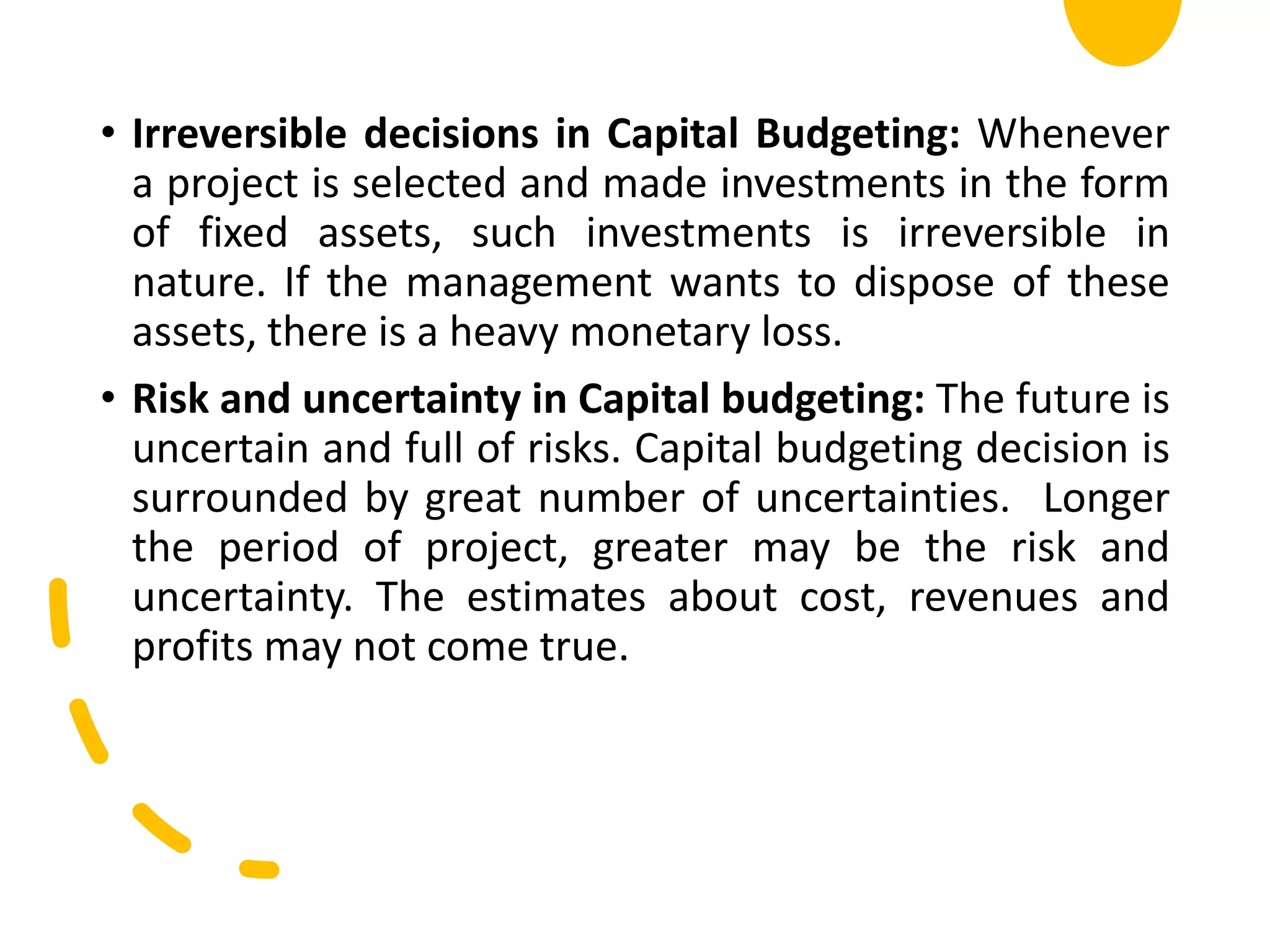
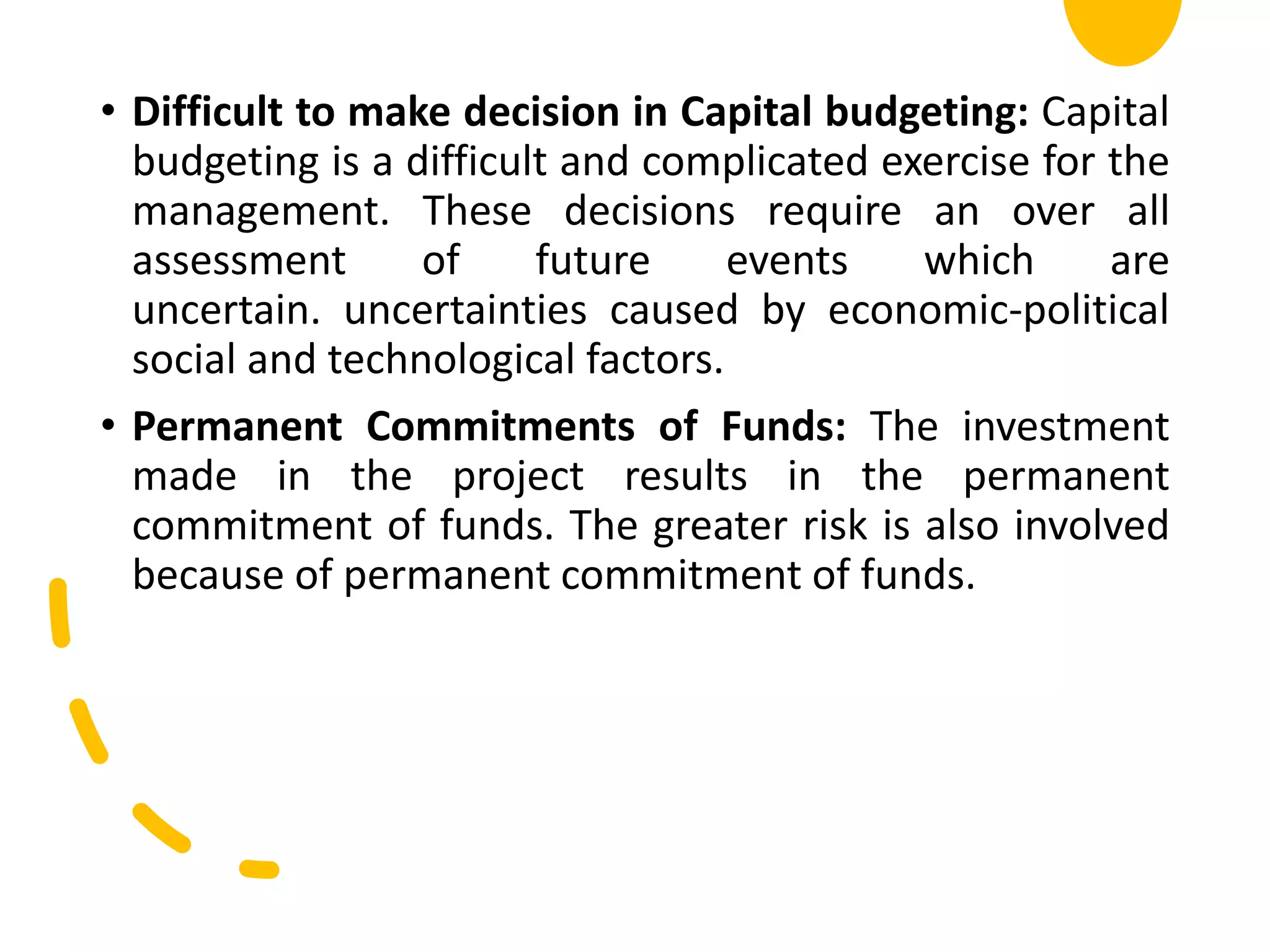
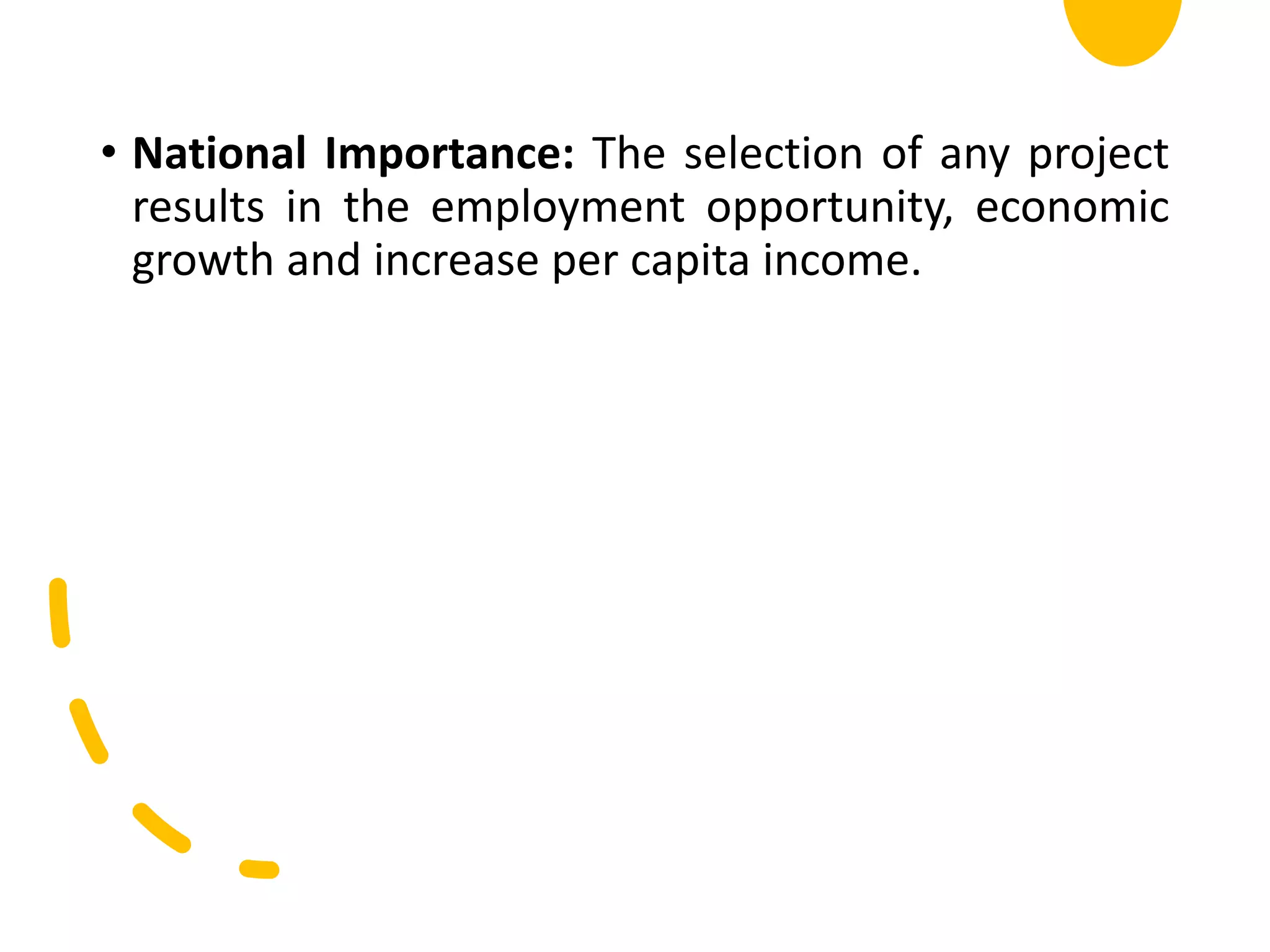
![Techniques of
Capital Budgeting
A] Traditional Methods
1. Pay Back Method.
2. Accounting rate of return.
B] Discounted Cash Flow Methods (DCF)
1. Net Present Value Method (NPV)
2. Internal Rate of Return (IRR)
3. Profitability index.](https://image.slidesharecdn.com/unit-5fmetc1-230728095846-9f2577f6/75/UNIT-5-FM-ETC1-pptx-54-2048.jpg)
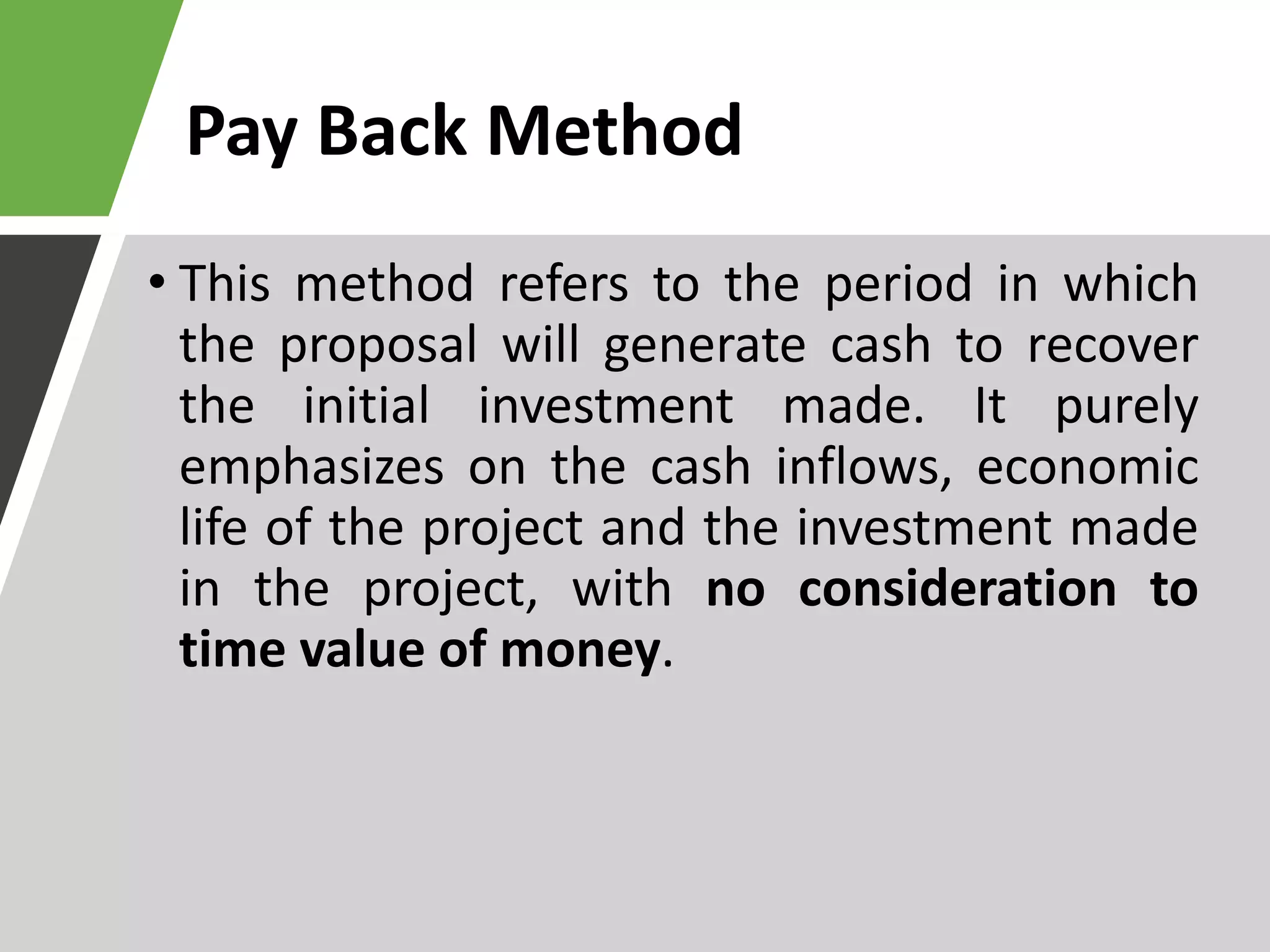
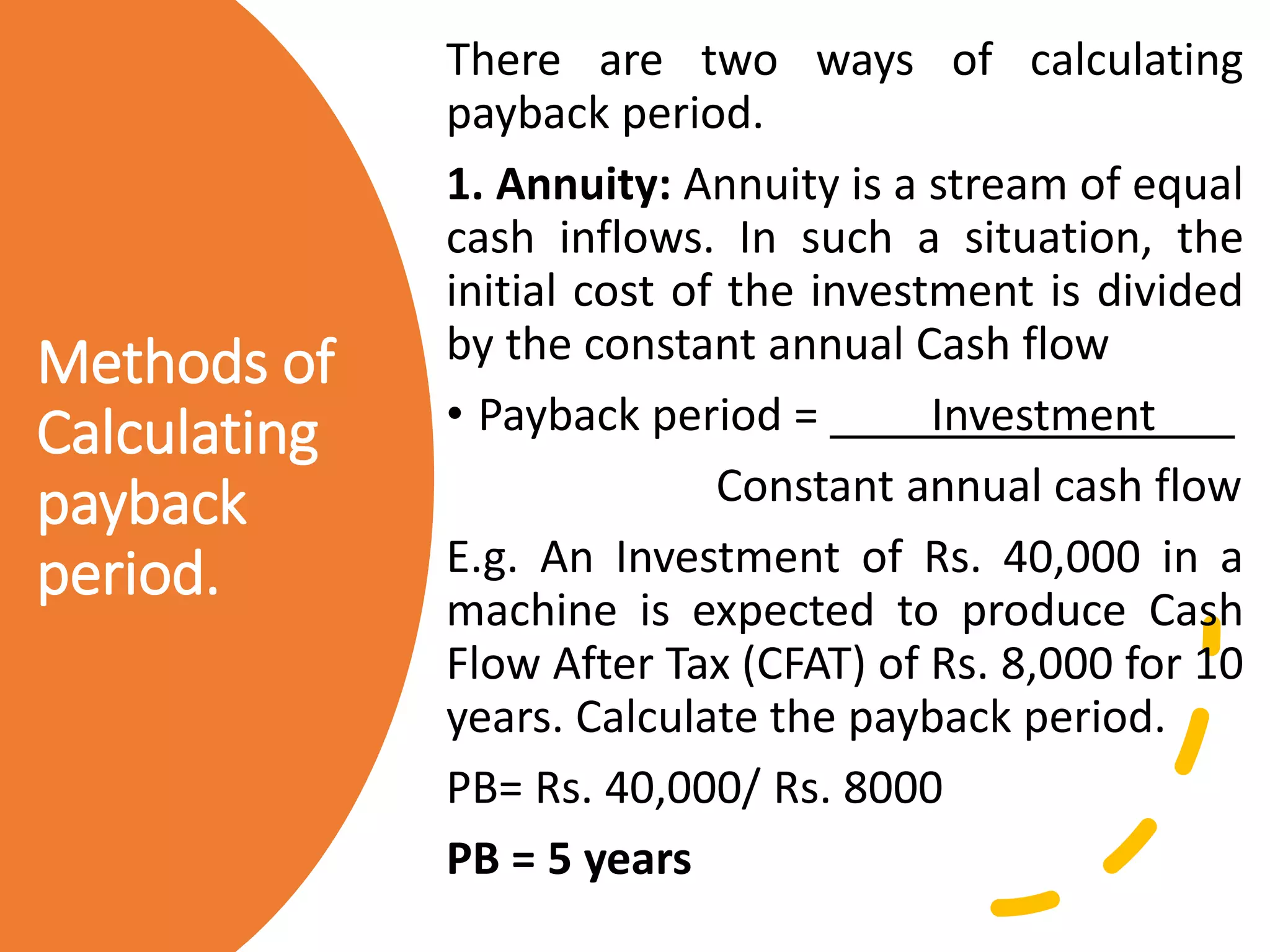
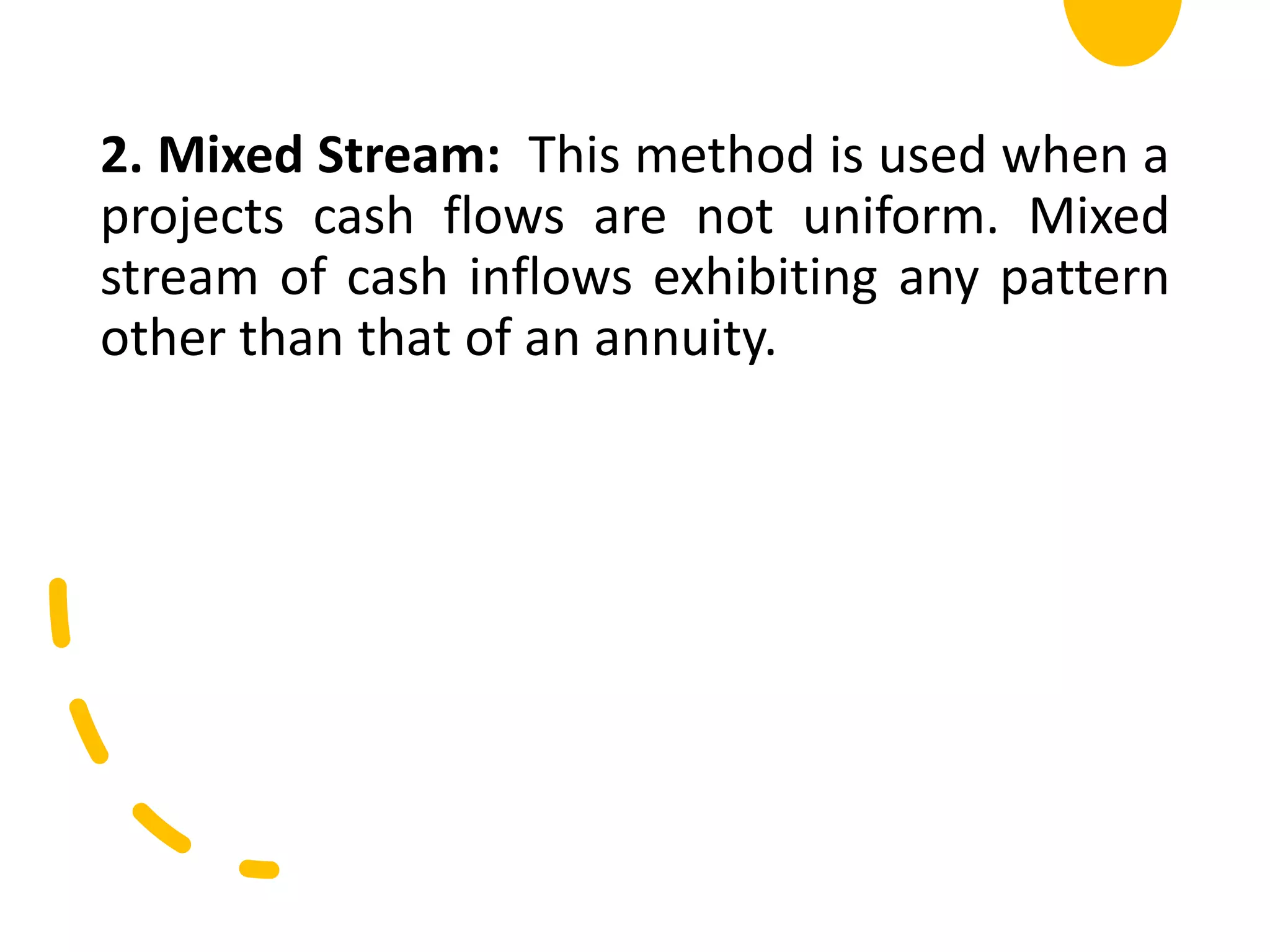

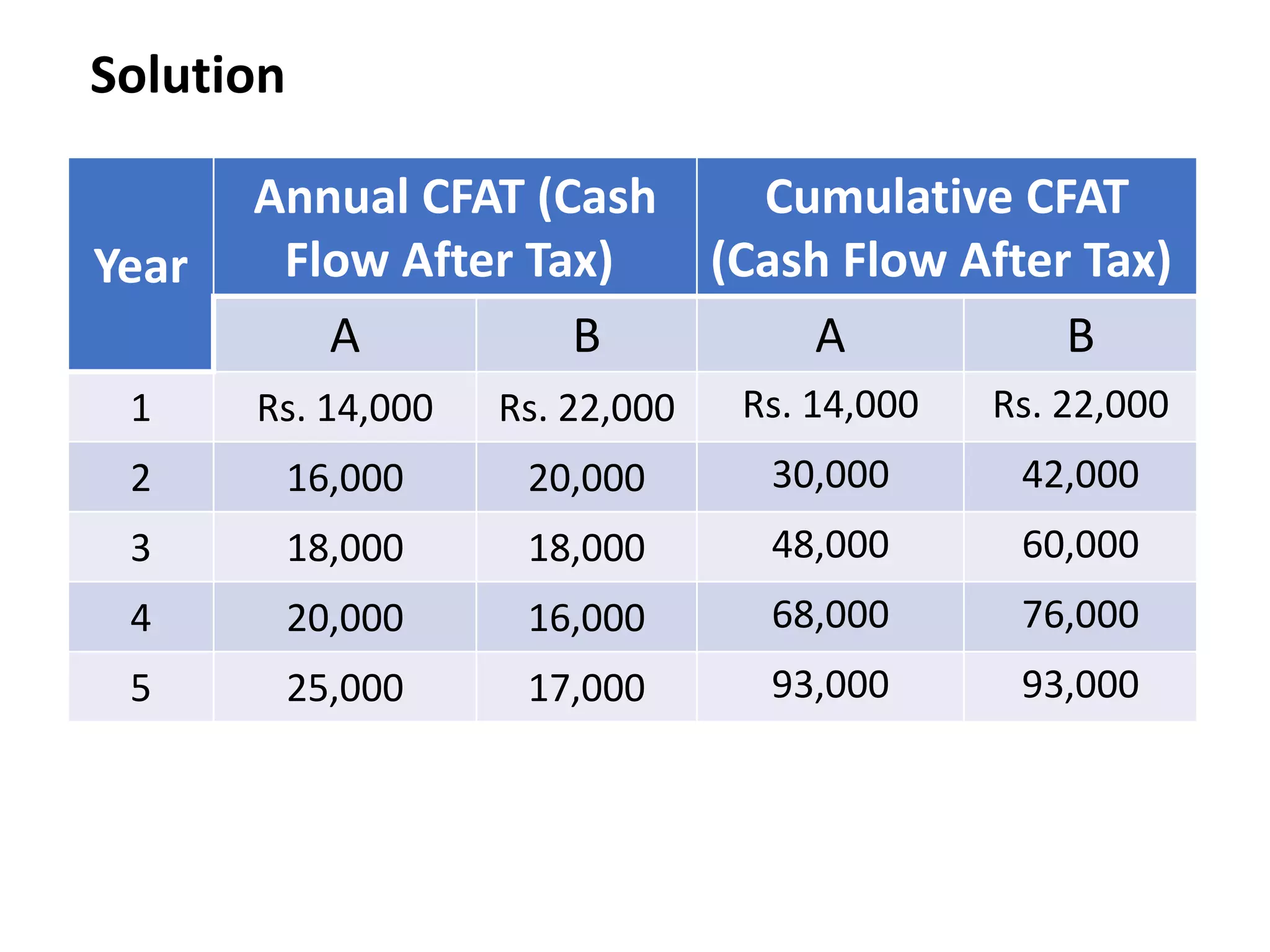
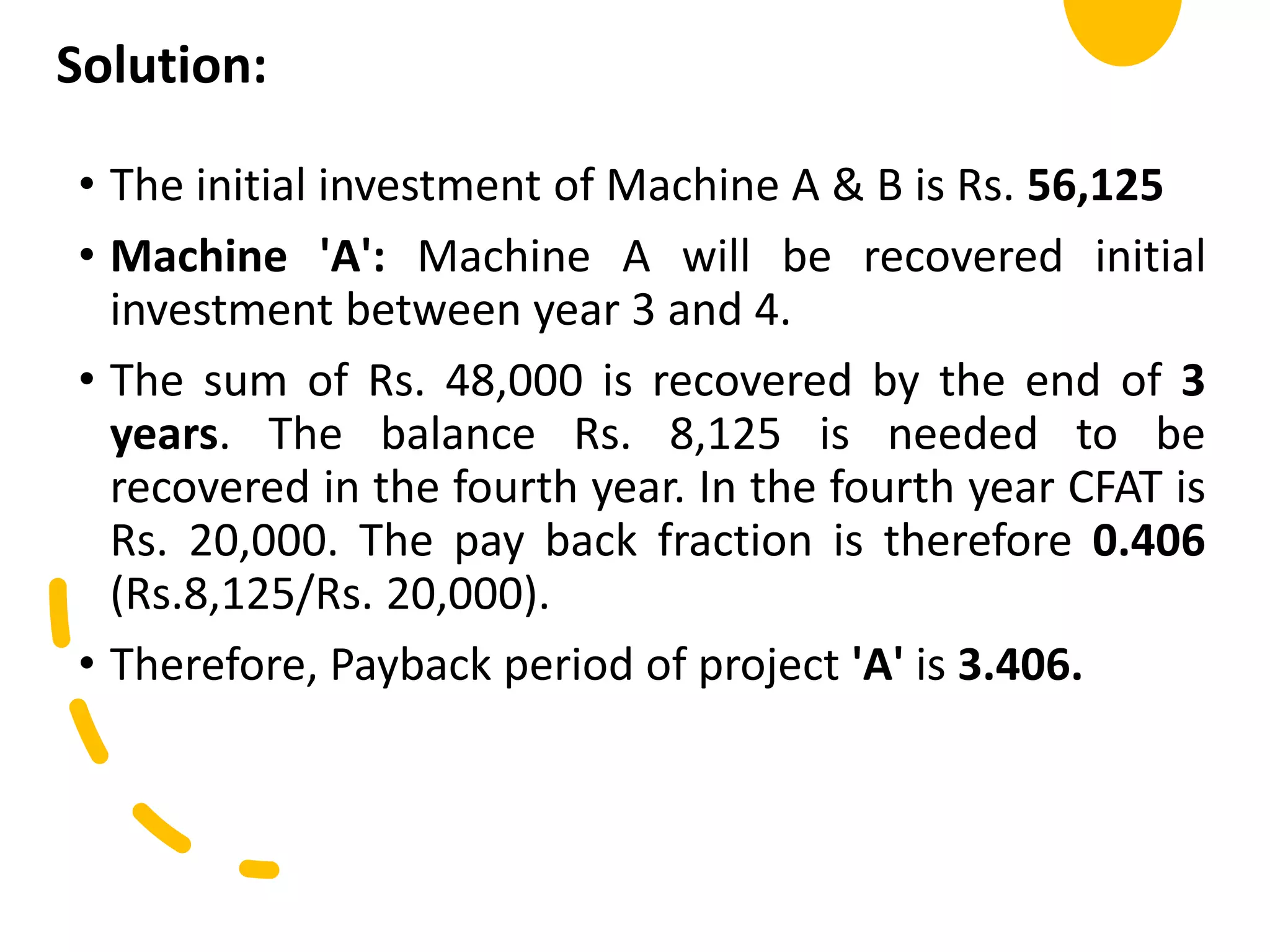
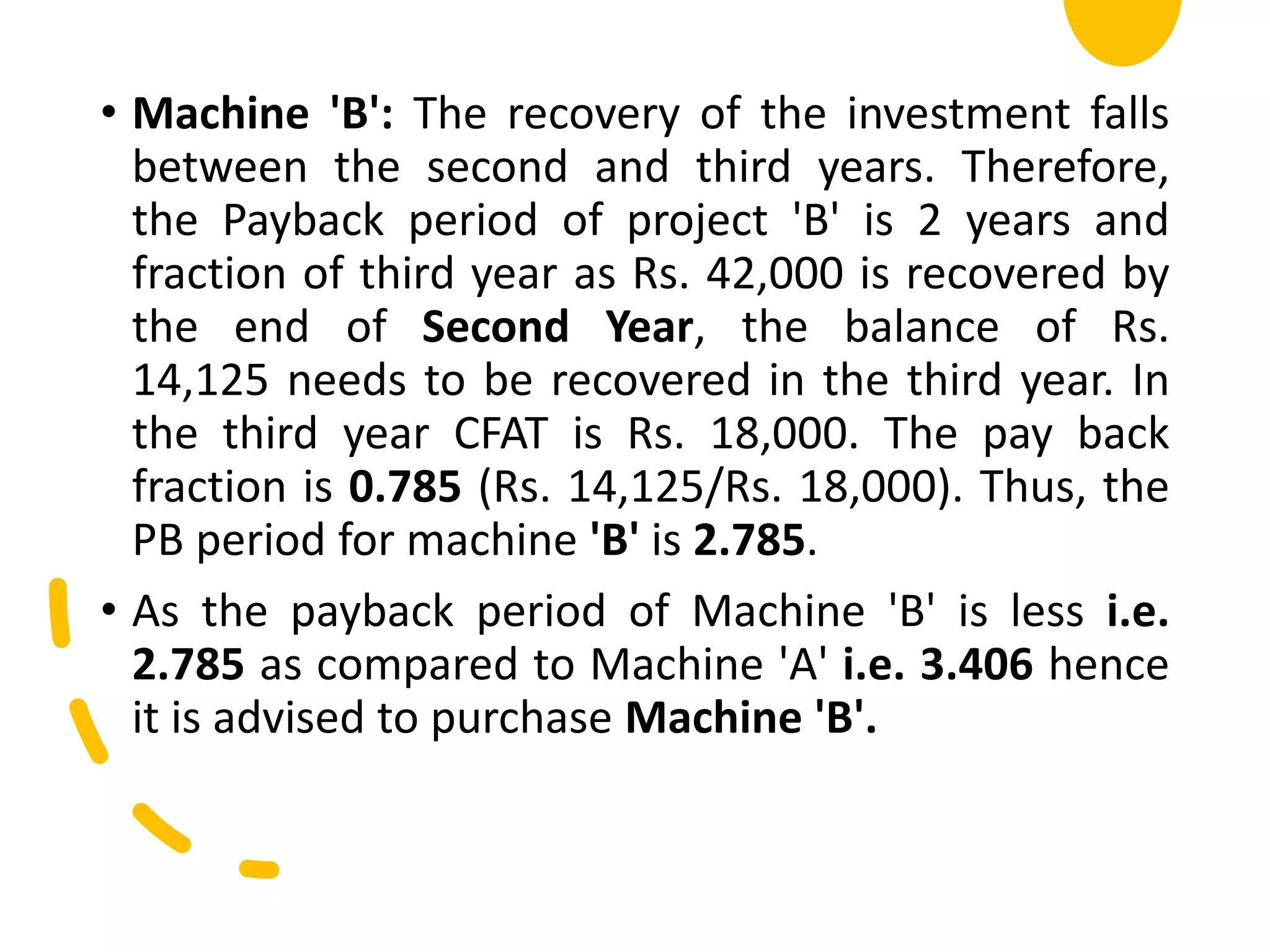

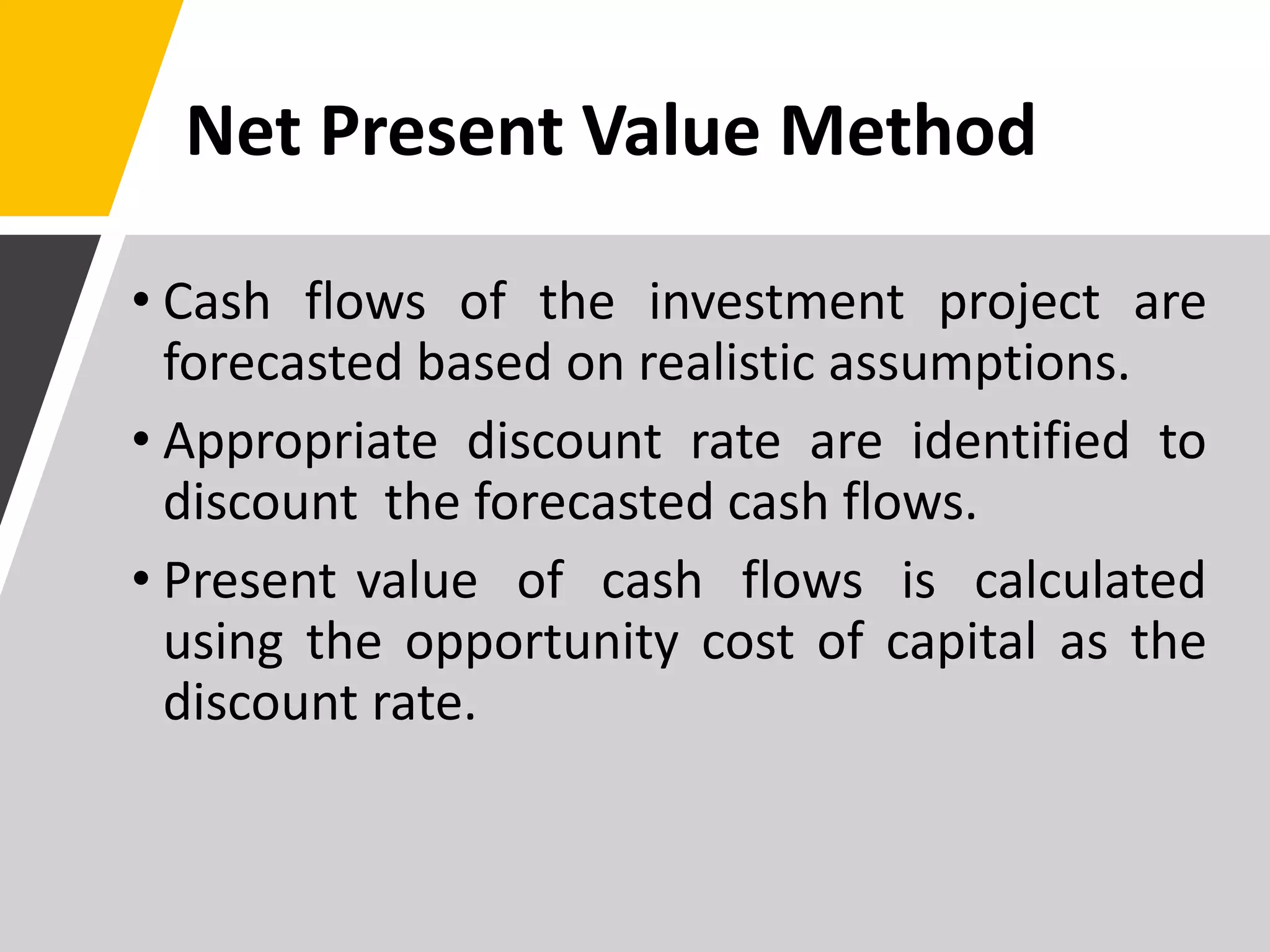
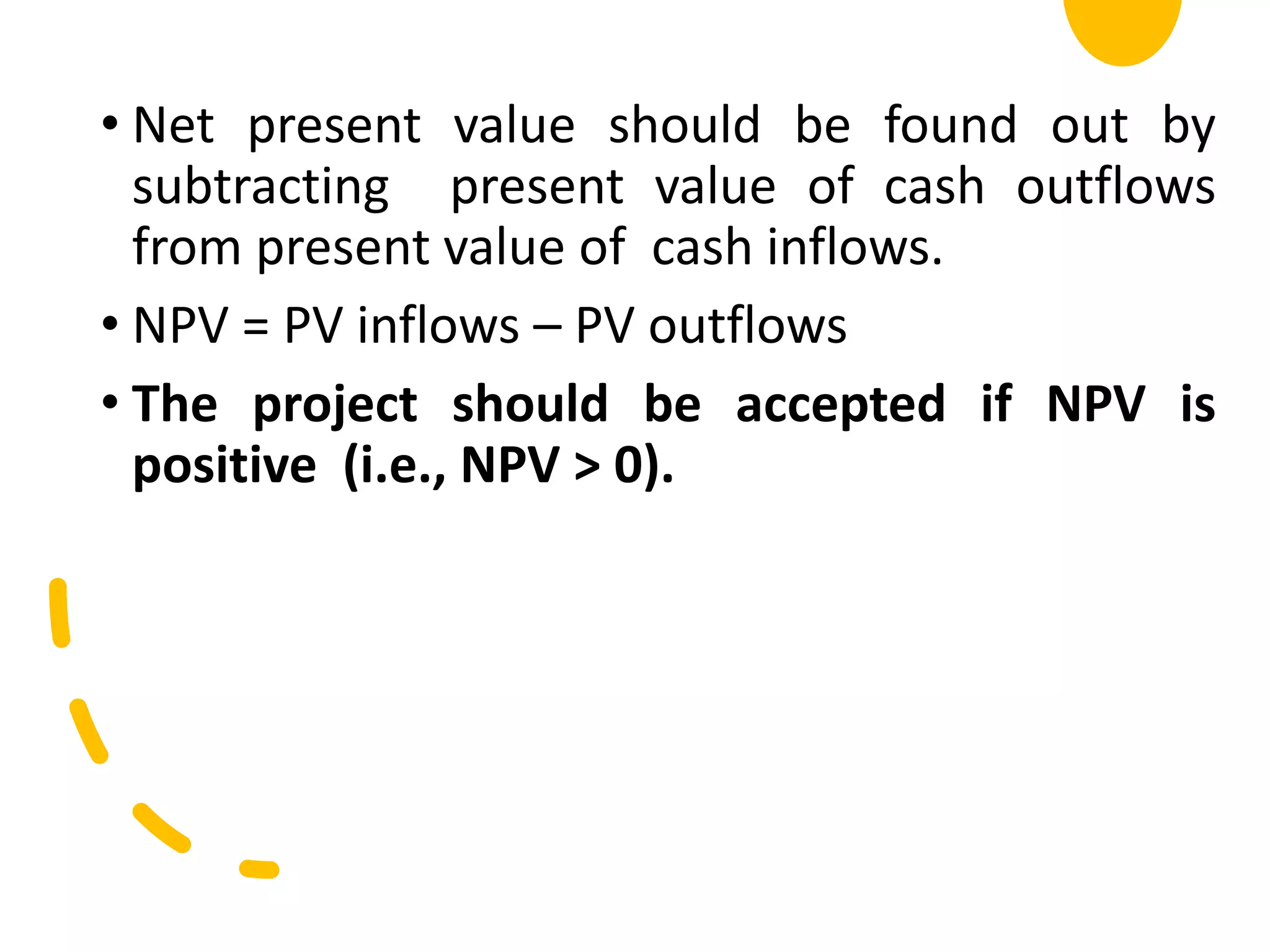

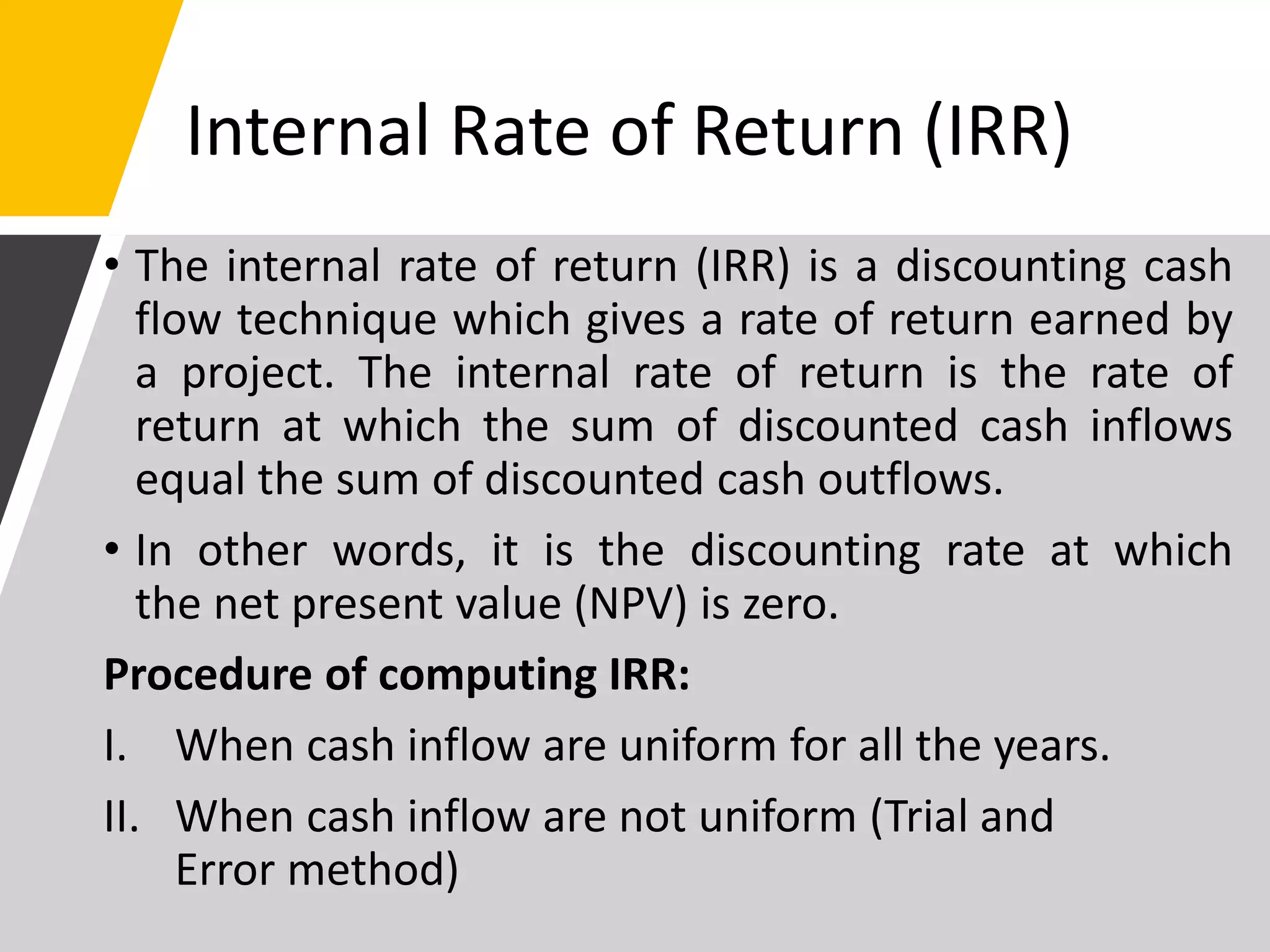
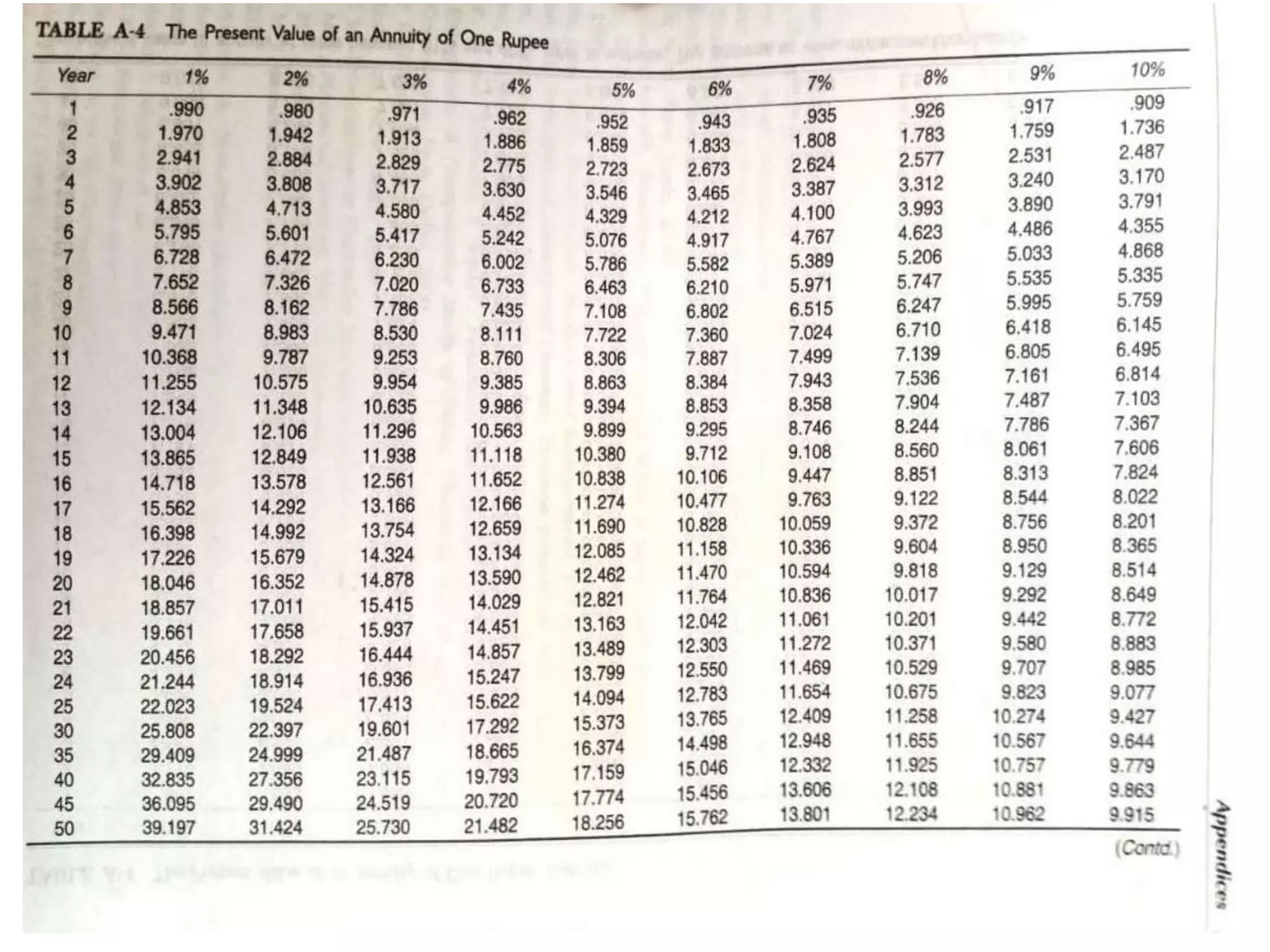

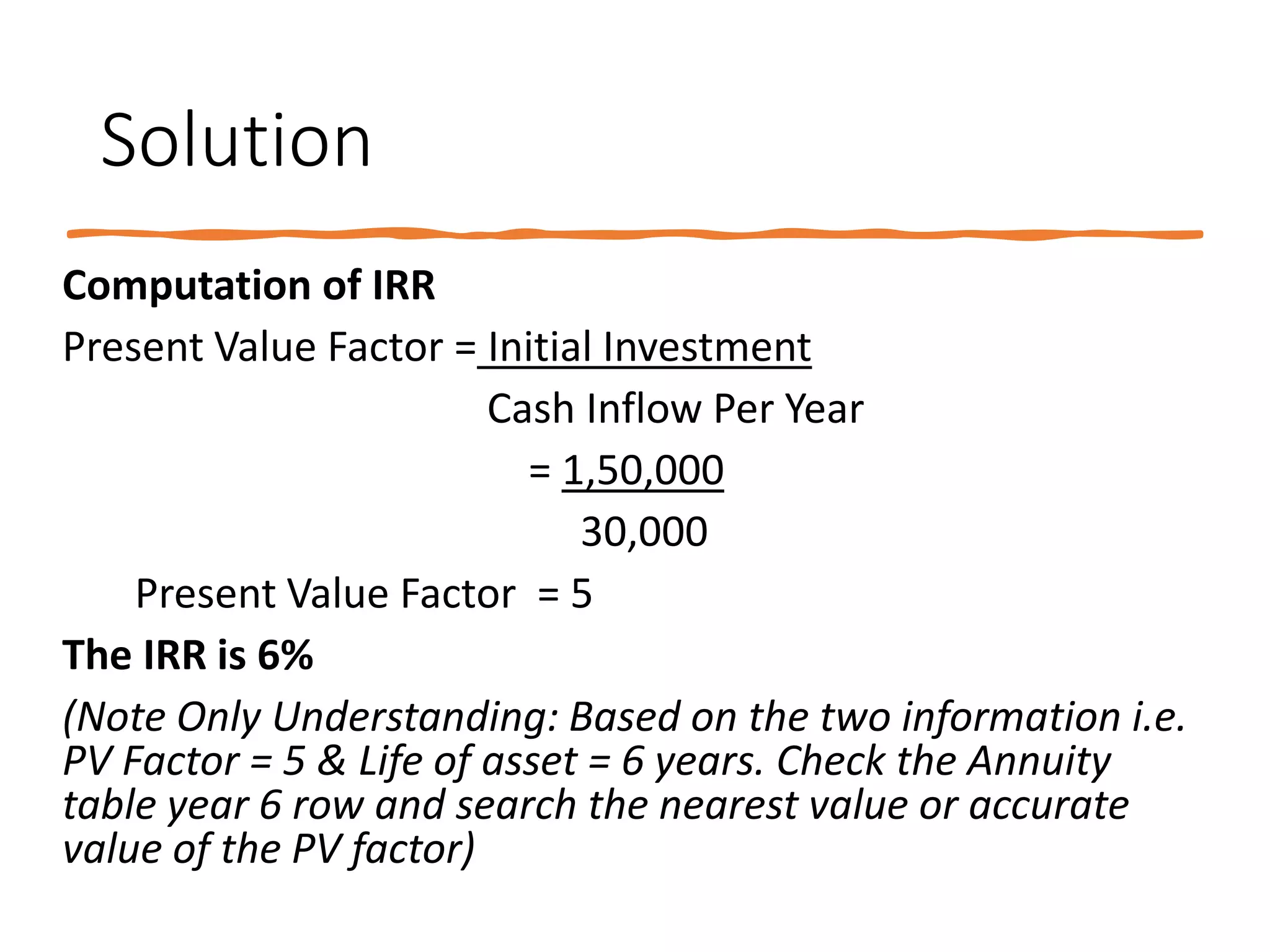
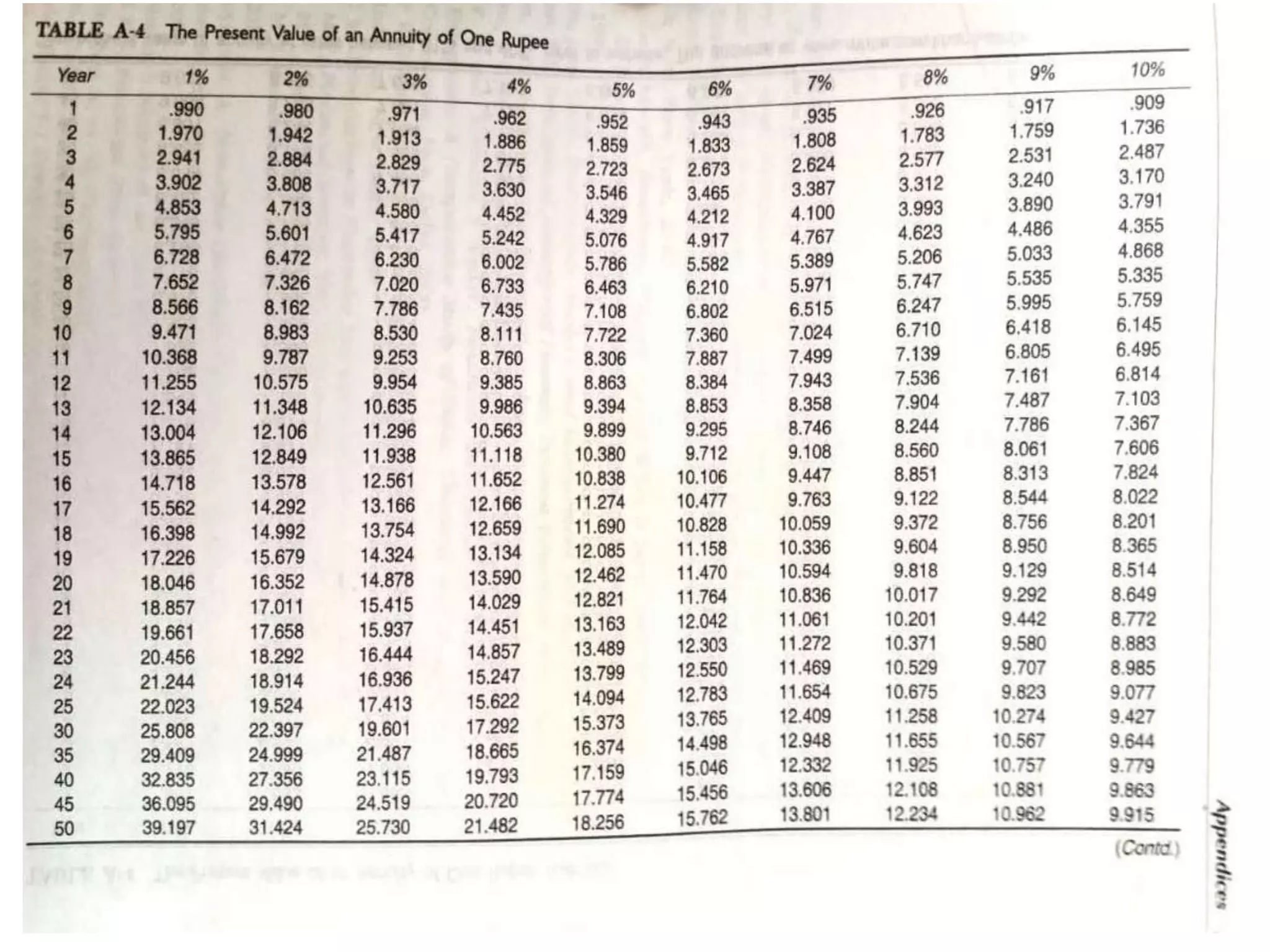
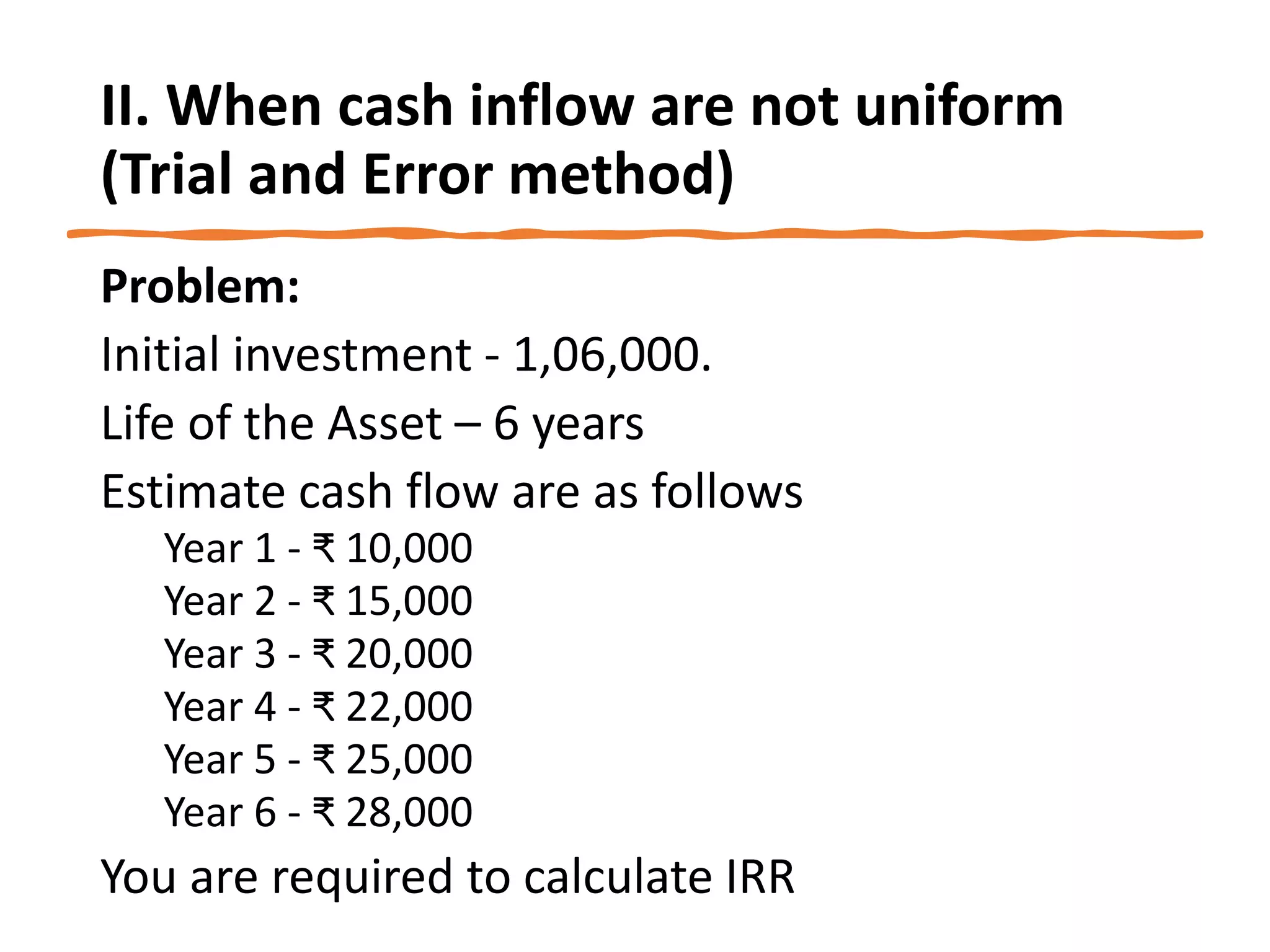
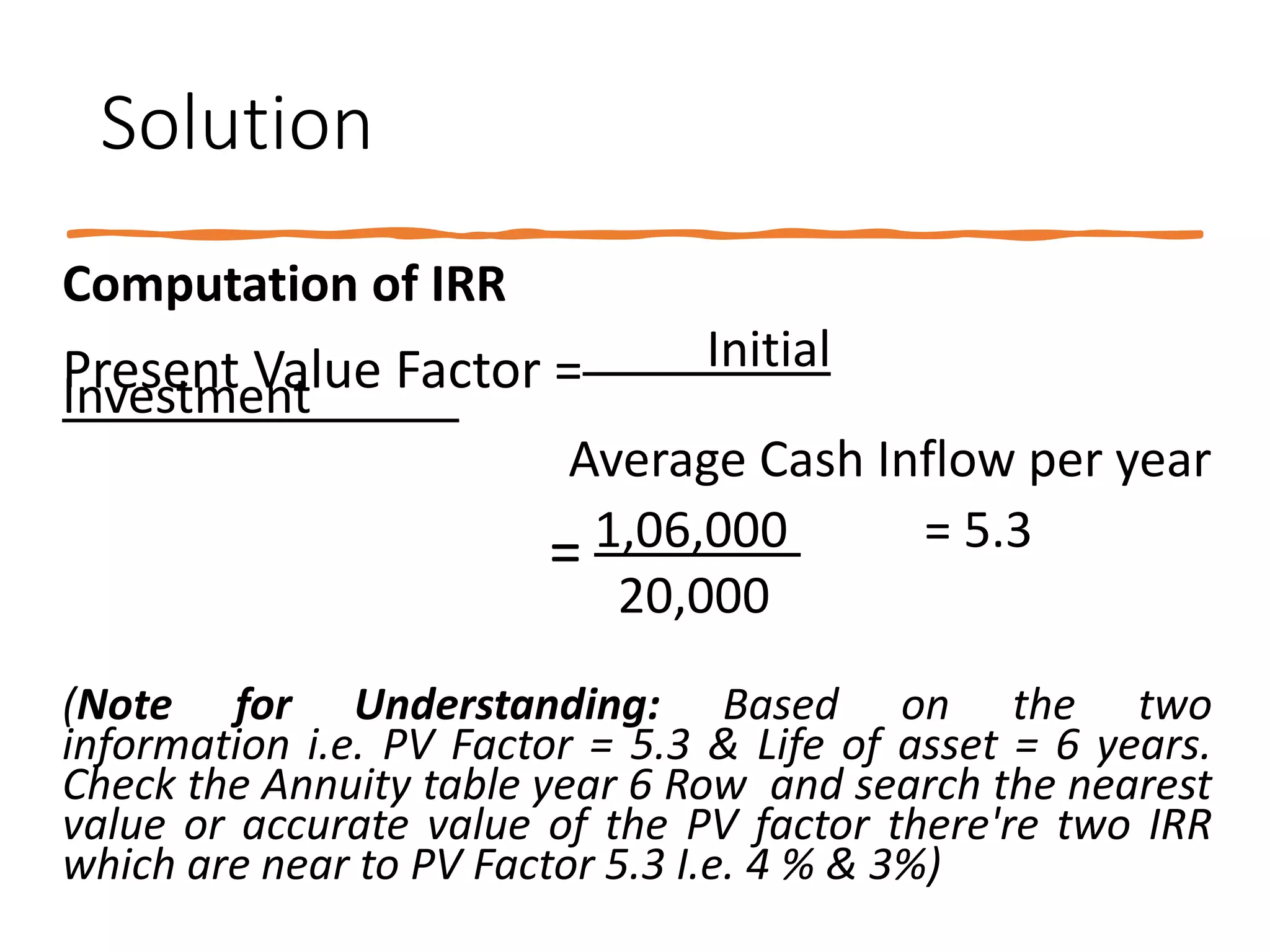
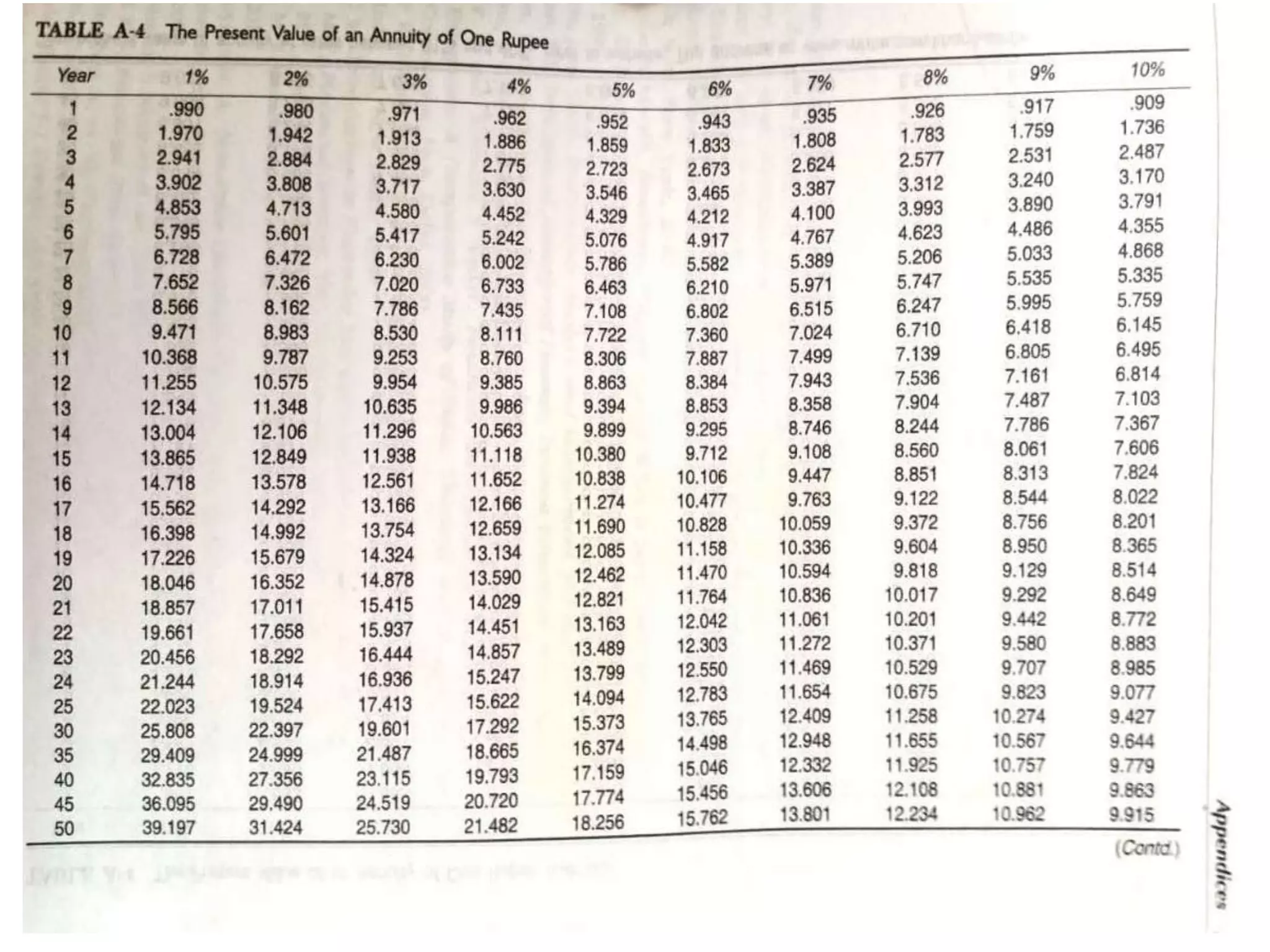
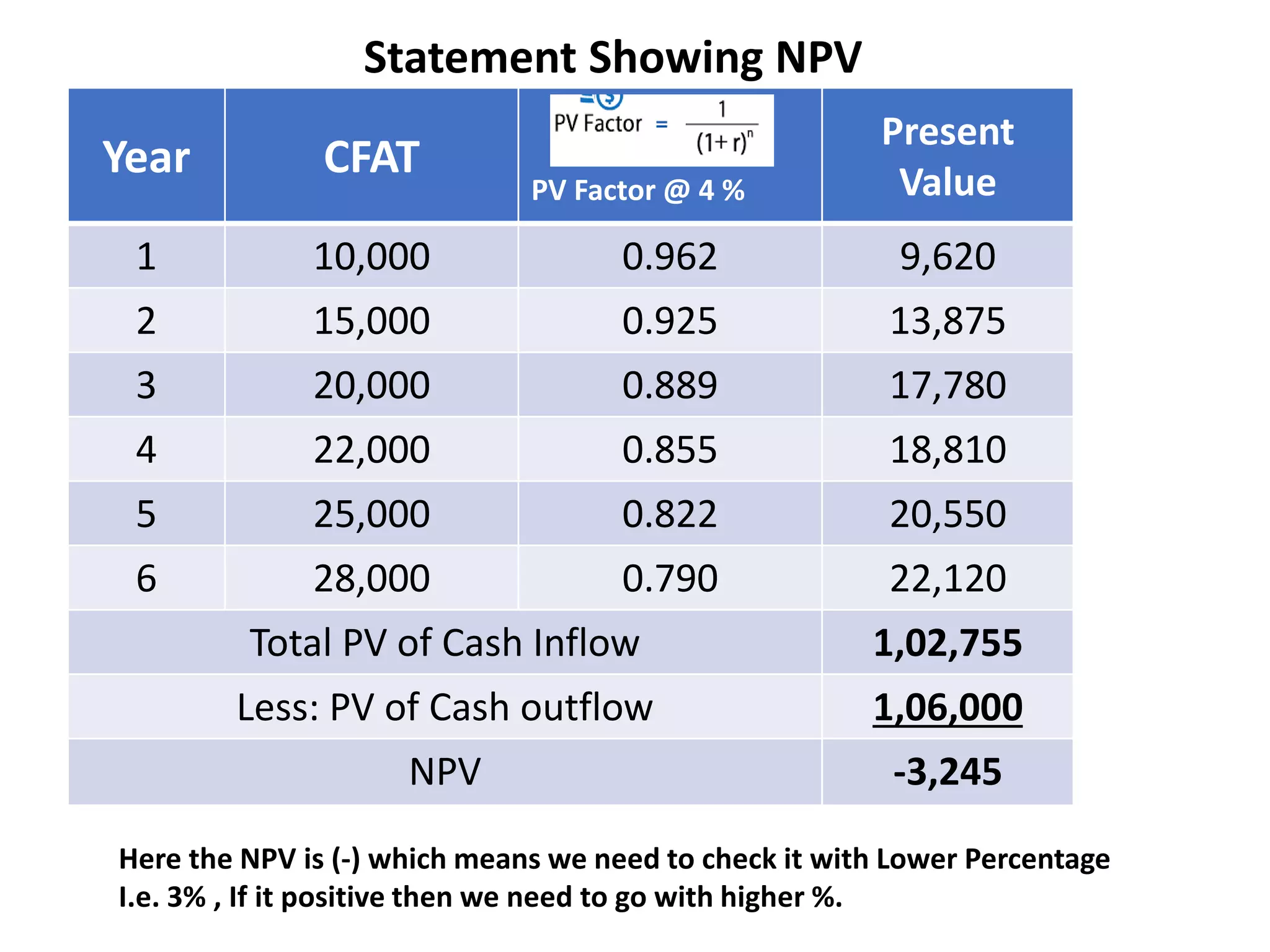
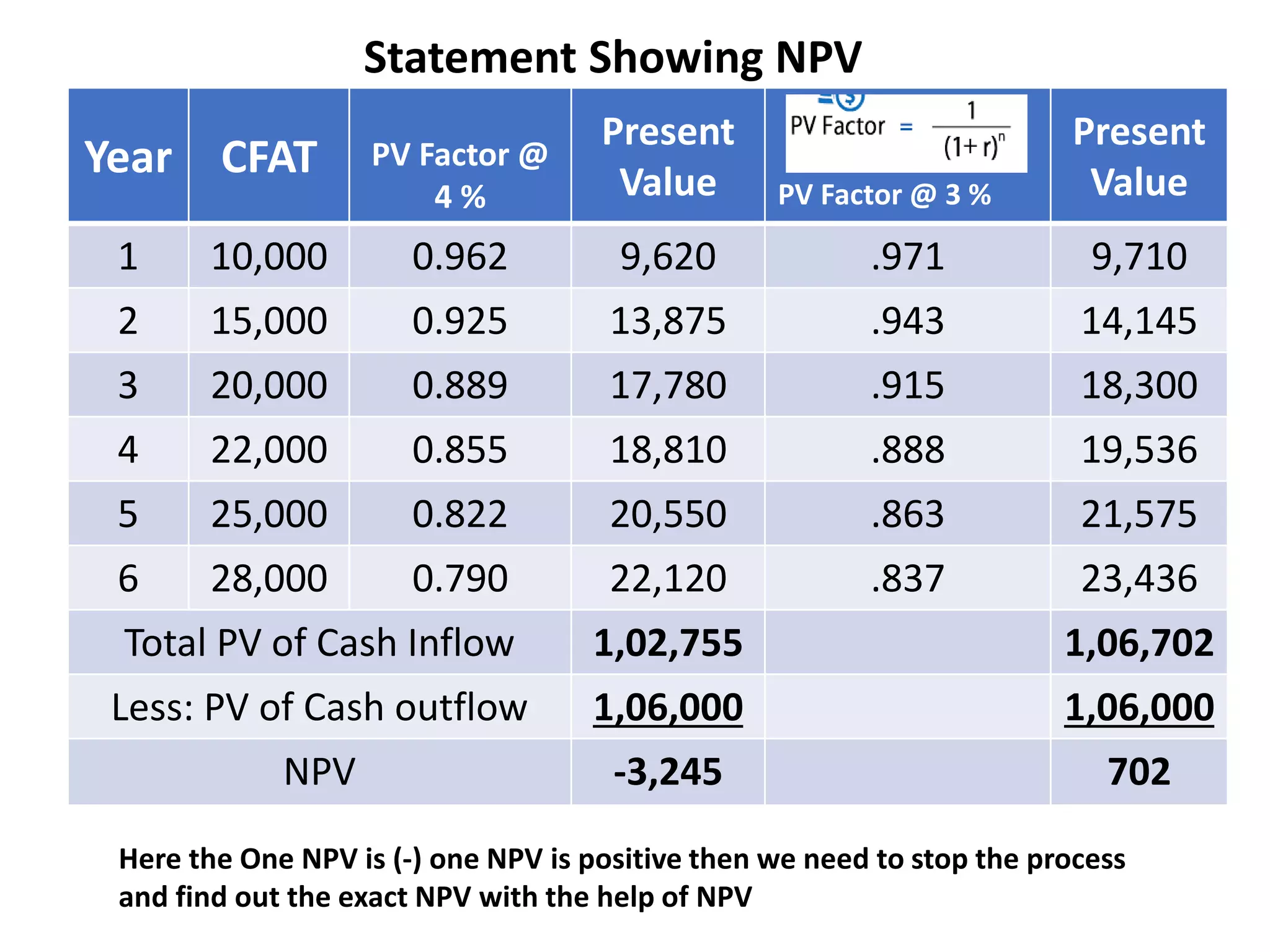
![Calculation of Exact IRR
IRR = 3% + 702 x [4% - 3%]
1,06702 - 1,02,755
IRR = 3% + 702 x 1%
3,947
IRR = 3.18%](https://image.slidesharecdn.com/unit-5fmetc1-230728095846-9f2577f6/75/UNIT-5-FM-ETC1-pptx-76-2048.jpg)
